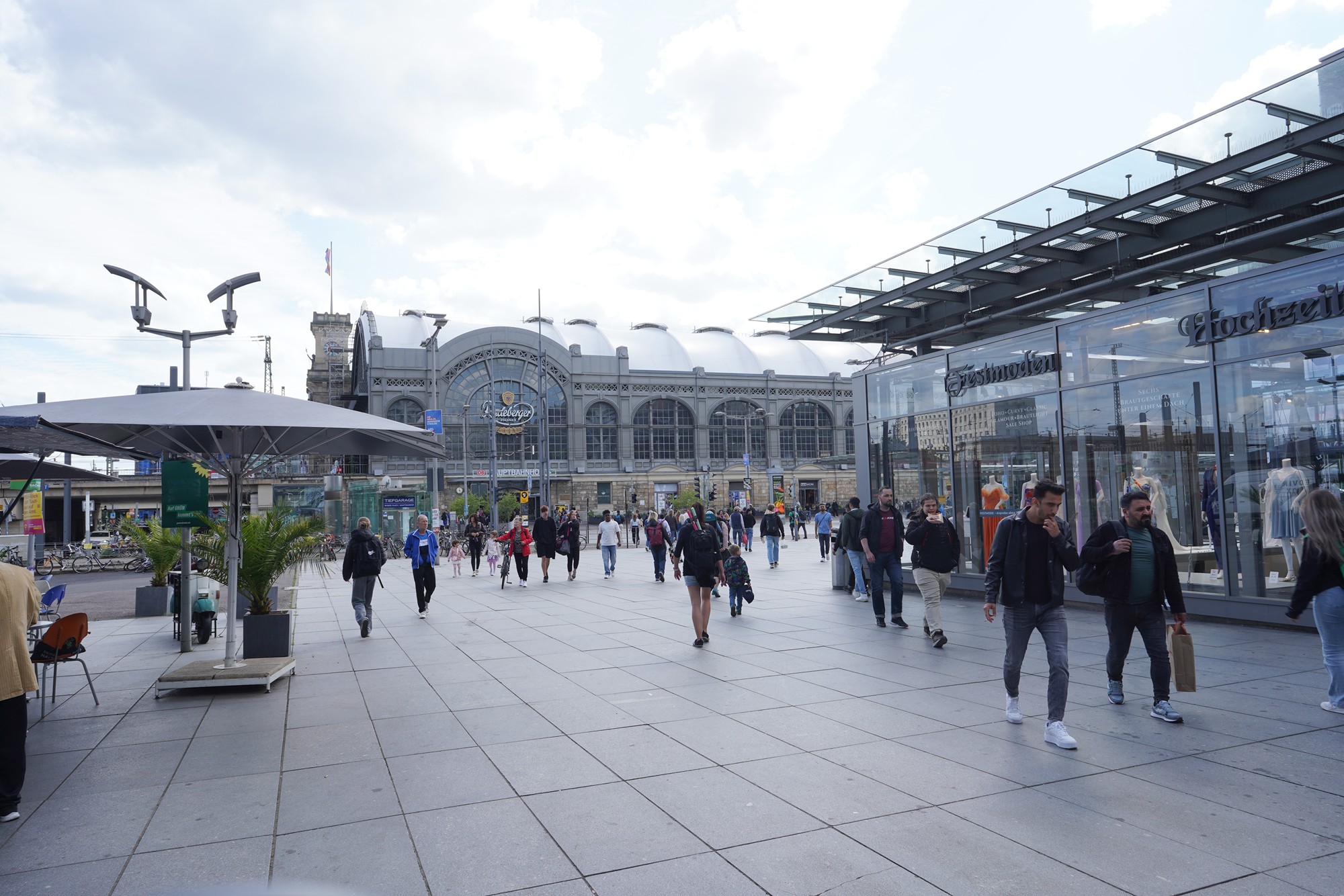Dresden Walk, Germany
Dresden, the capital of the Saxony region in eastern Germany, is a city renowned for its baroque architecture, rich cultural heritage, and significant historical importance. 930
Old Masters Picture Gallery: Theaterplatz 1, 01067 Dresden, Germany
Dresden Castle: Taschenberg 2, 01067 Dresden, Germany
Frauenkirche Dresden: Neumarkt, 01067 Dresden, Germany
Date Picture Taken: June, 2024
It is often referred to as the “Florence on the Elbe” because of its magnificent art collections and the beauty of its buildings along the Elbe River. Dresden’s history includes both periods of great artistic and architectural achievement and tragic devastation, especially during World War II.
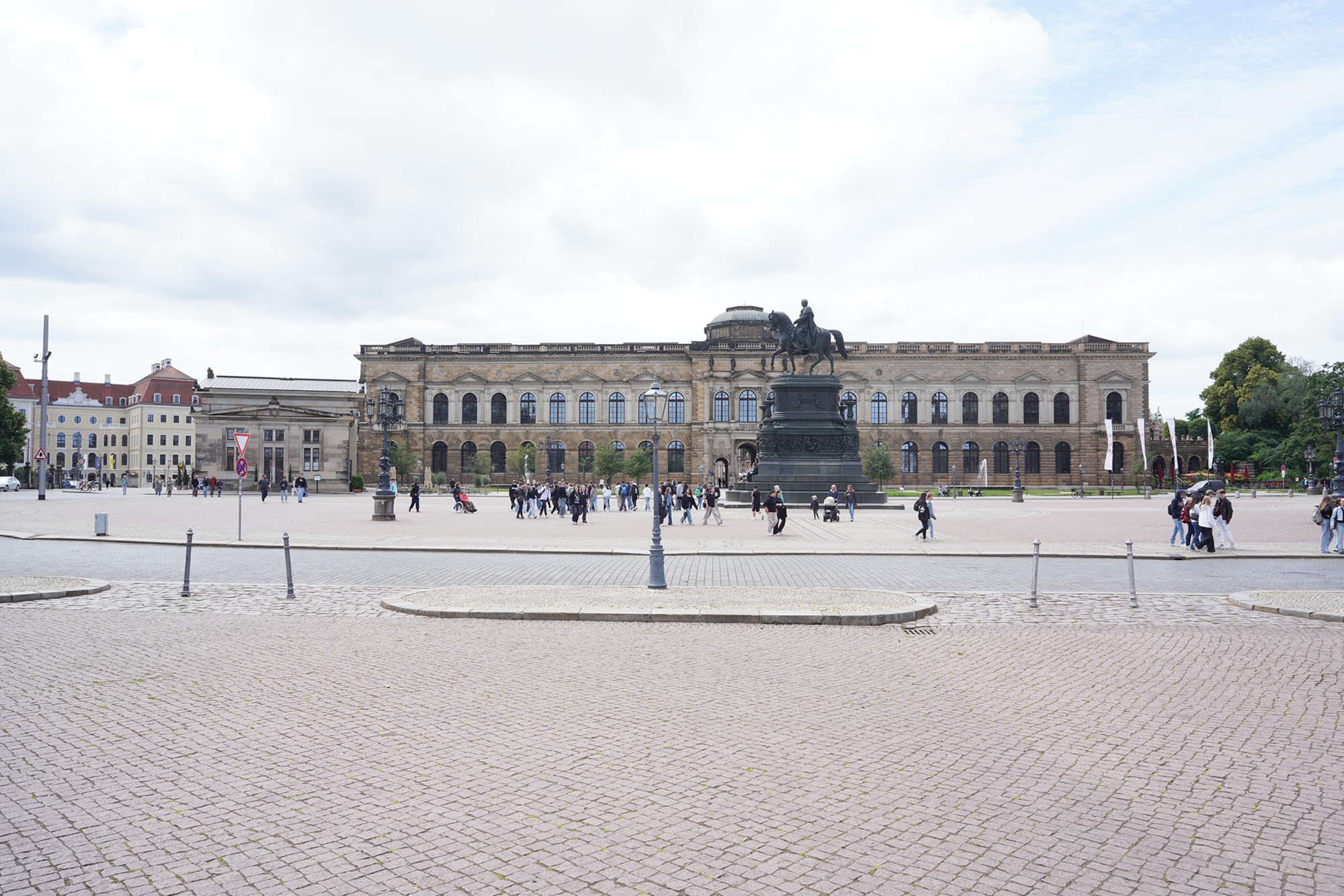
I took the train from Berlin to Dresden. It was straightforward but took about two hours. From the Dresden train station, I took a tram to come to the Theaterplatz.
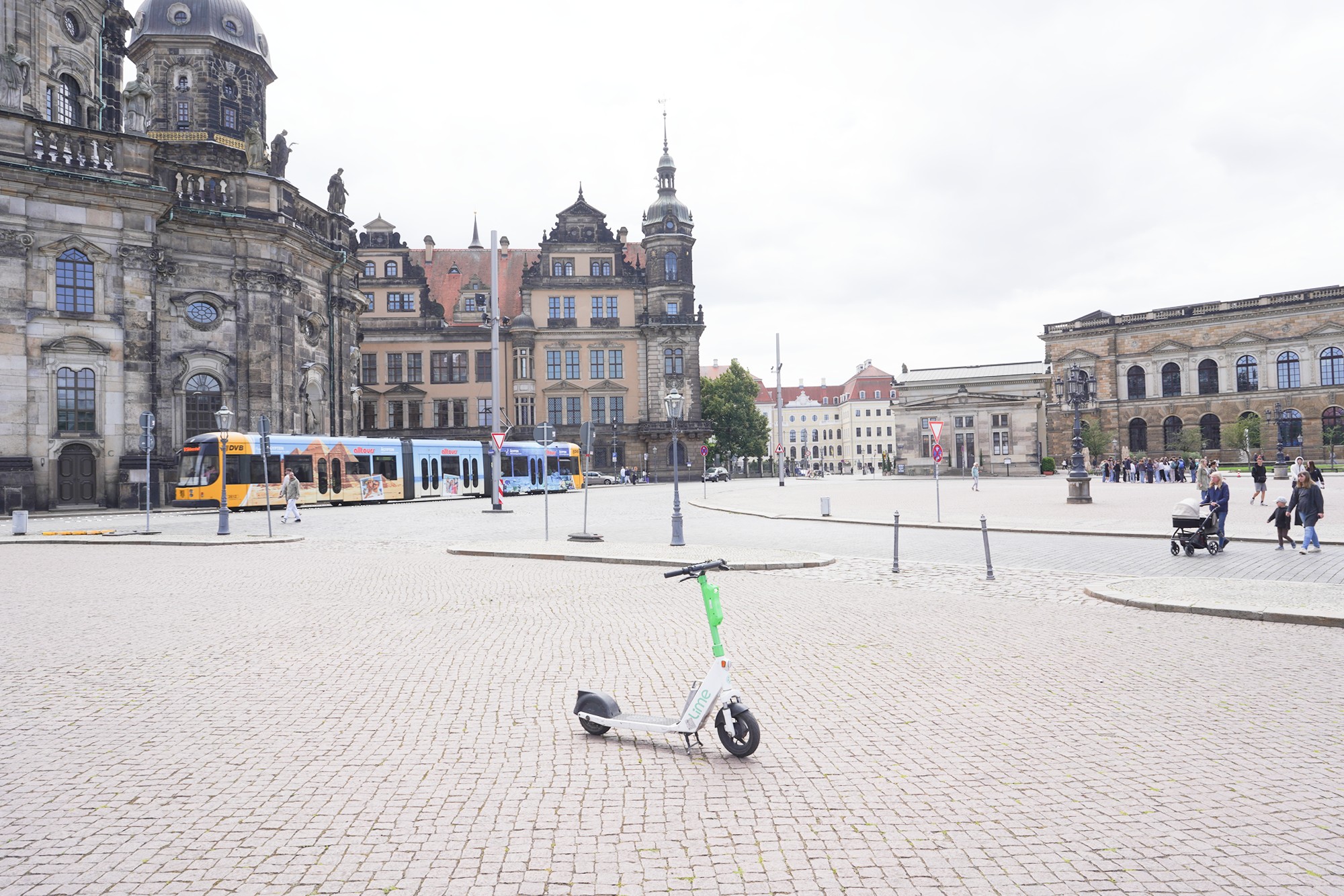
Theaterplatz is one of the most beautiful and historically significant squares in Dresden. It is located in the heart of the city’s old town and is surrounded by its most important landmarks and cultural institutions, making it a central hub for visitors to experience the city’s rich architectural and artistic heritage.
Kathedrale Sanctissimae Trinitatis Catholic Church – The Kathedrale Sanctissimae Trinitatis, also known as the Dresden Cathedral or Hofkirche, is the largest church in Dresden and one of the most significant baroque buildings in the city. Located near Theaterplatz and close to the Dresden Castle, this Catholic cathedral stands out as a prominent symbol of both the religious and architectural history of Dresden.
The church was built between 1739 and 1755 by architect Gaetano Chiaveri in the baroque style. It was commissioned by Augustus III of Poland, who was also the Elector of Saxony. Augustus was Catholic, but most of Saxony was Protestant, so he needed a Catholic church for his court in the predominantly Lutheran city.
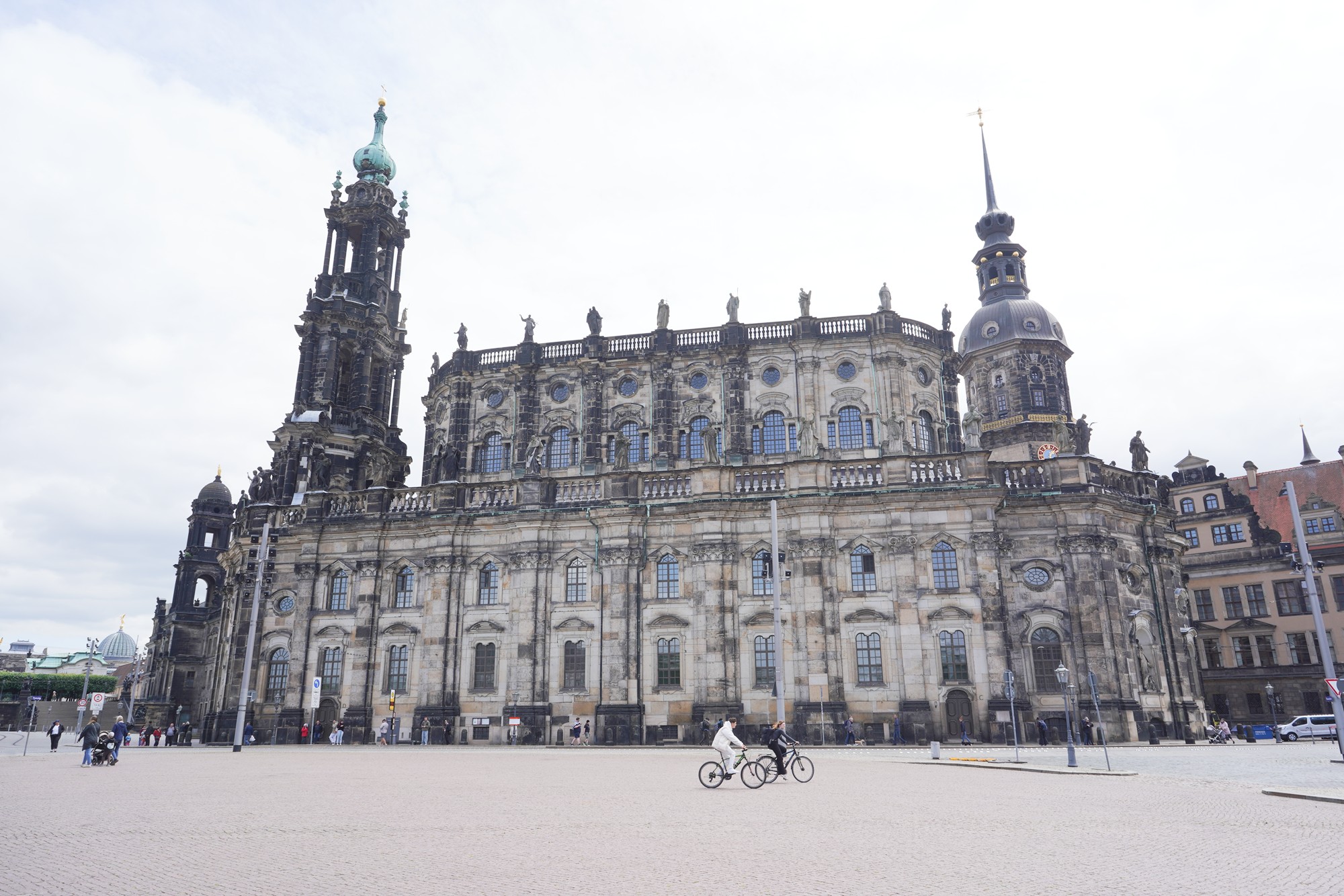
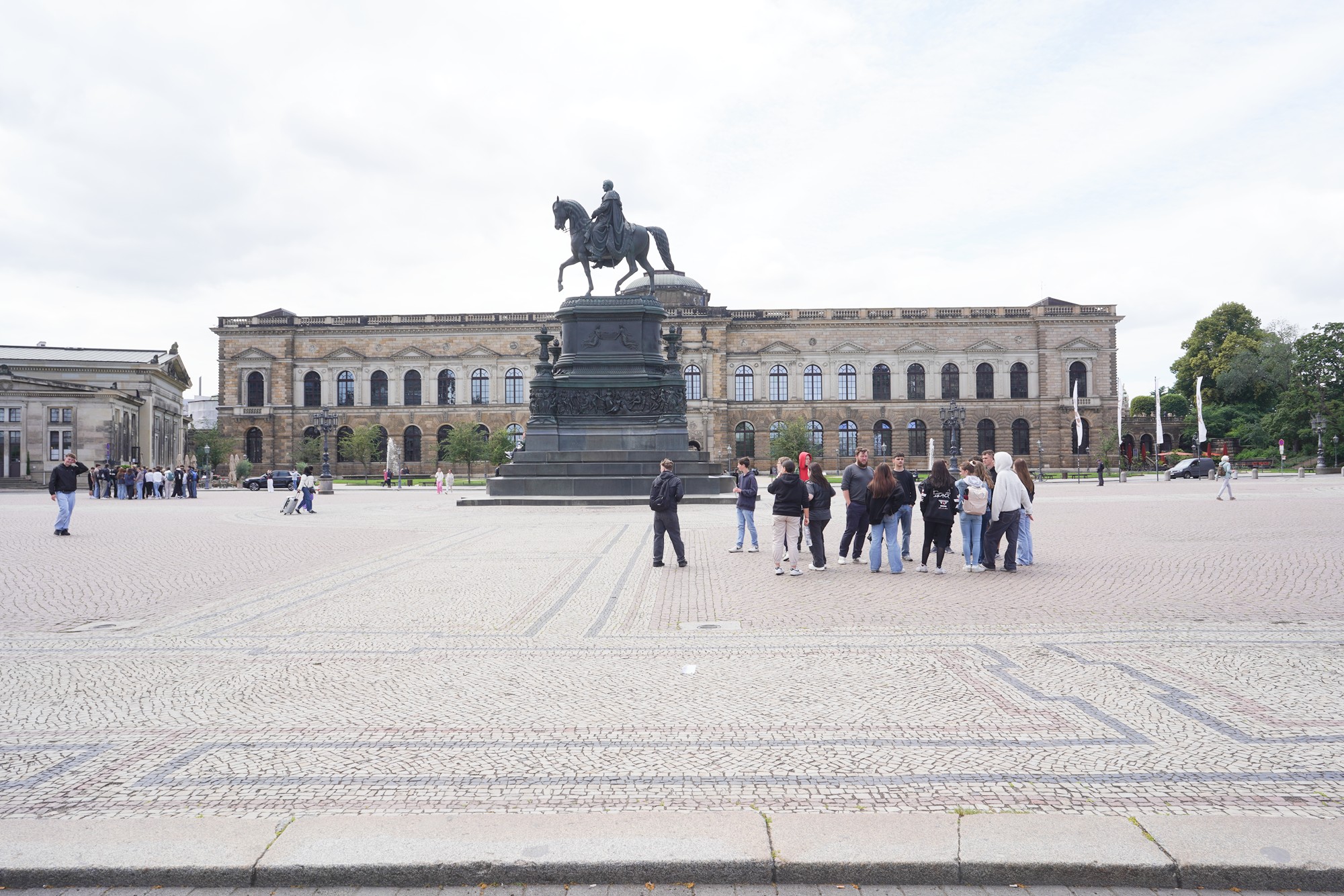
Statue of King Johann – In the center of Theaterplatz stands an equestrian statue of King John of Saxony (König Johann), who reigned in the mid-19th century. The statue was erected in 1889 and serves as a reminder of Saxony’s royal heritage.
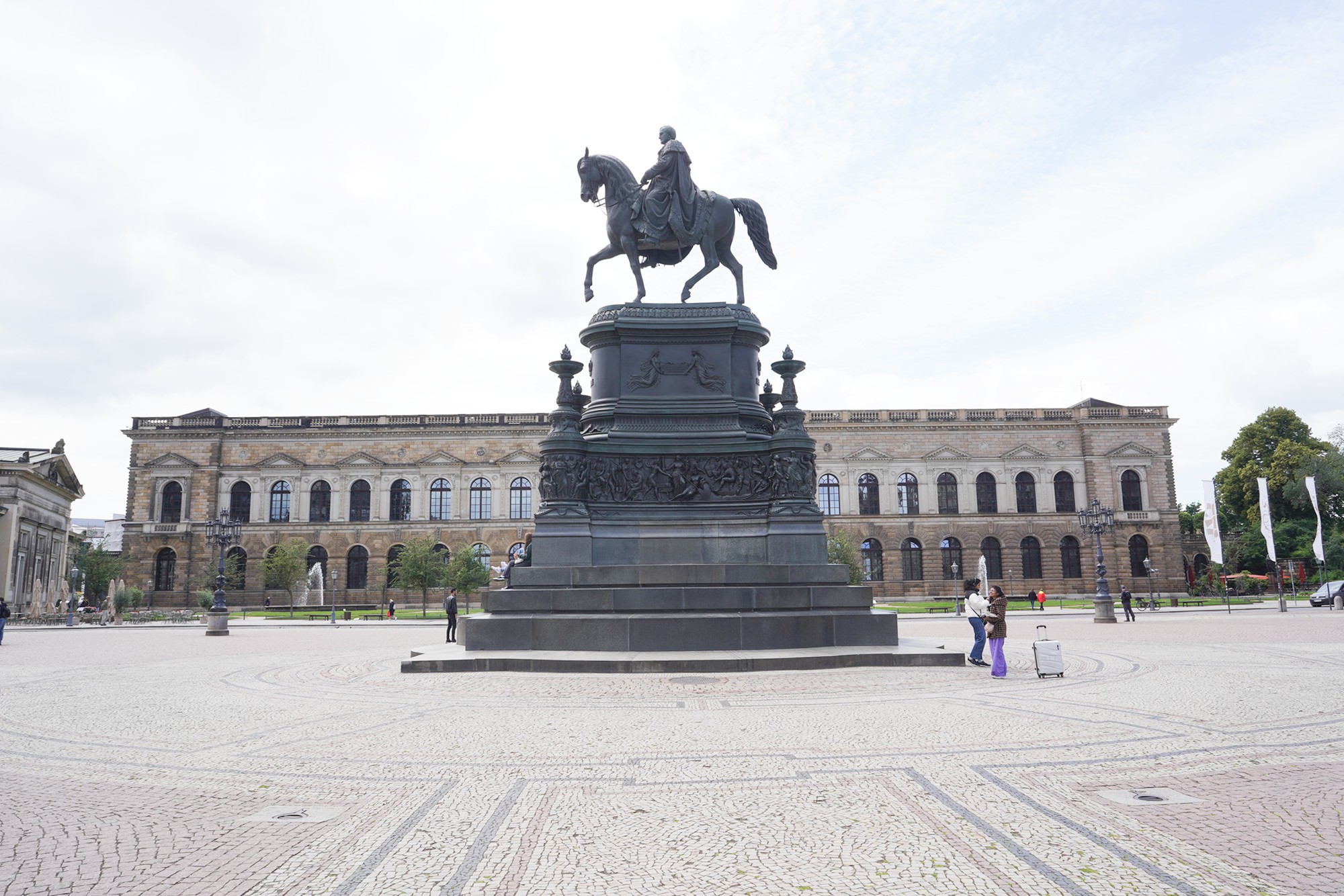
Semperoper Dresden Opera House – The Semper Opera House is one of Europe’s most renowned opera houses, located directly on Theaterplatz. Designed by the famous architect Gottfried Semper, it is a masterpiece of neo-Renaissance architecture.
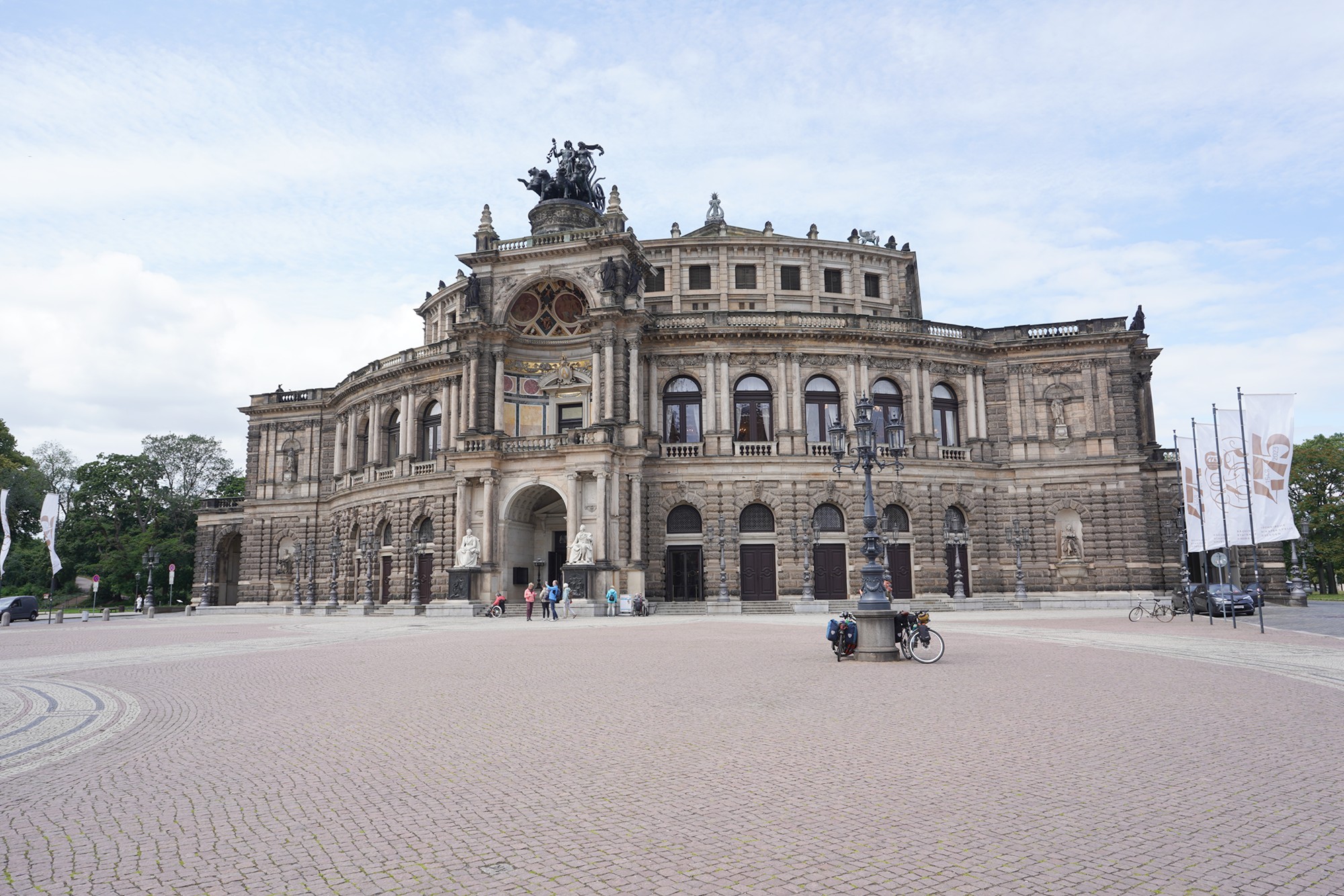
Adjacent to Theaterplatz is the Zwinger Palace, a baroque masterpiece that was once a royal festival ground and now houses several important museums, including the Old Masters Picture Gallery and the Porcelain Collection.
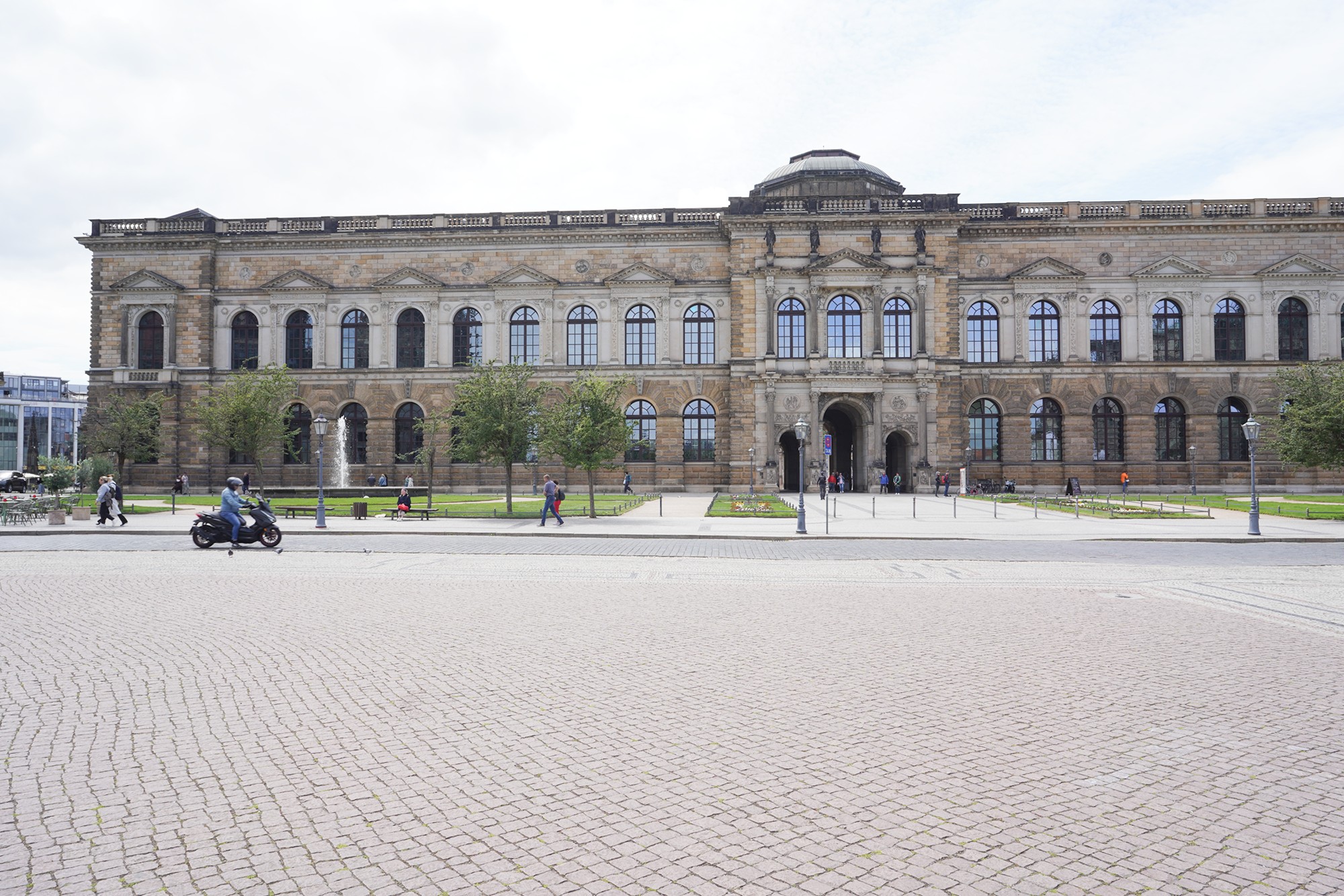
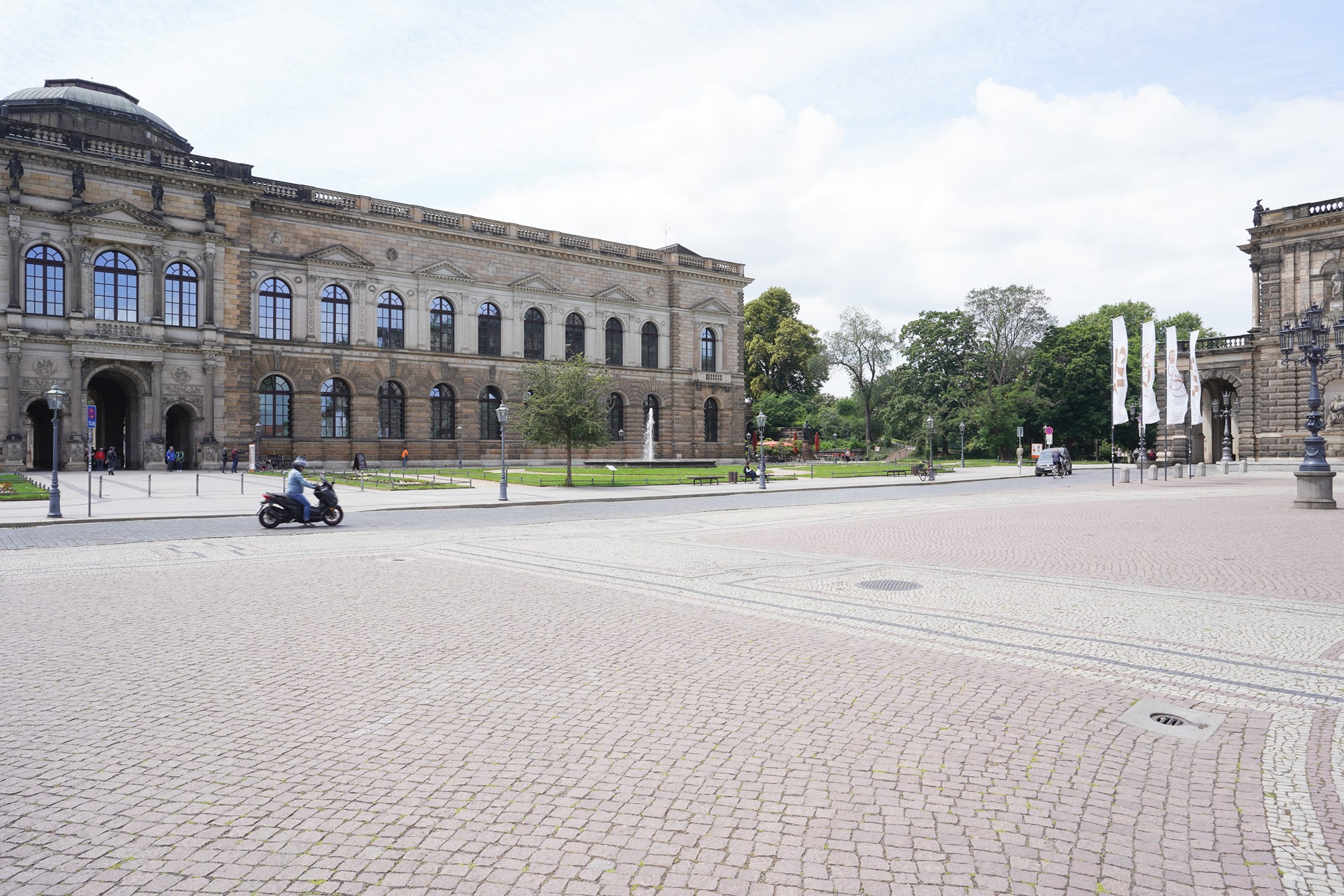
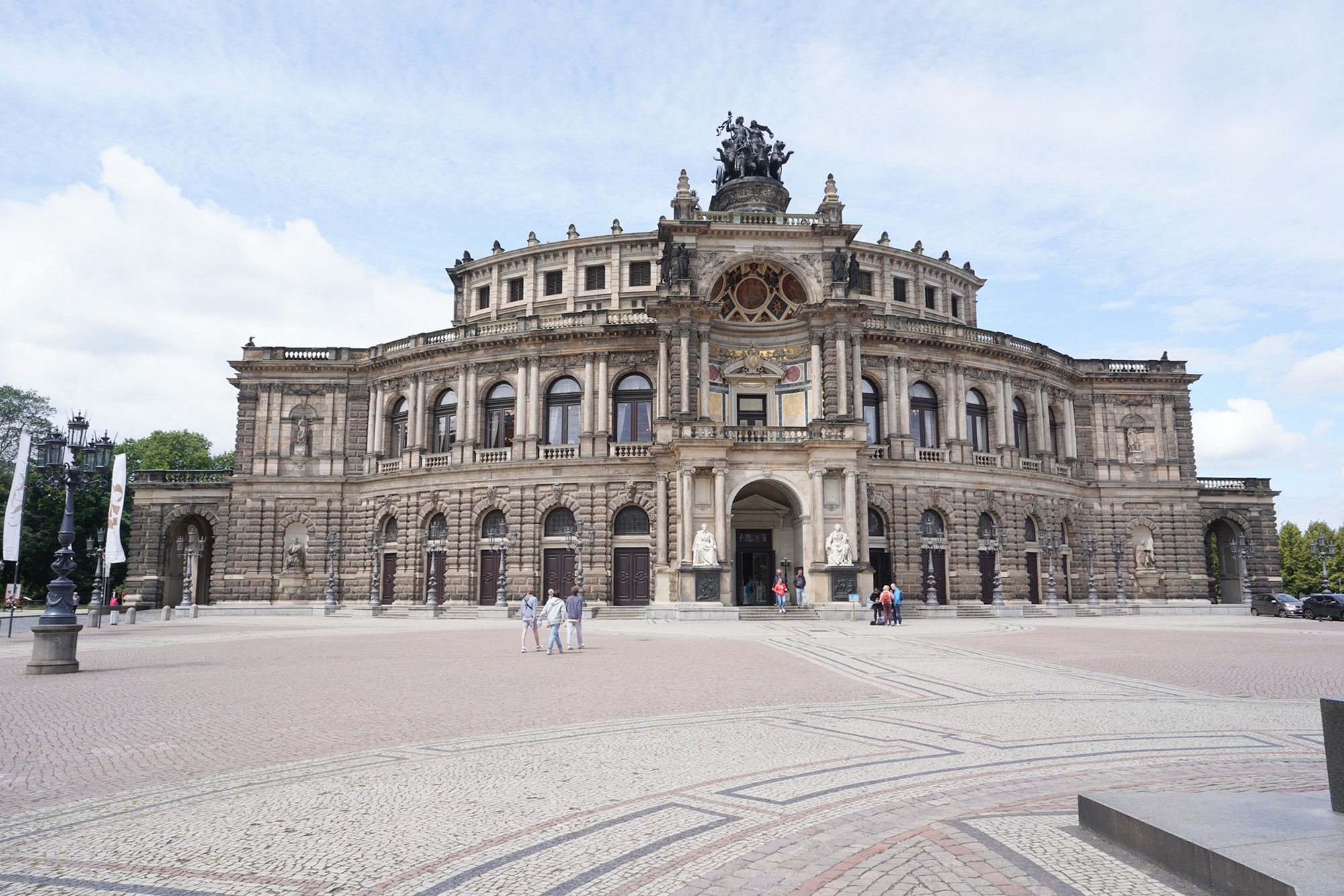
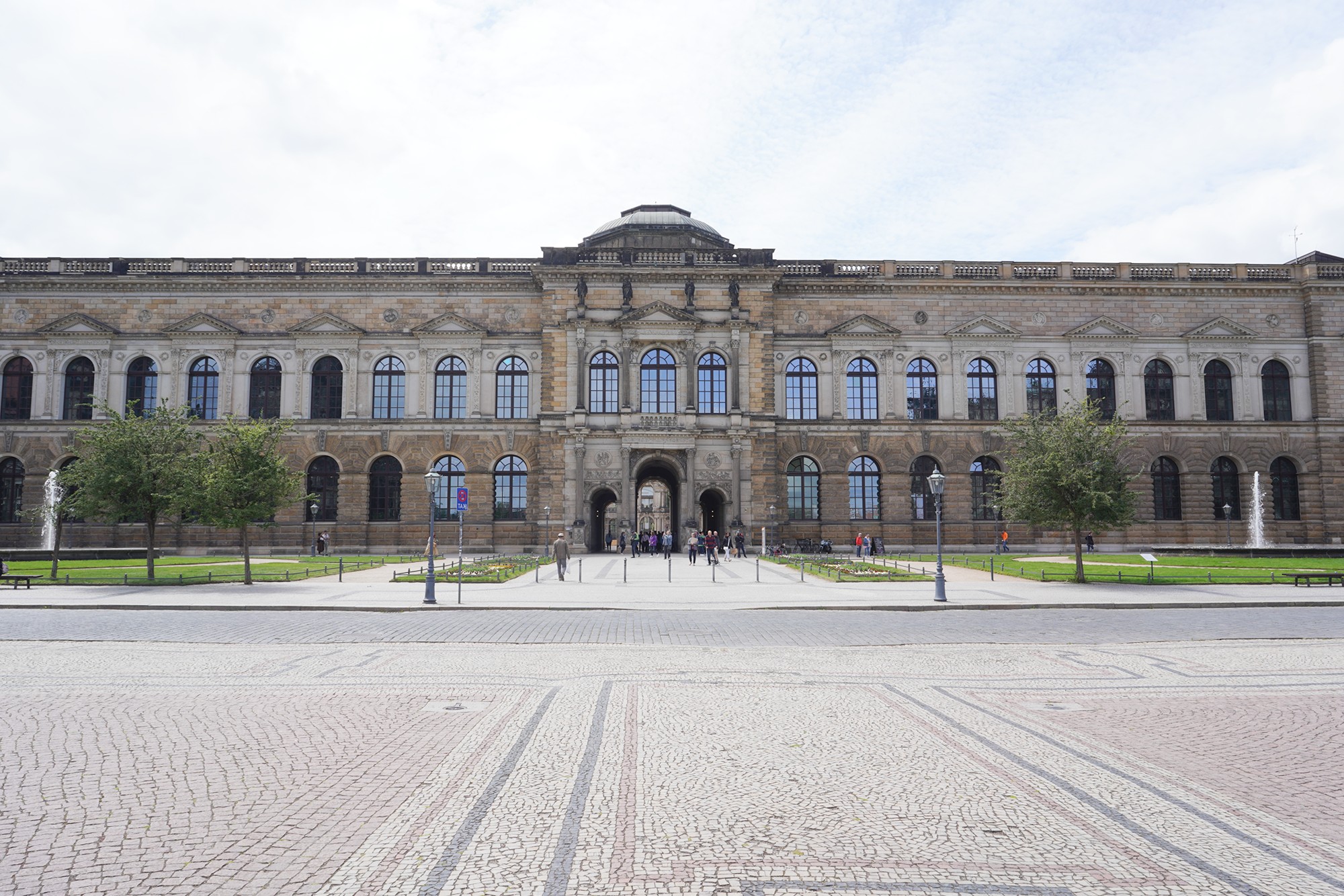
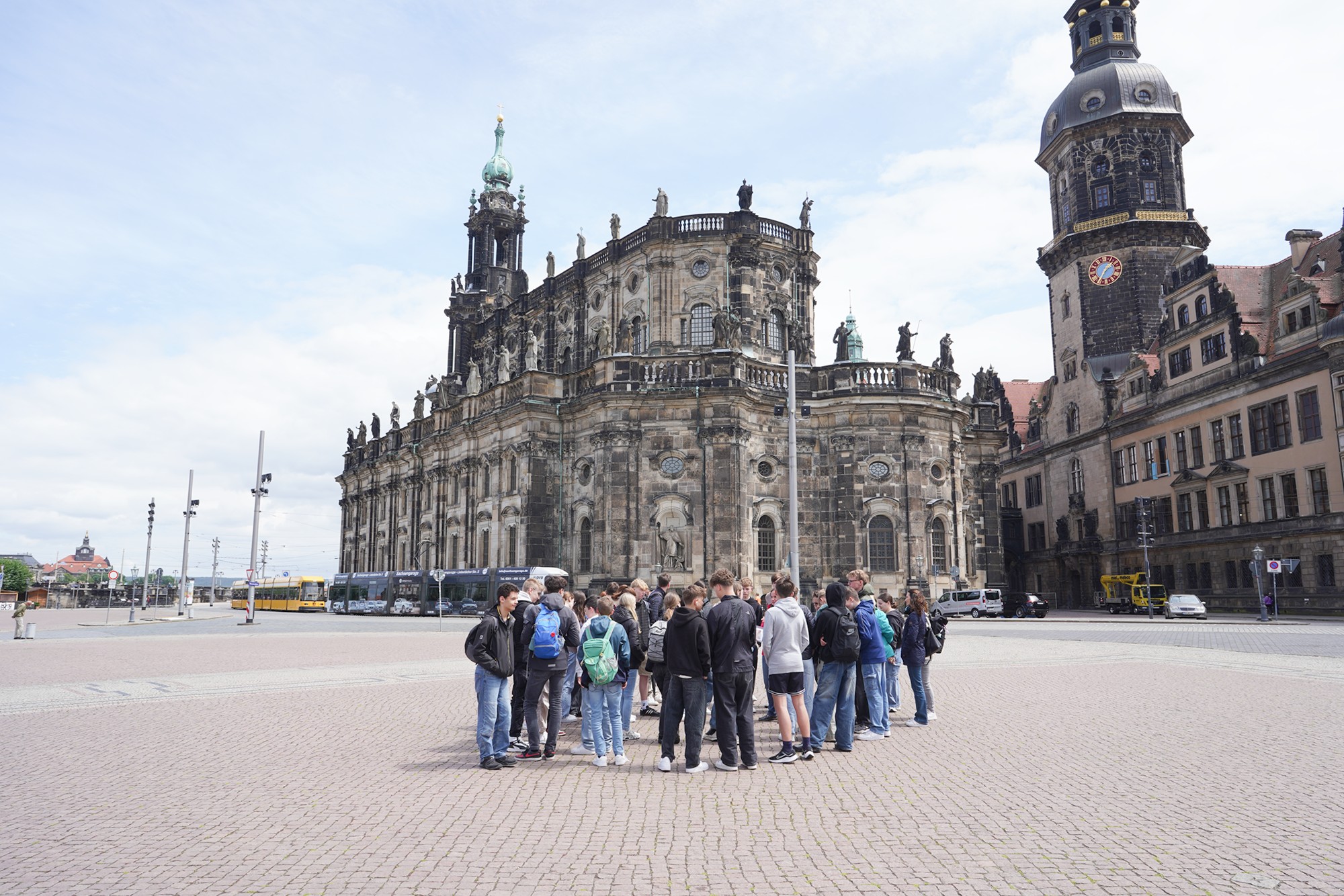
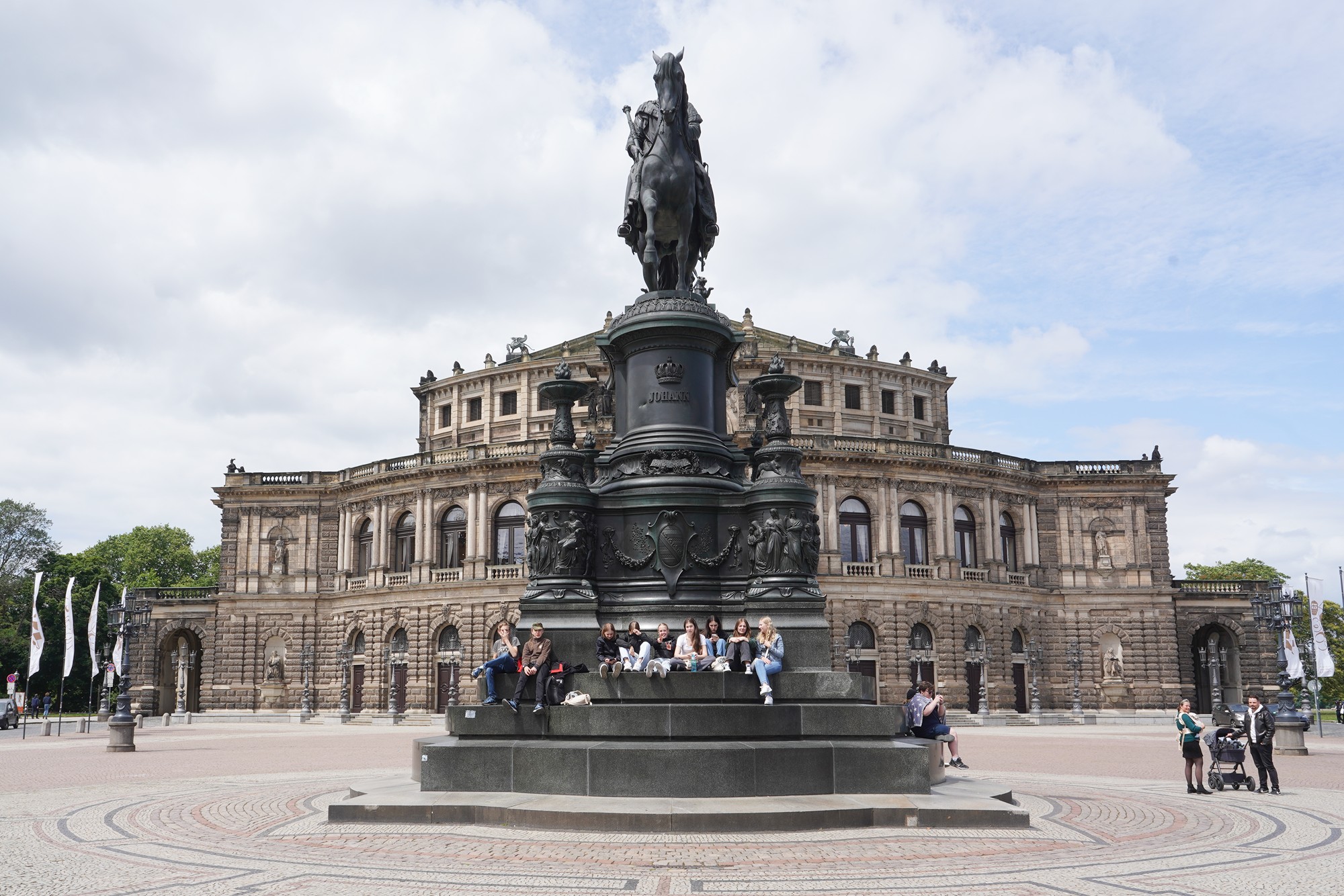
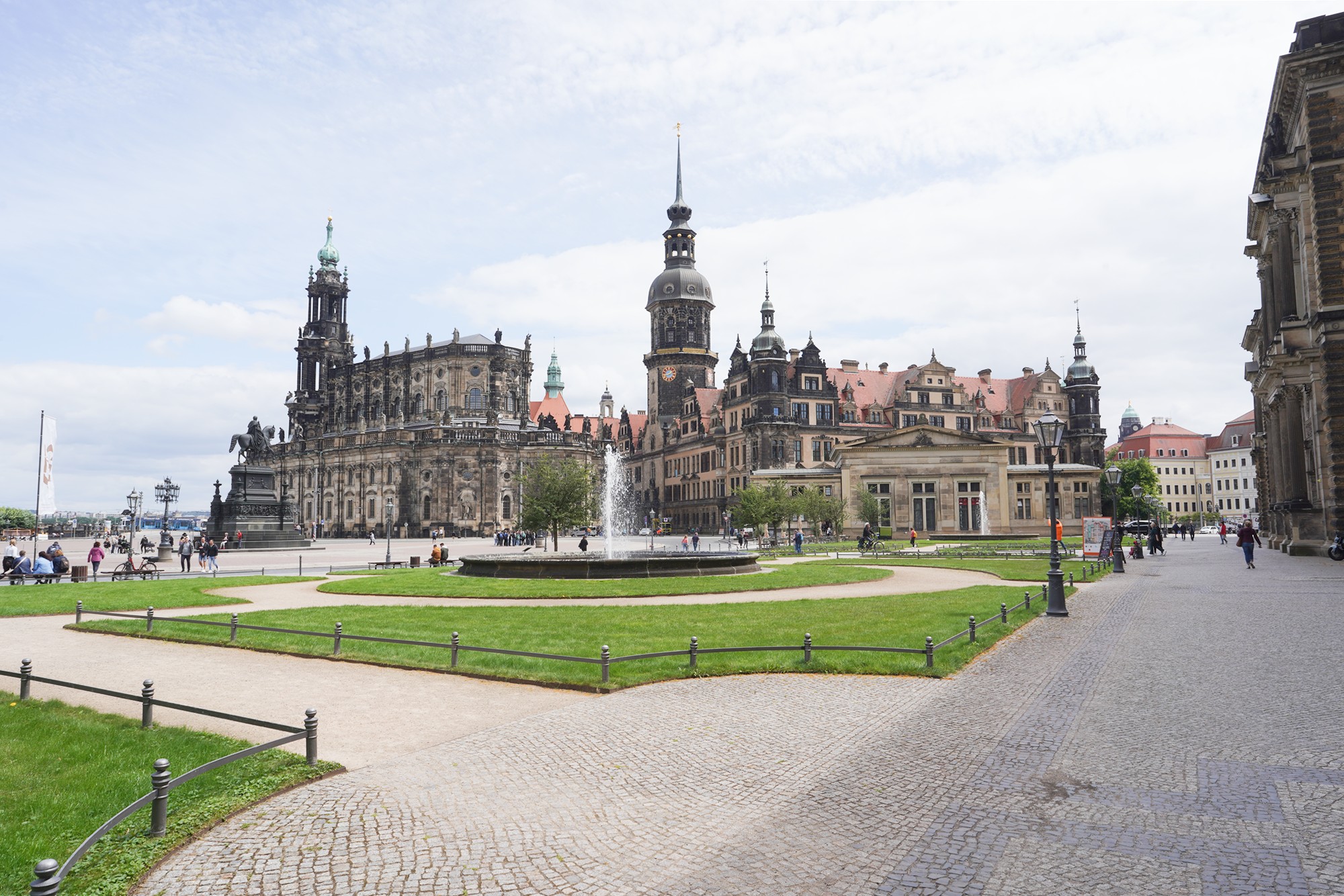
I walked to the northwest corner of the plaza.
The Carl Maria von Weber Denkmal (Carl Maria von Weber Monument) in Dresden honors the renowned German composer Carl Maria von Weber (1786–1826), who is considered one of the key figures in the development of German Romantic opera.
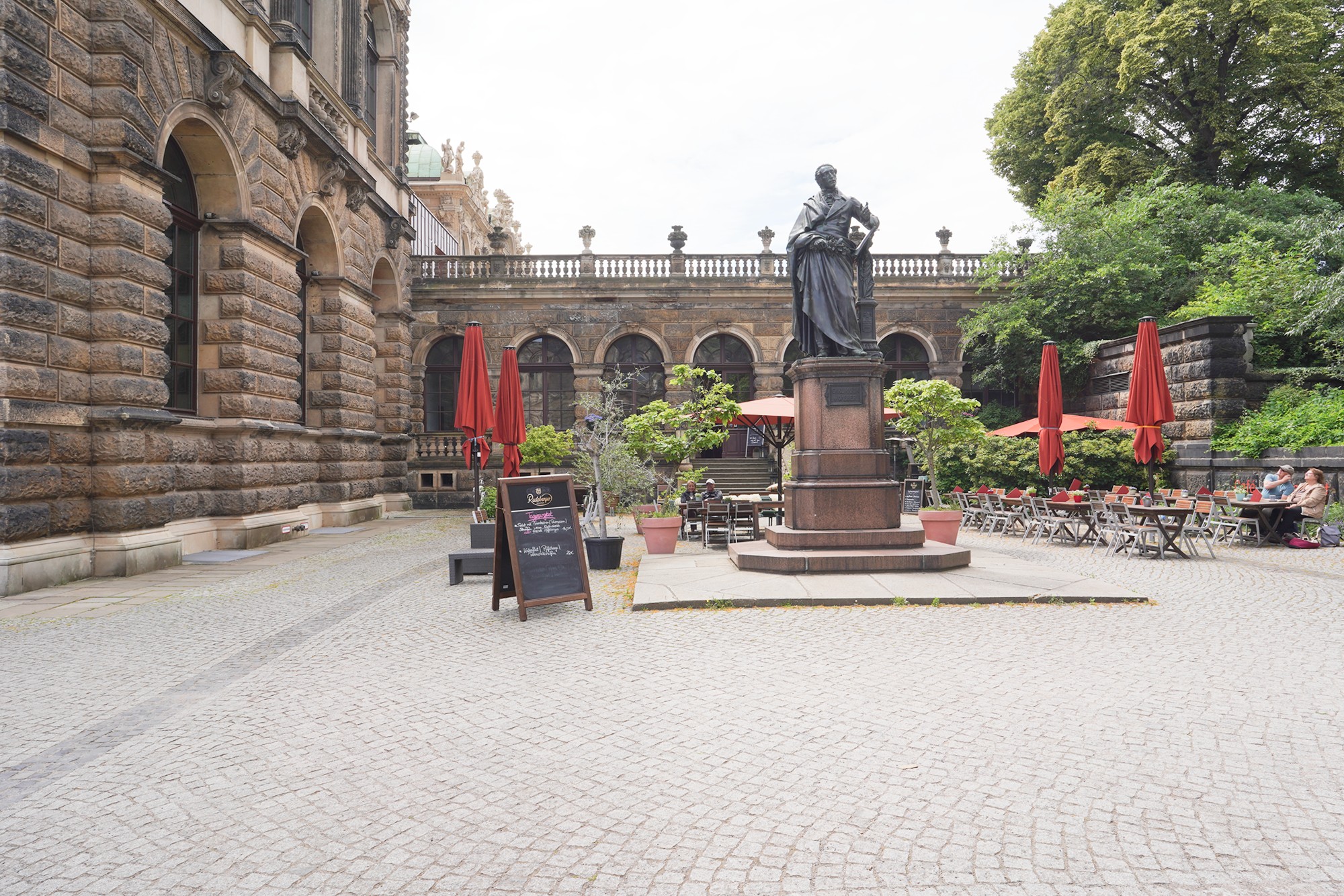
Then I walked up the stairs
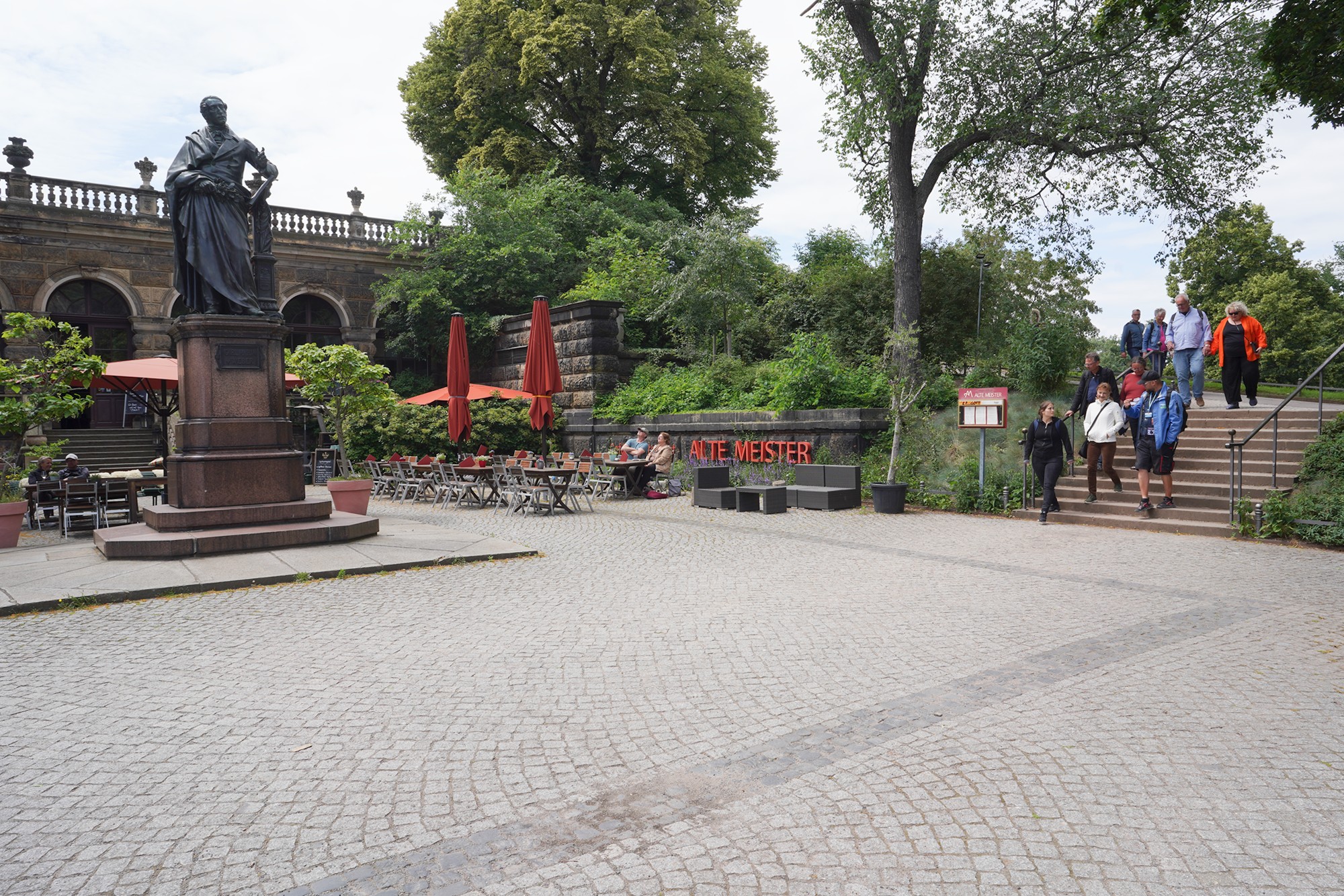
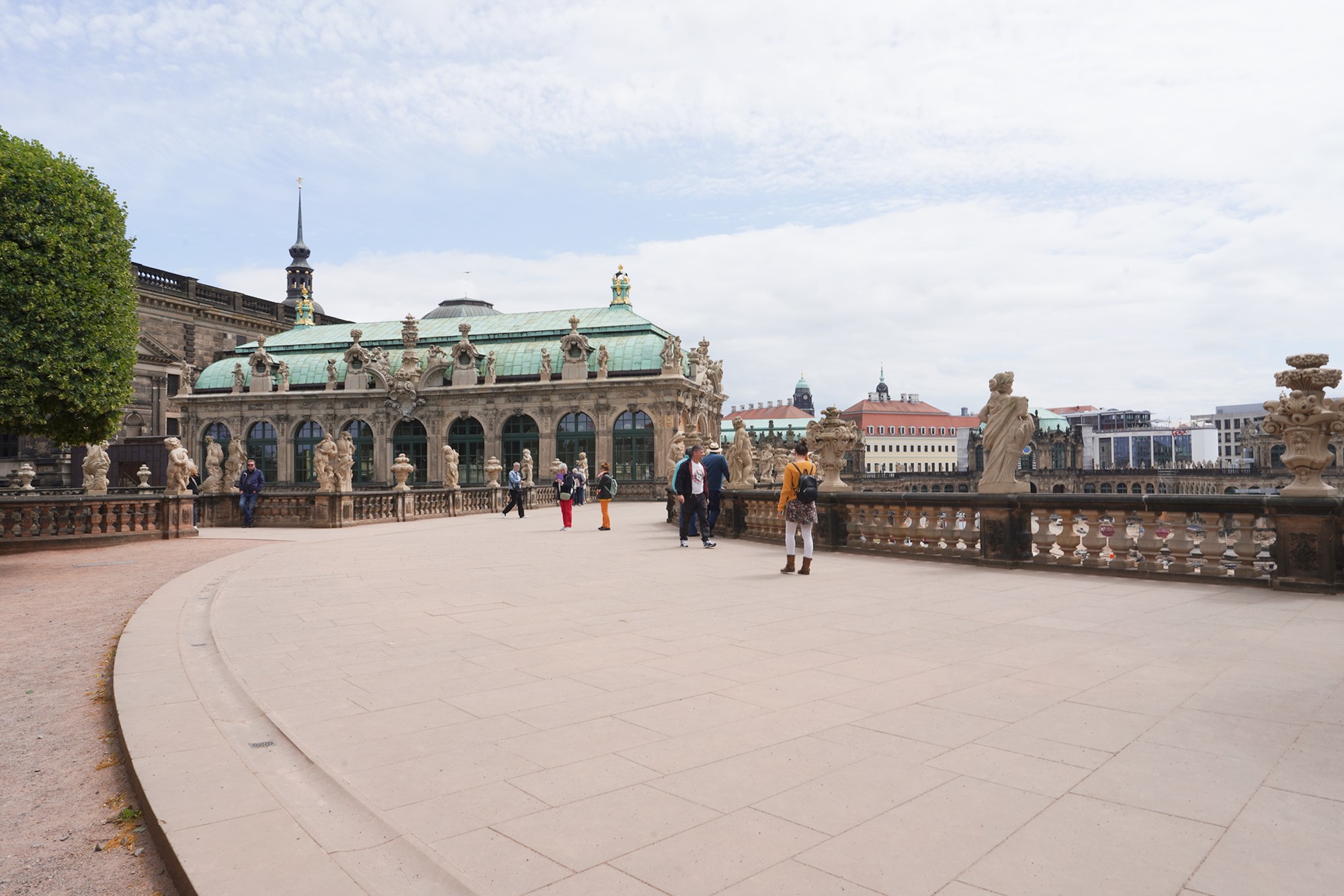
This was how it looked behind the Zwinger Palace building.
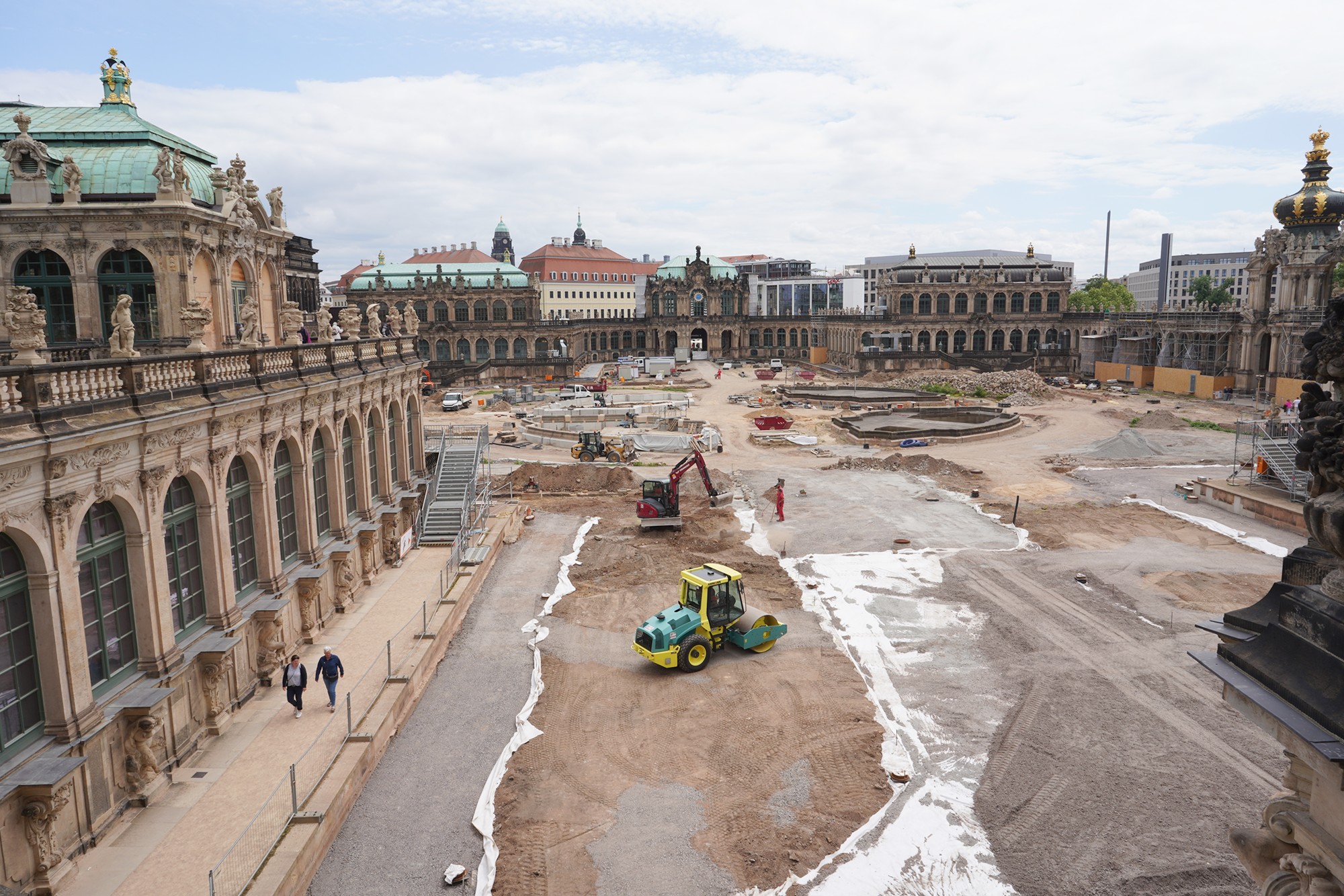
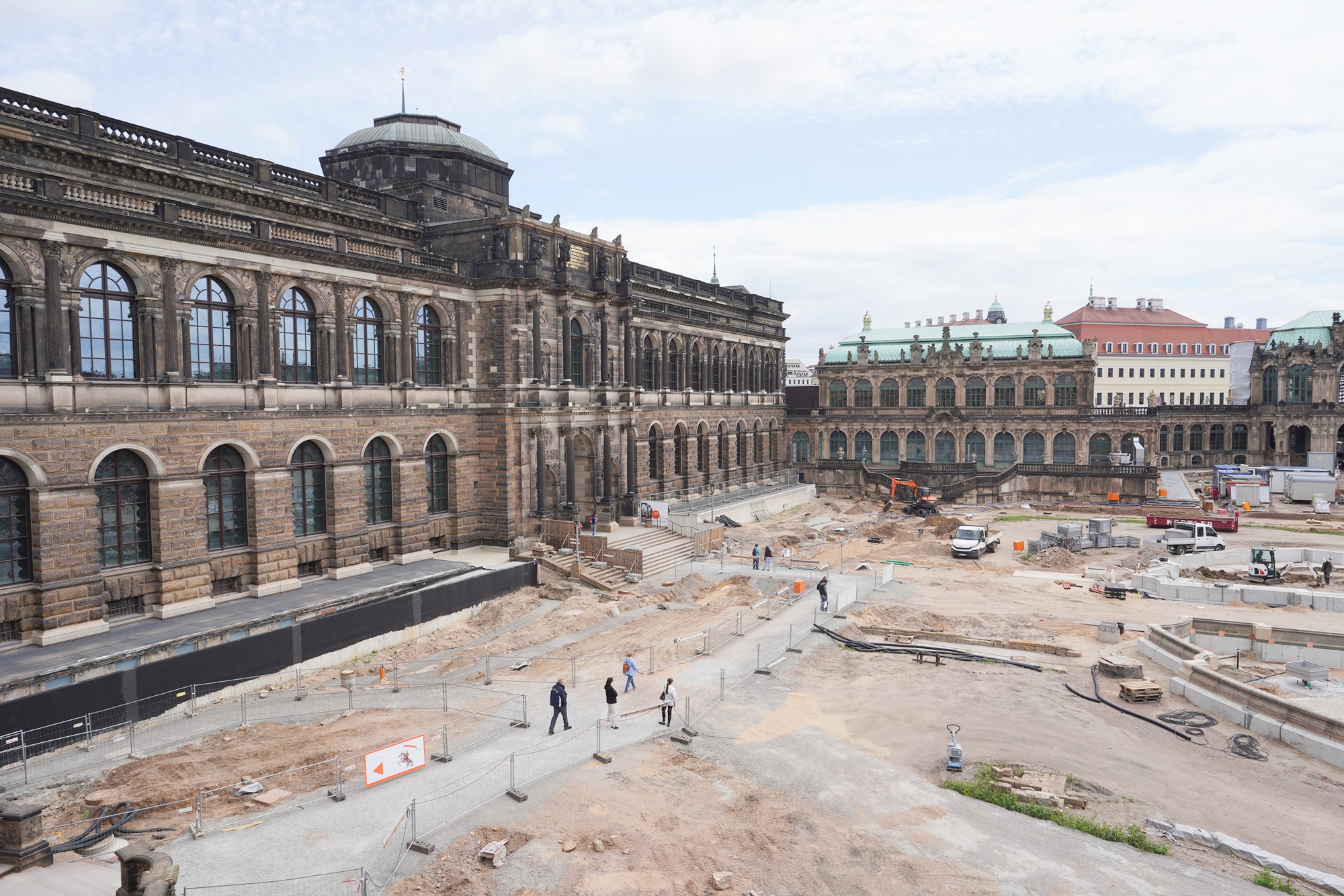
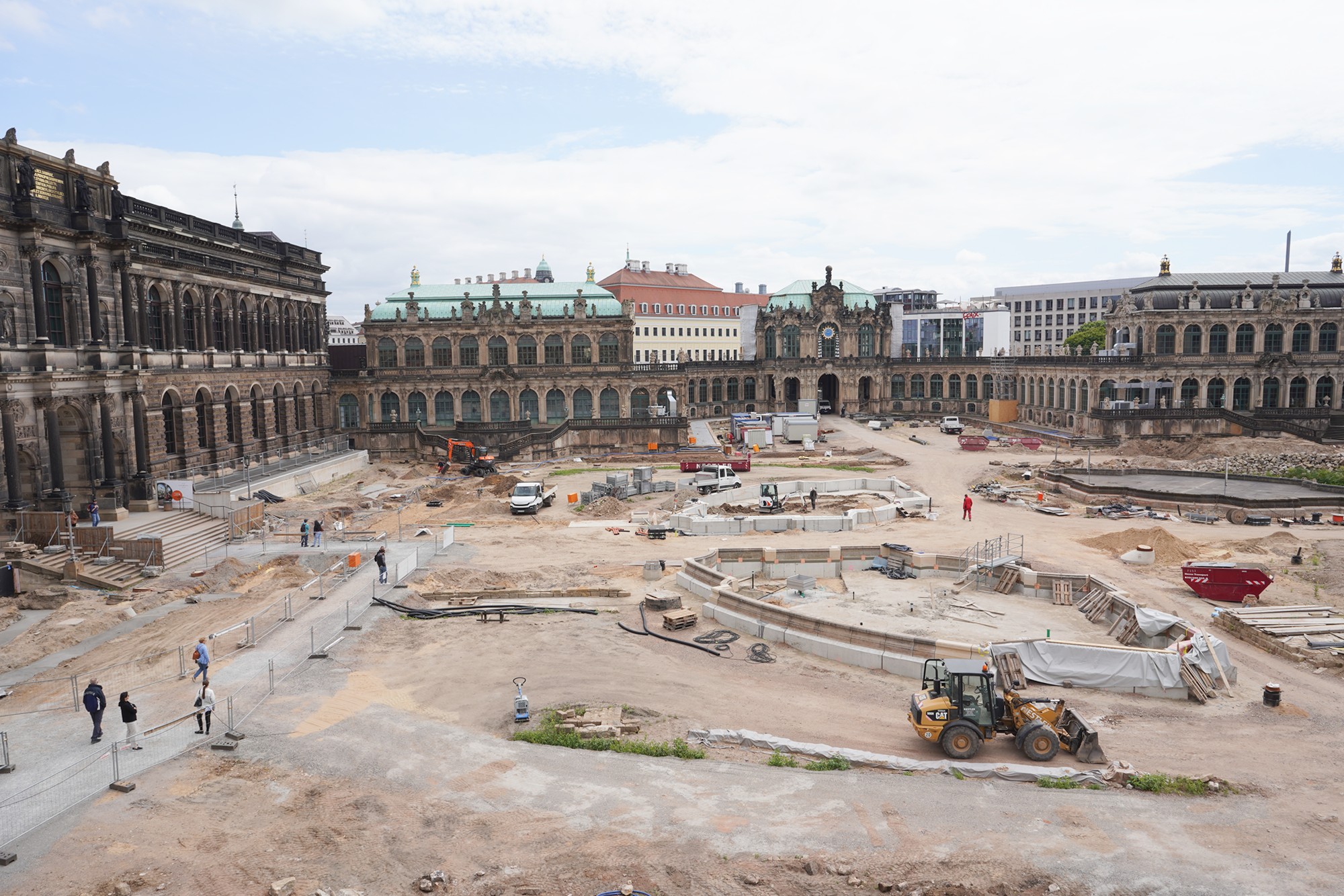
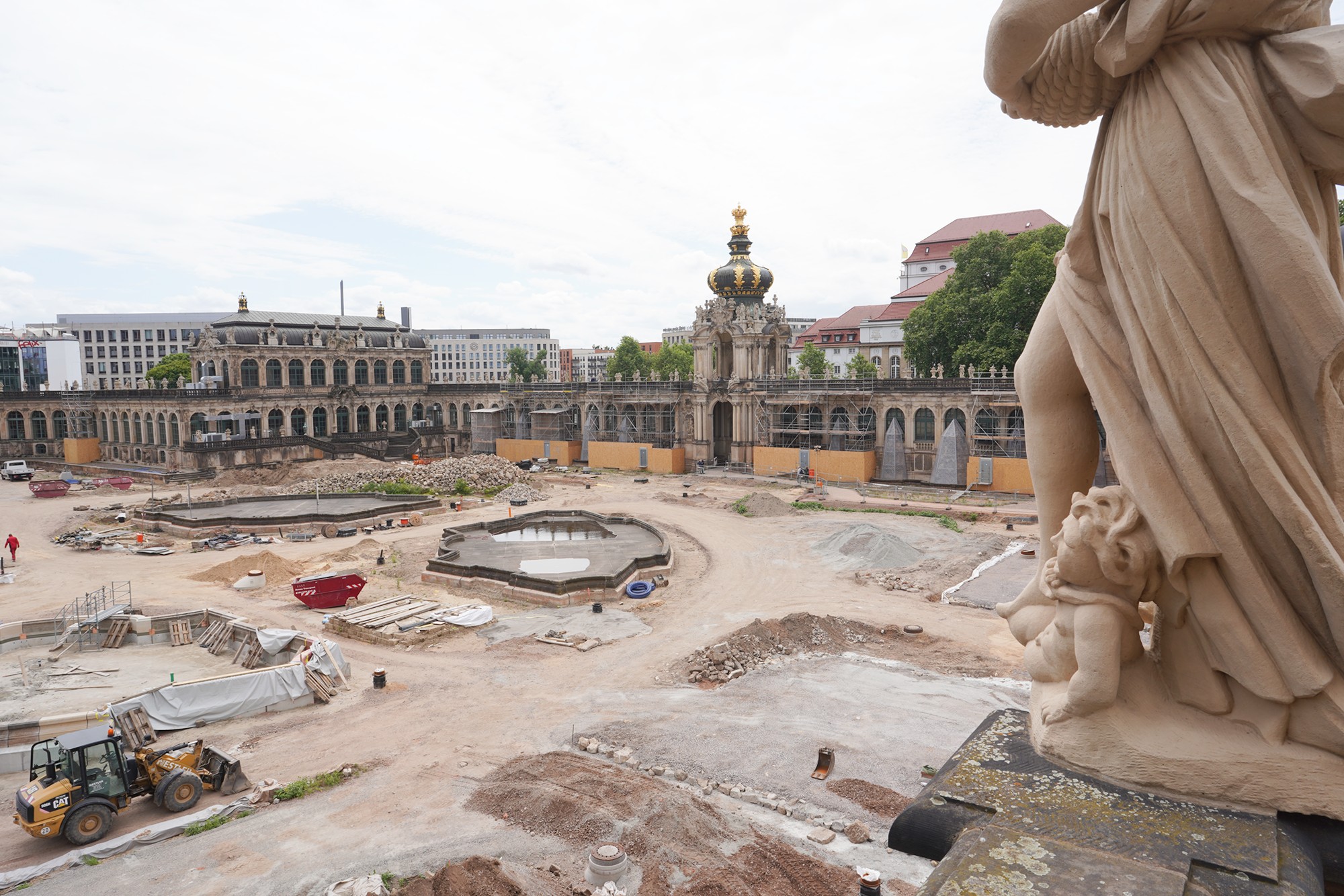
Came back to the plaza in front of the Zwinger Palace building
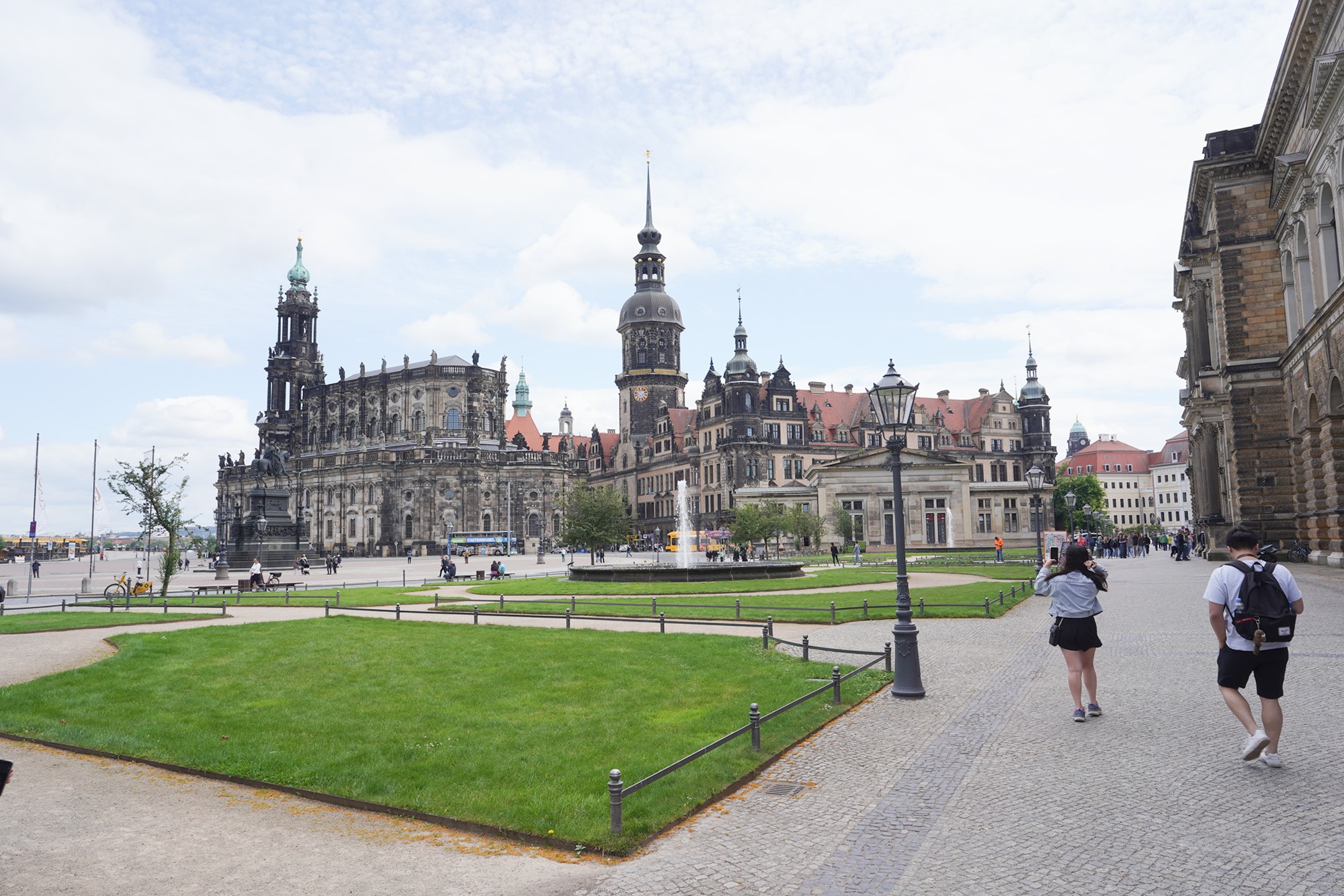
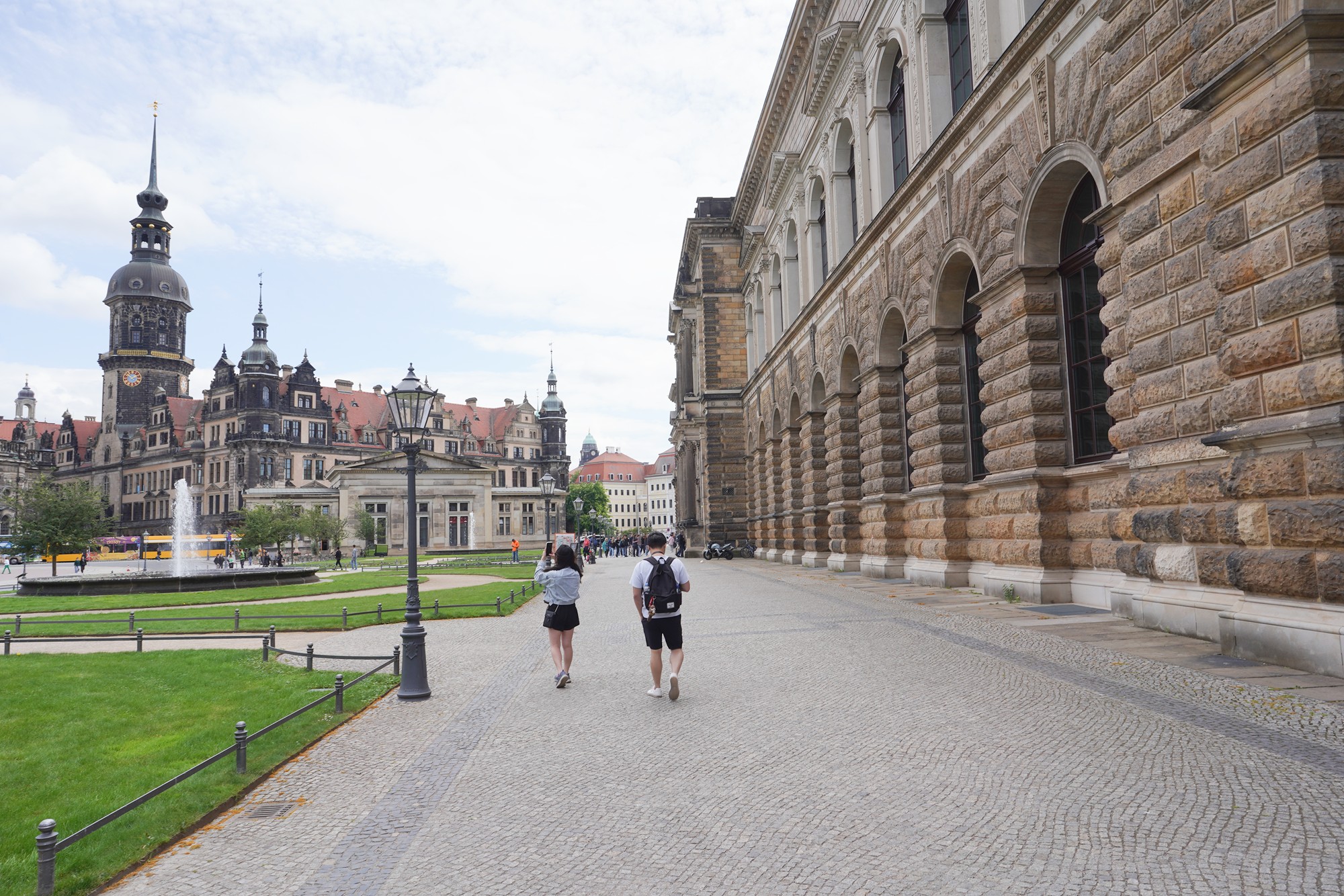
I entered the palace building and walked out to the back of the building.
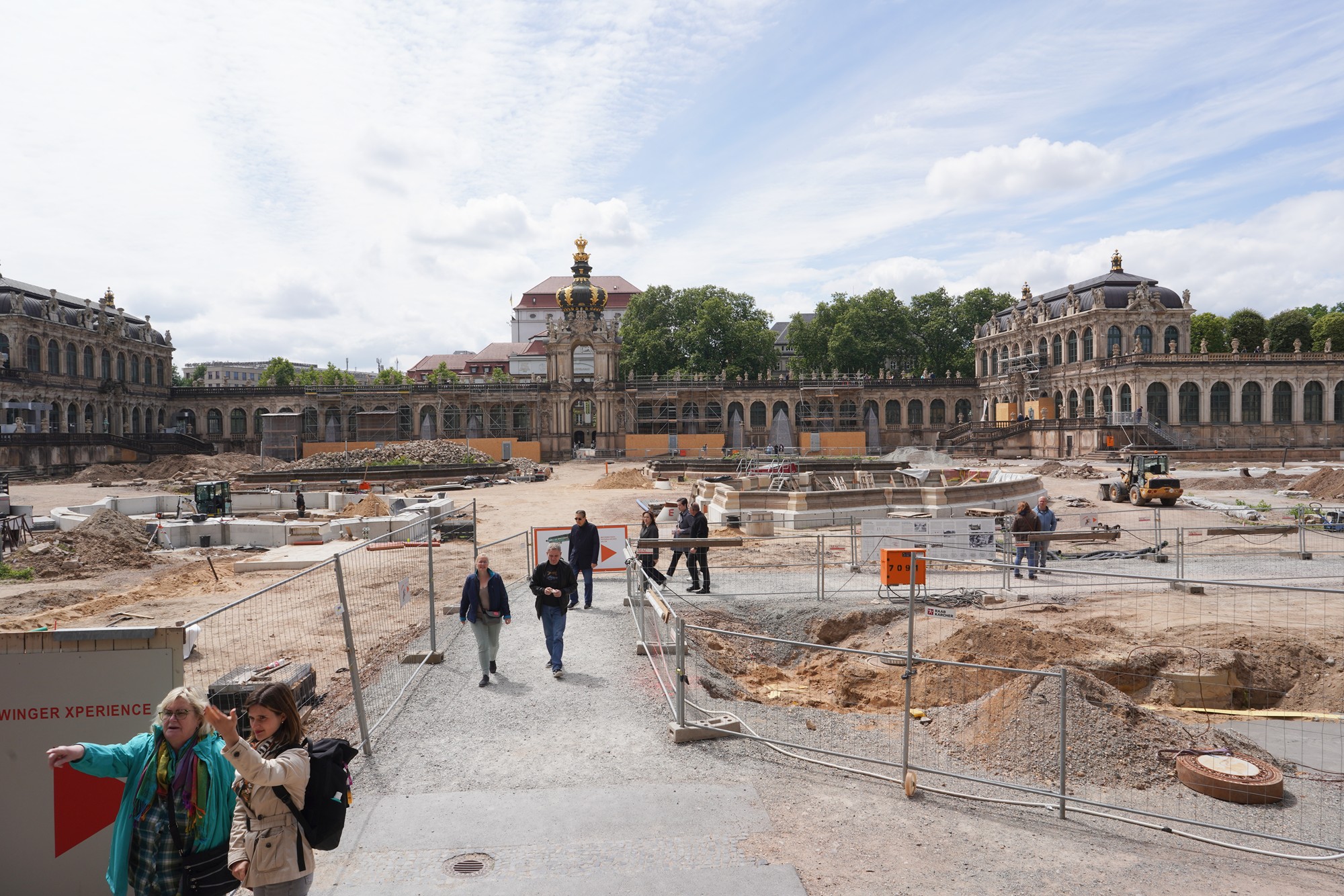
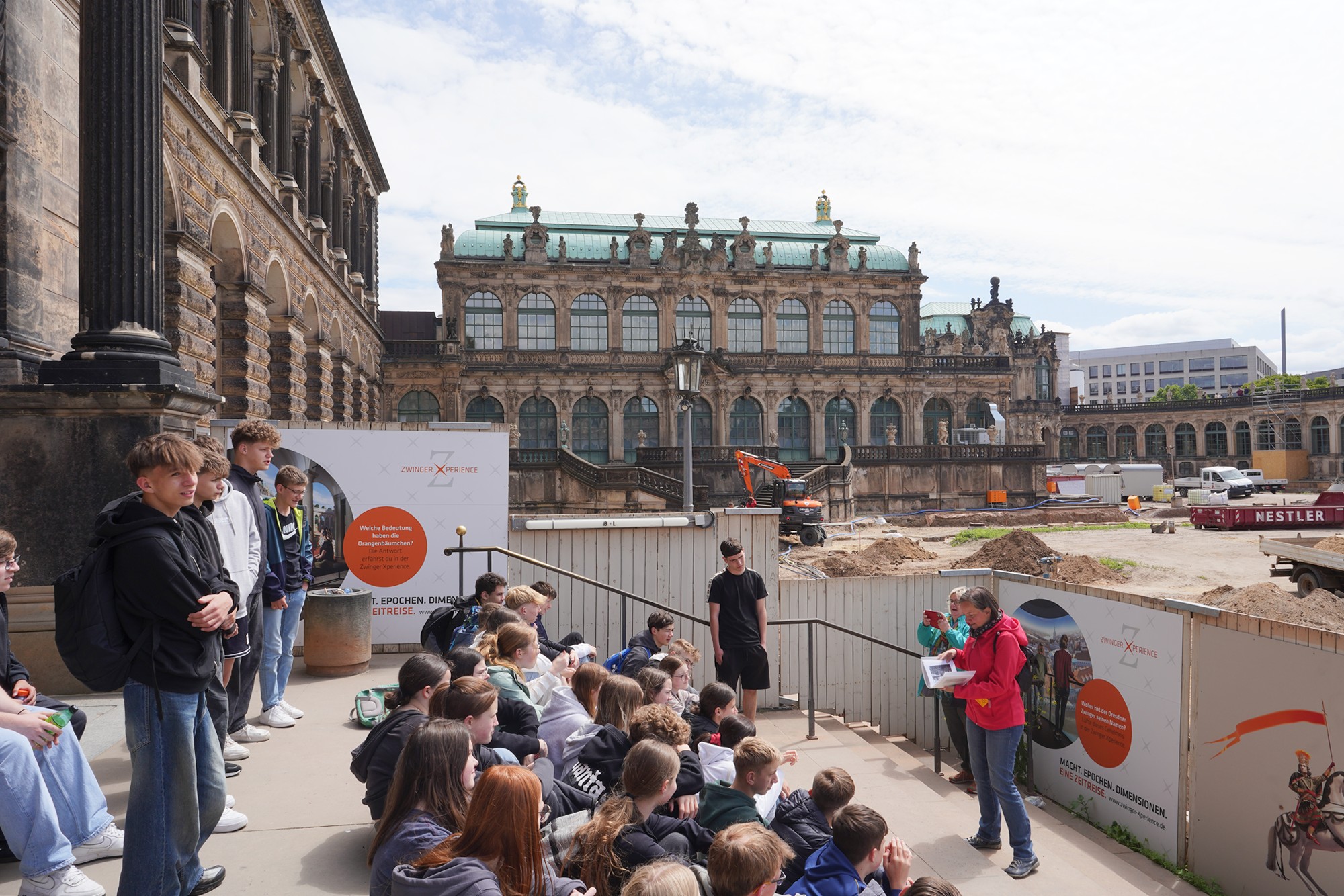
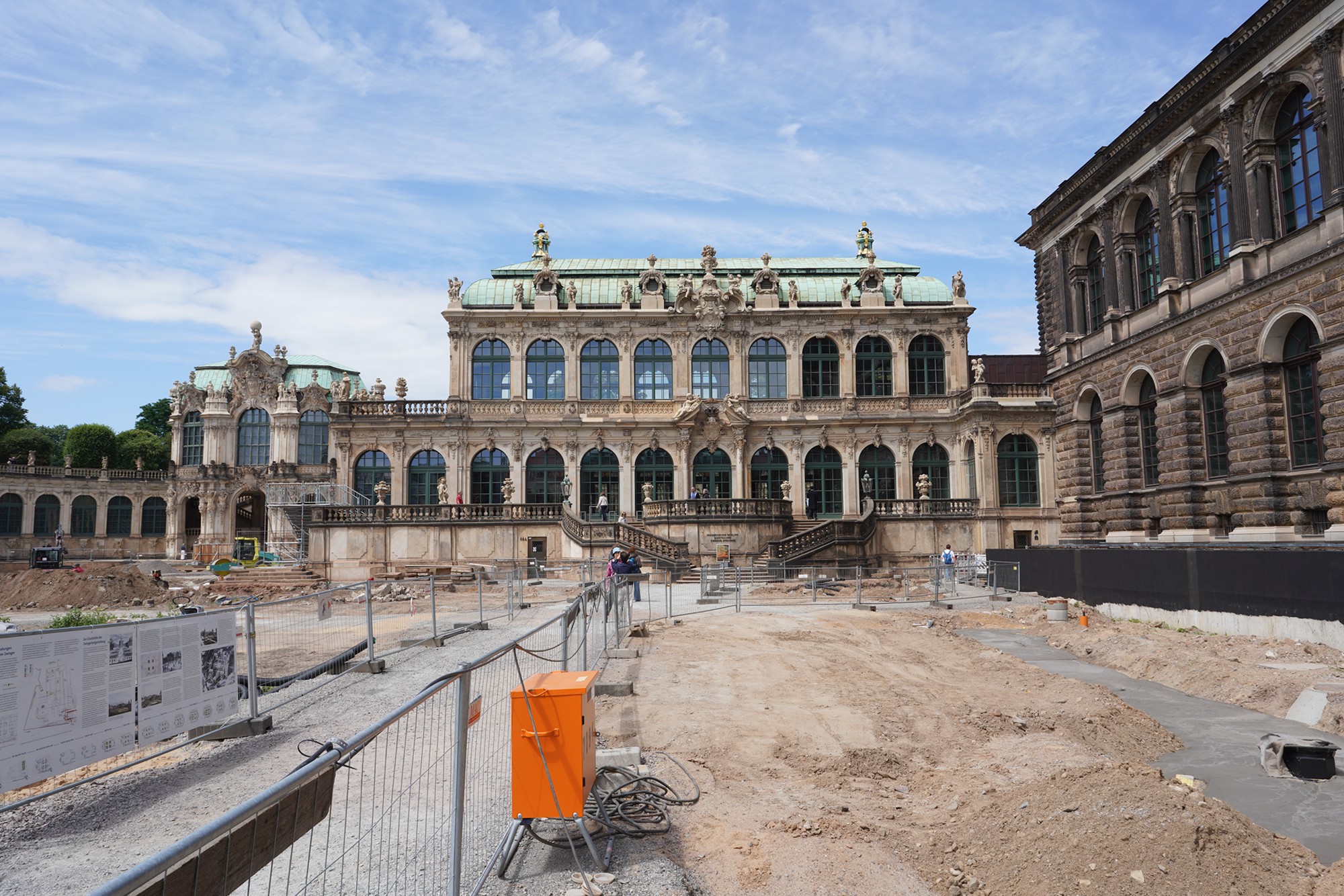
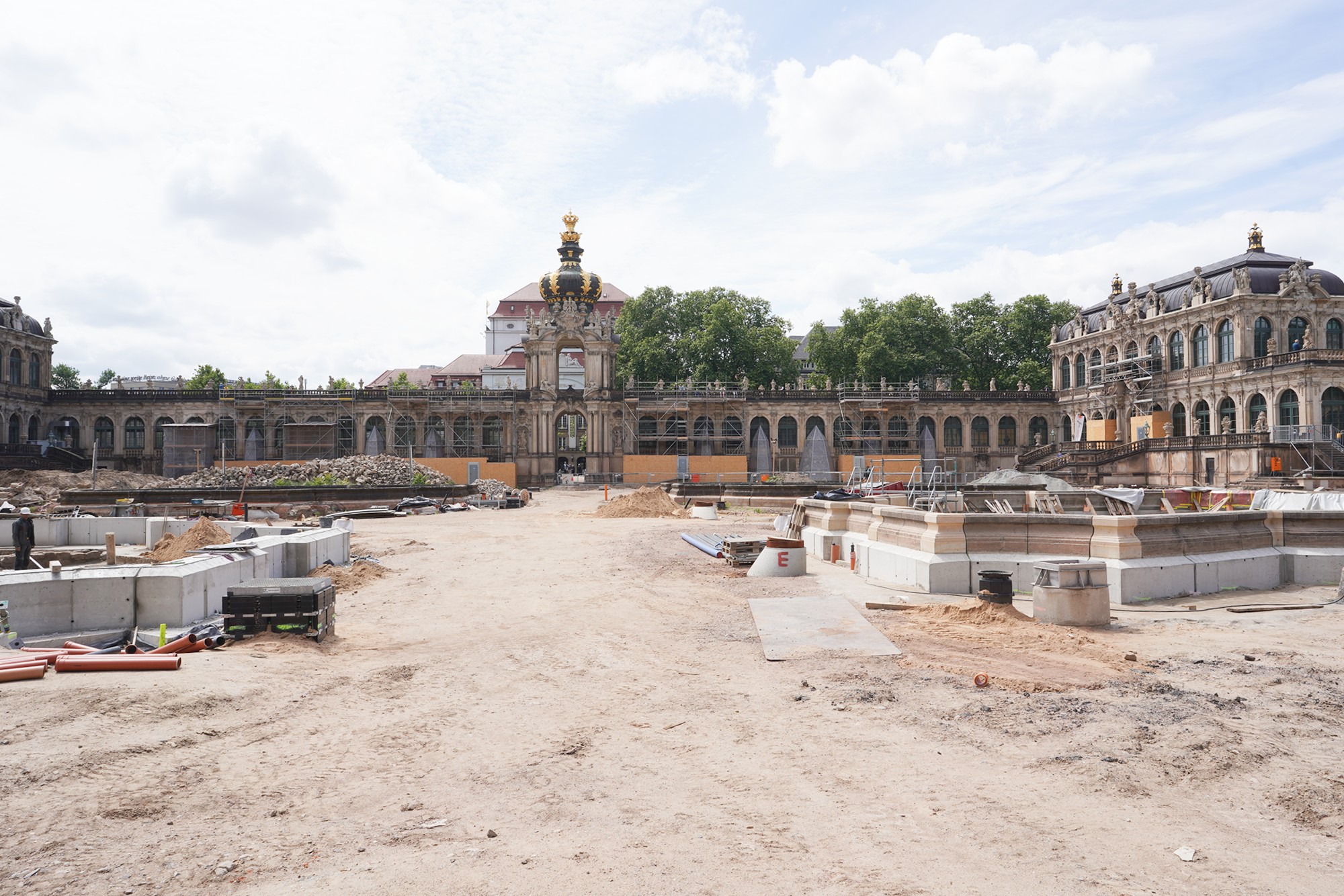
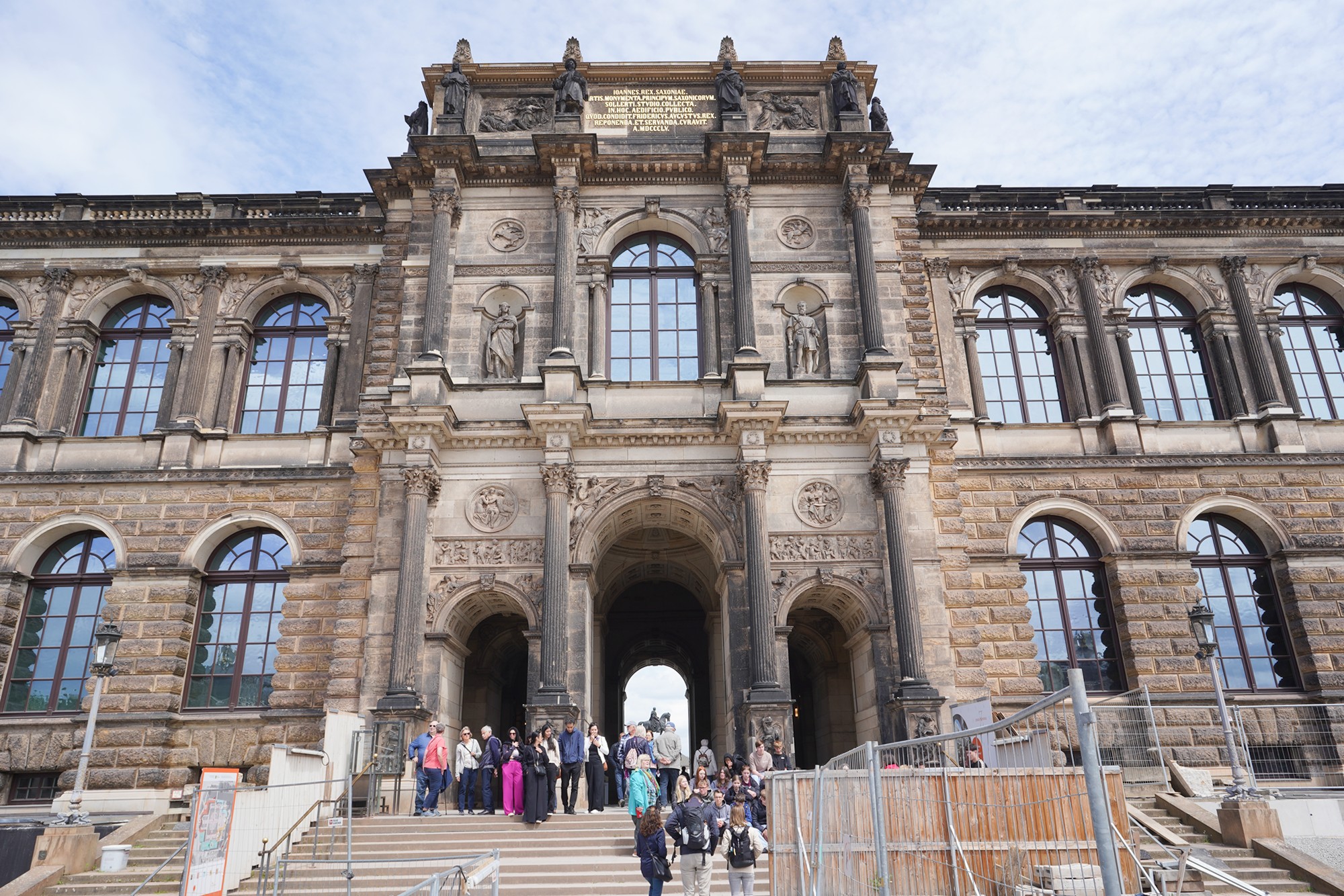
Then, I walked into the Old Masters Picture Gallery in the Palace Building.
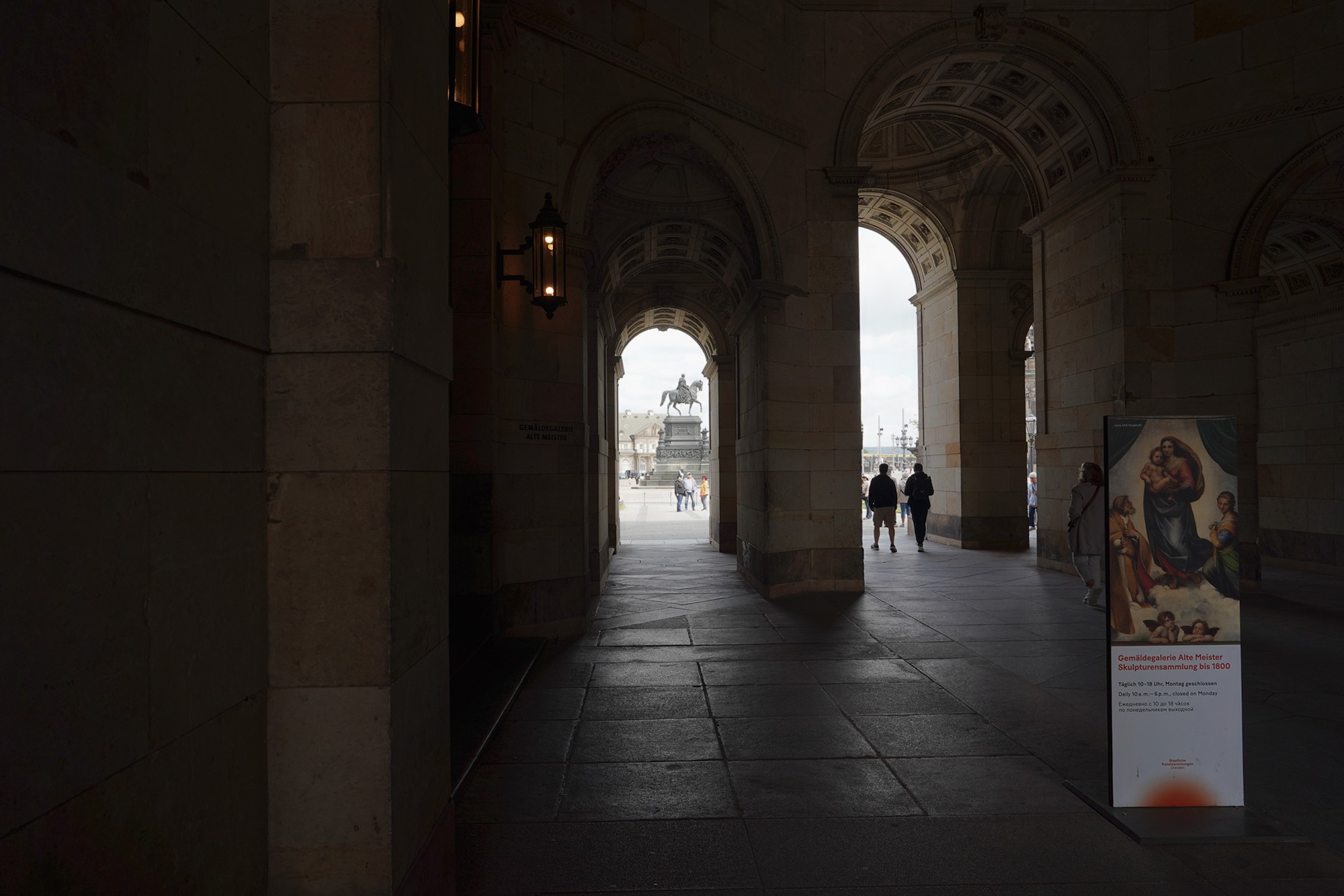
The Old Masters Picture Gallery (German: Gemäldegalerie Alte Meister) in Dresden is one of the most prestigious art collections in Europe. It showcases masterpieces from the Renaissance to the Baroque period. Located in the Zwinger Palace, this museum houses works by some of the most renowned artists in Western art history.

I will have a separate blog on this museum later.
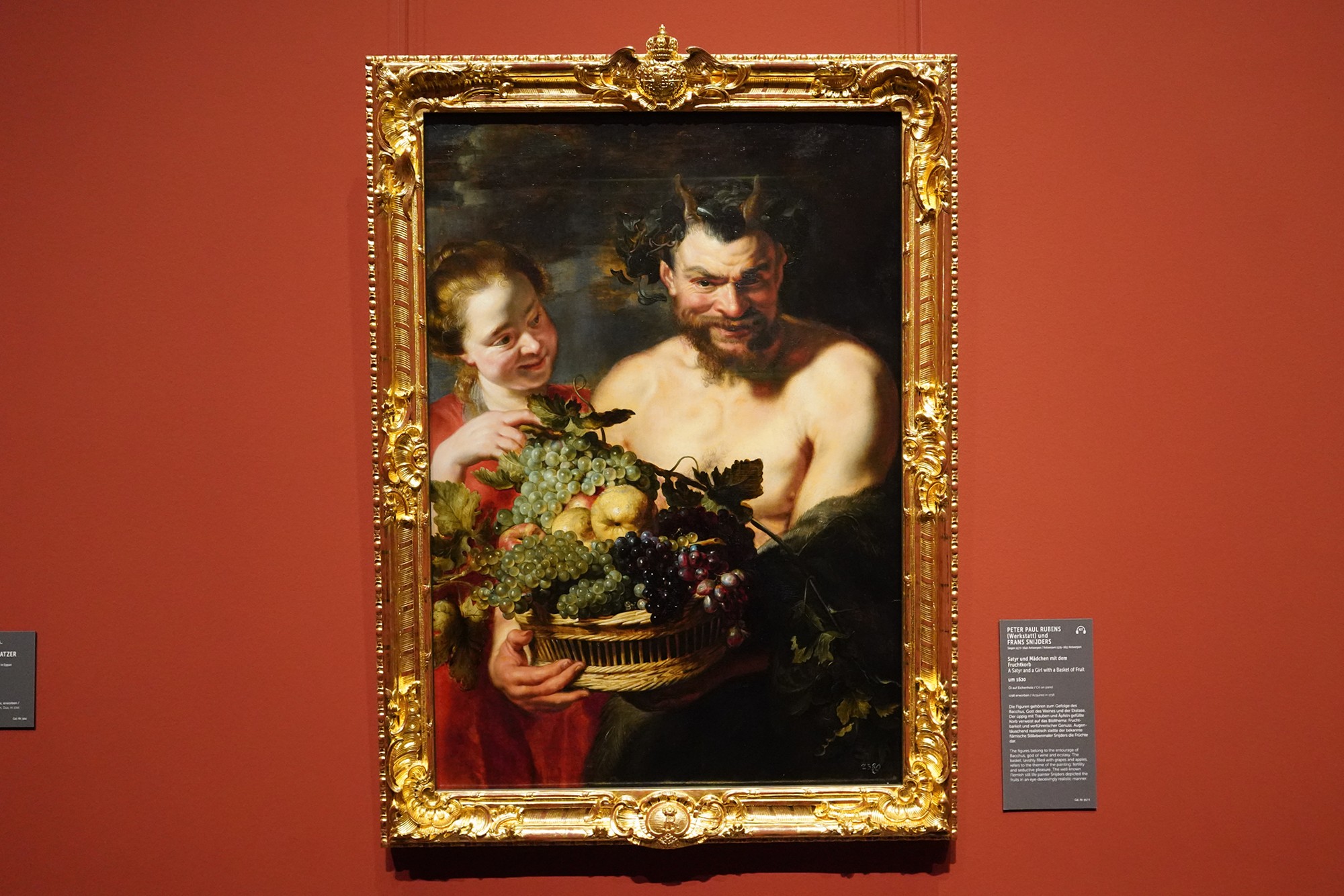
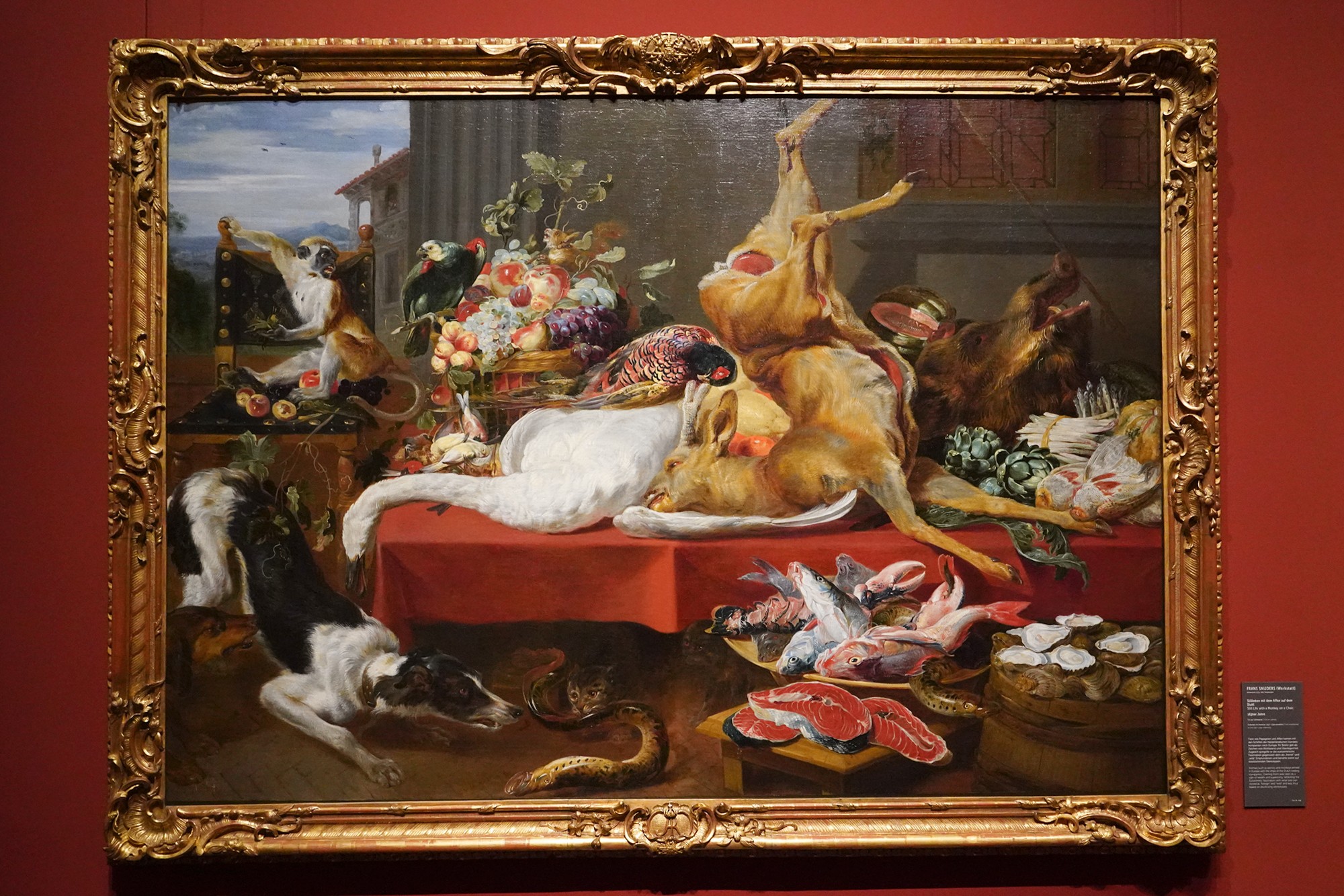
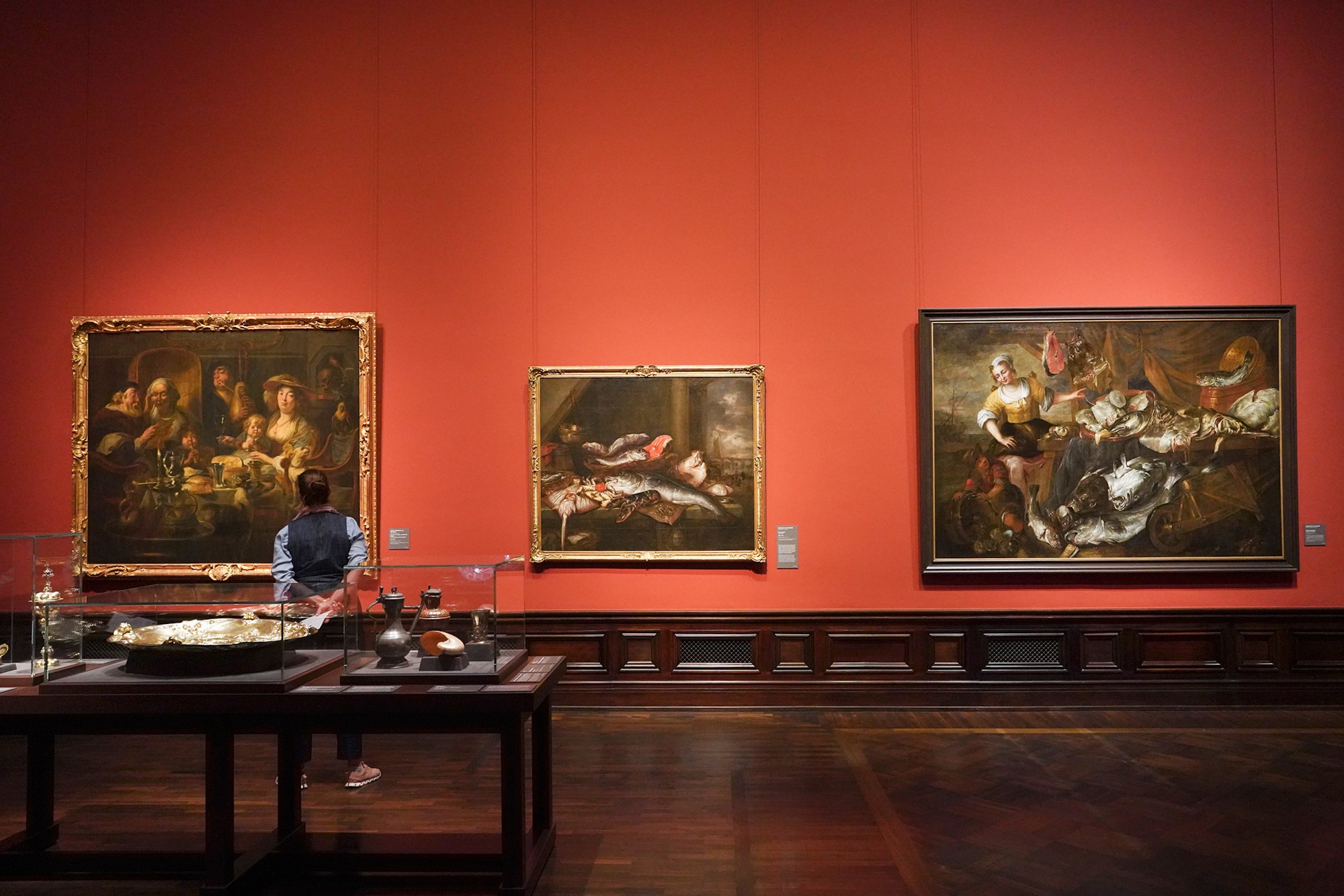
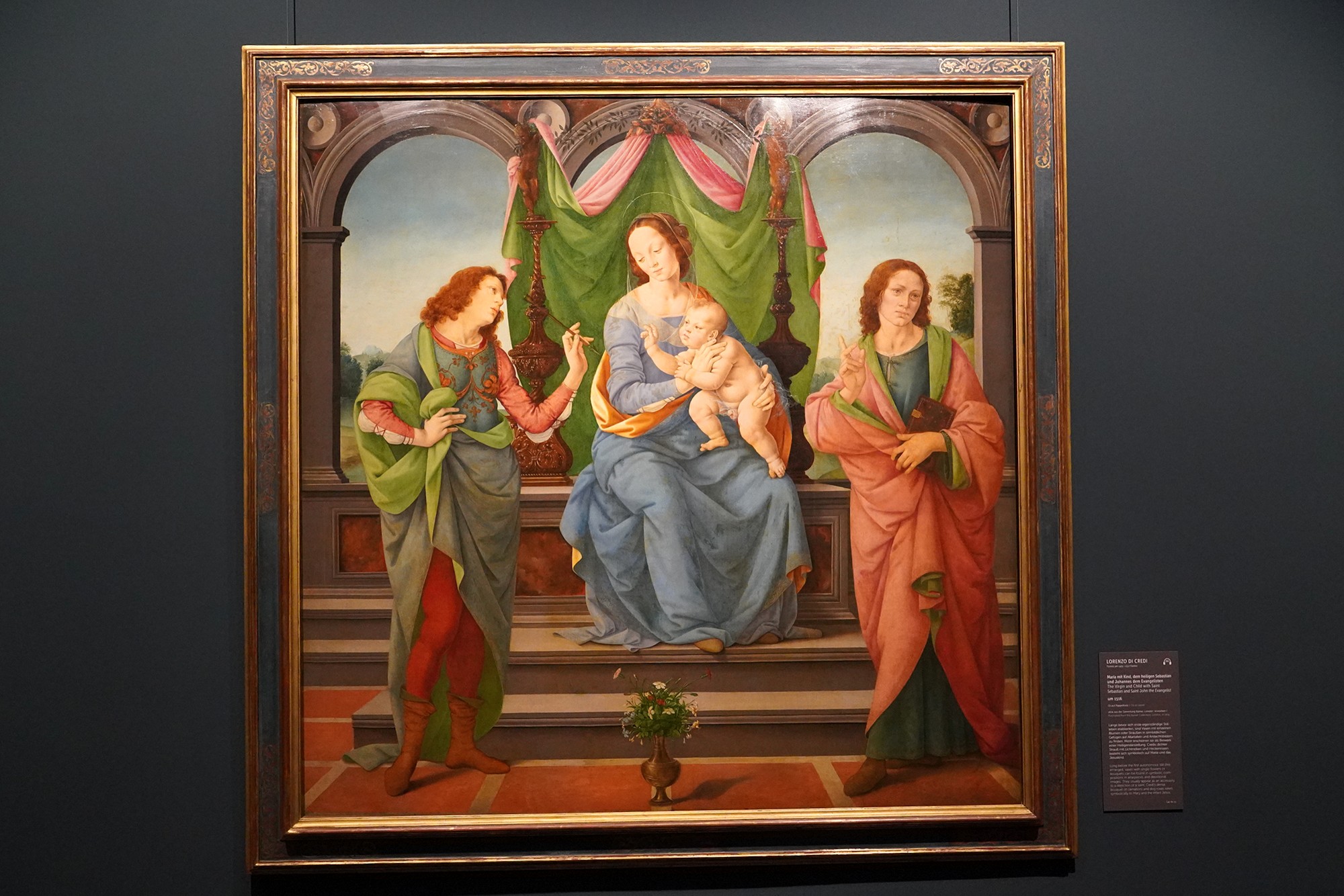
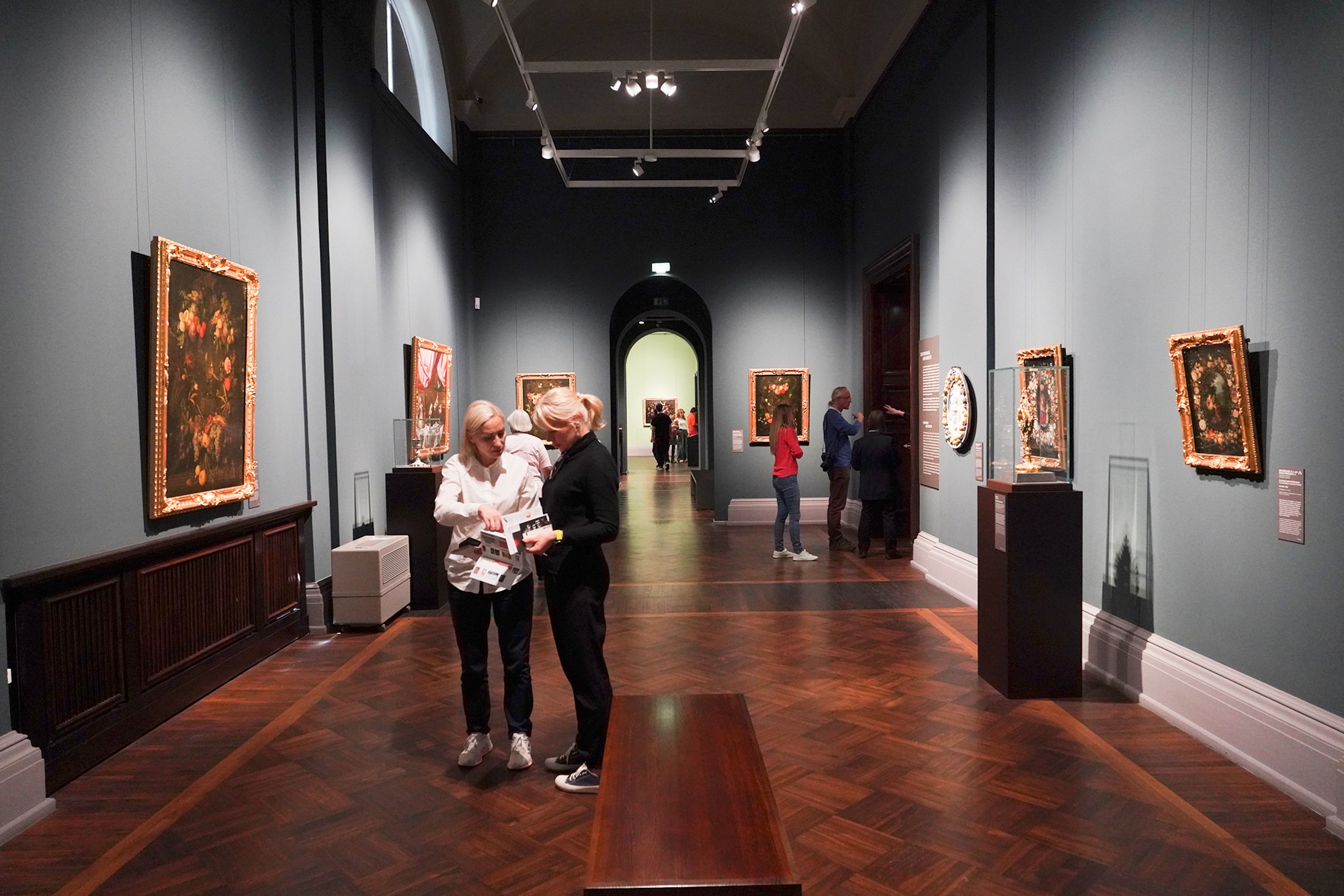
Out of the museum
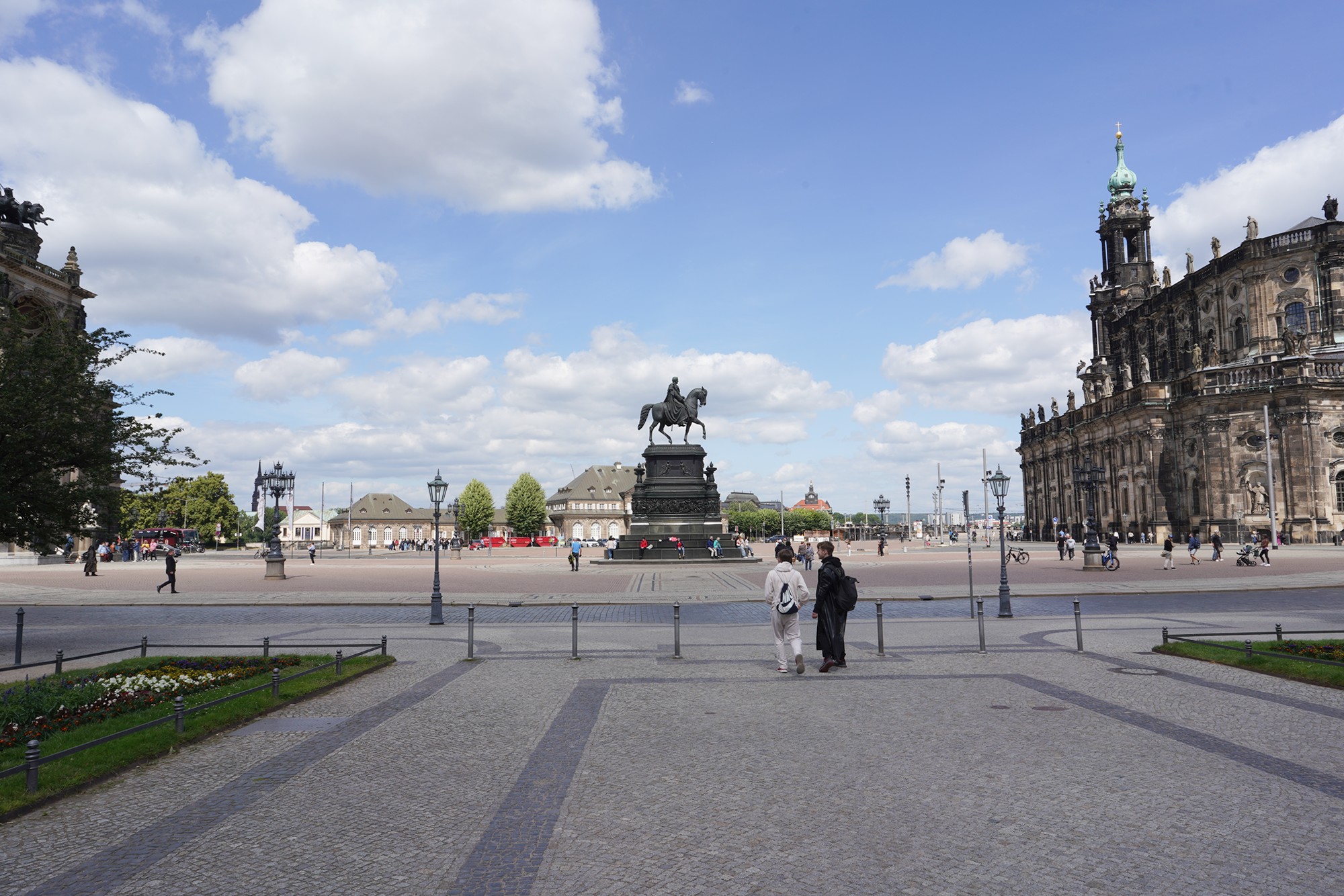
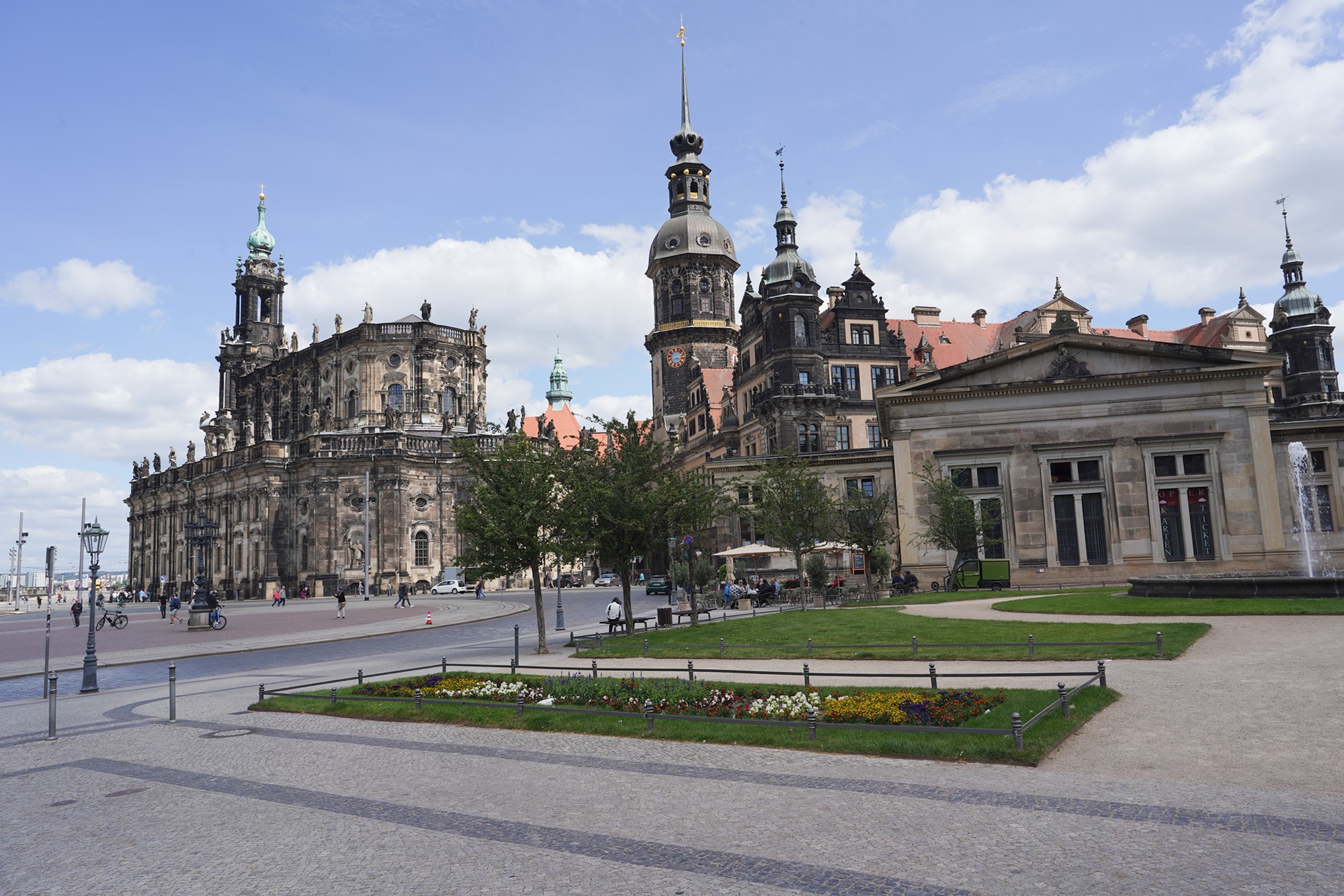
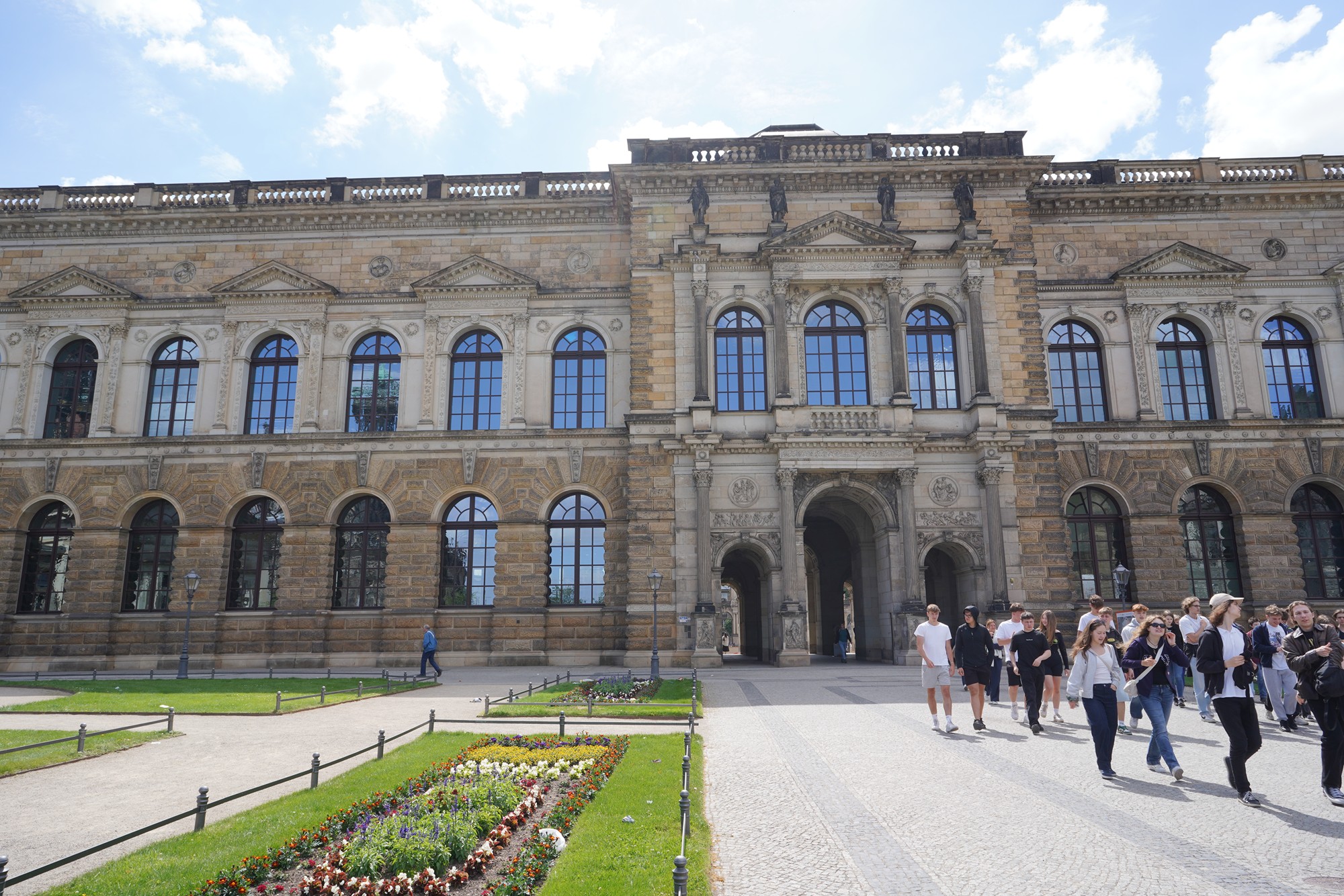
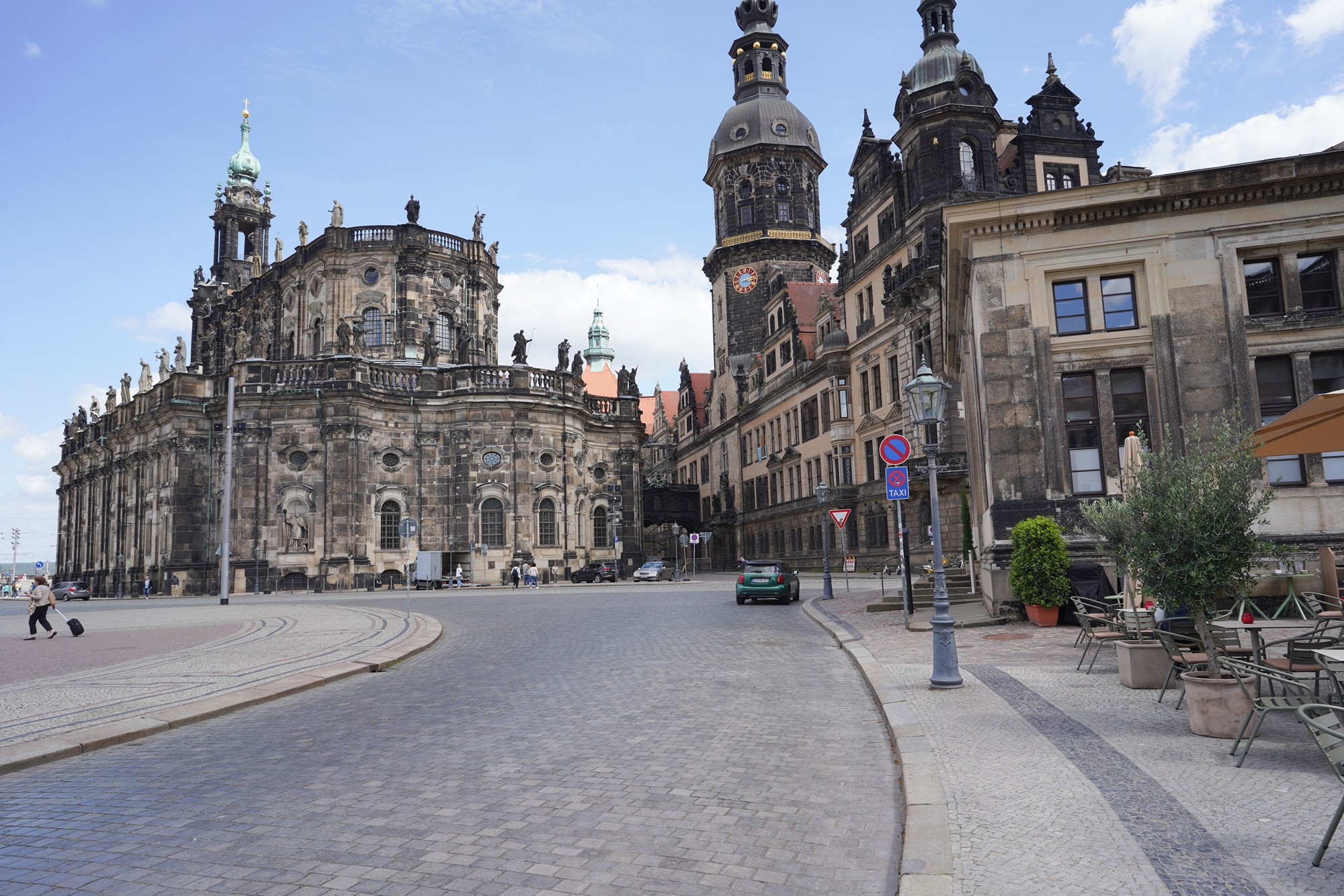
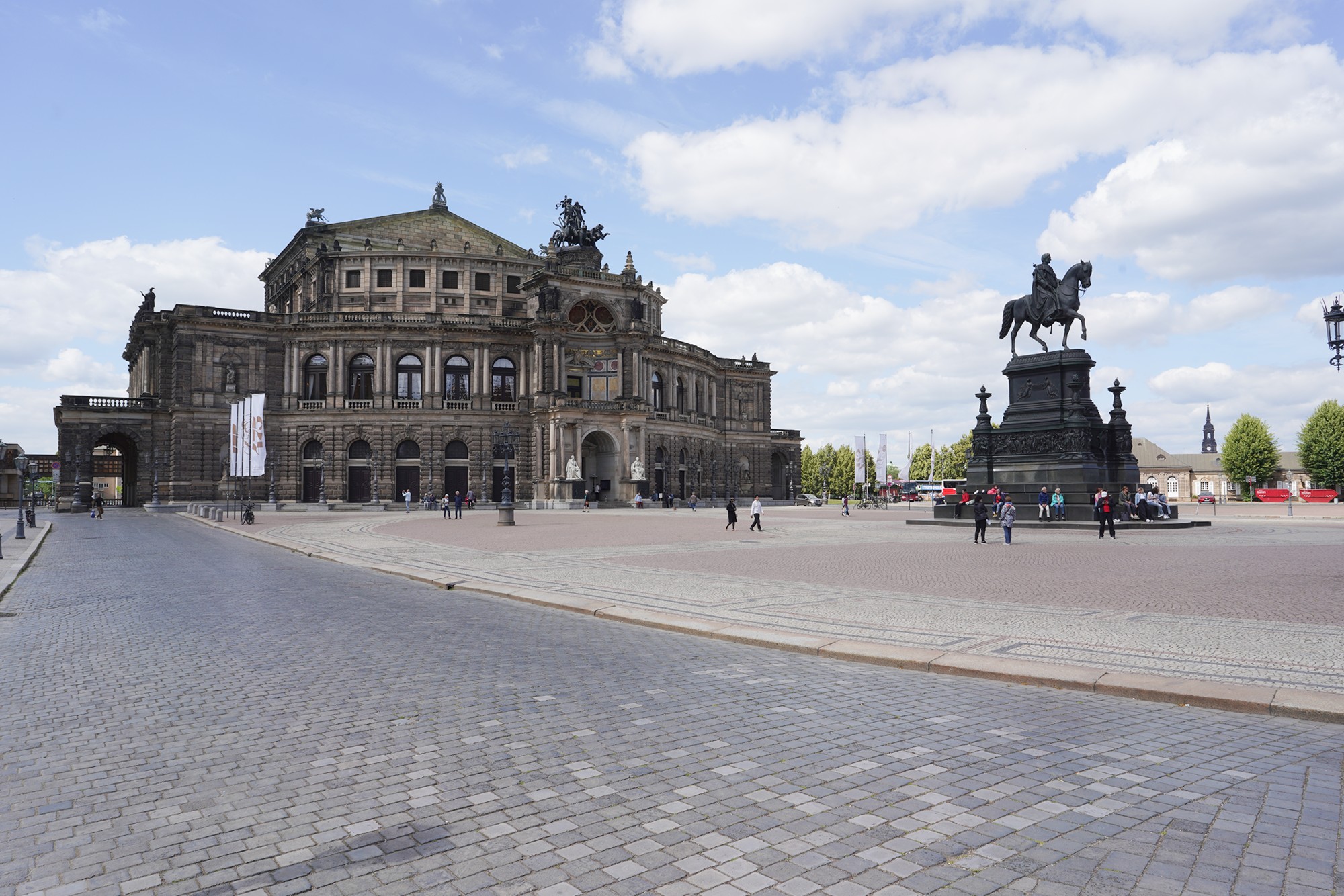
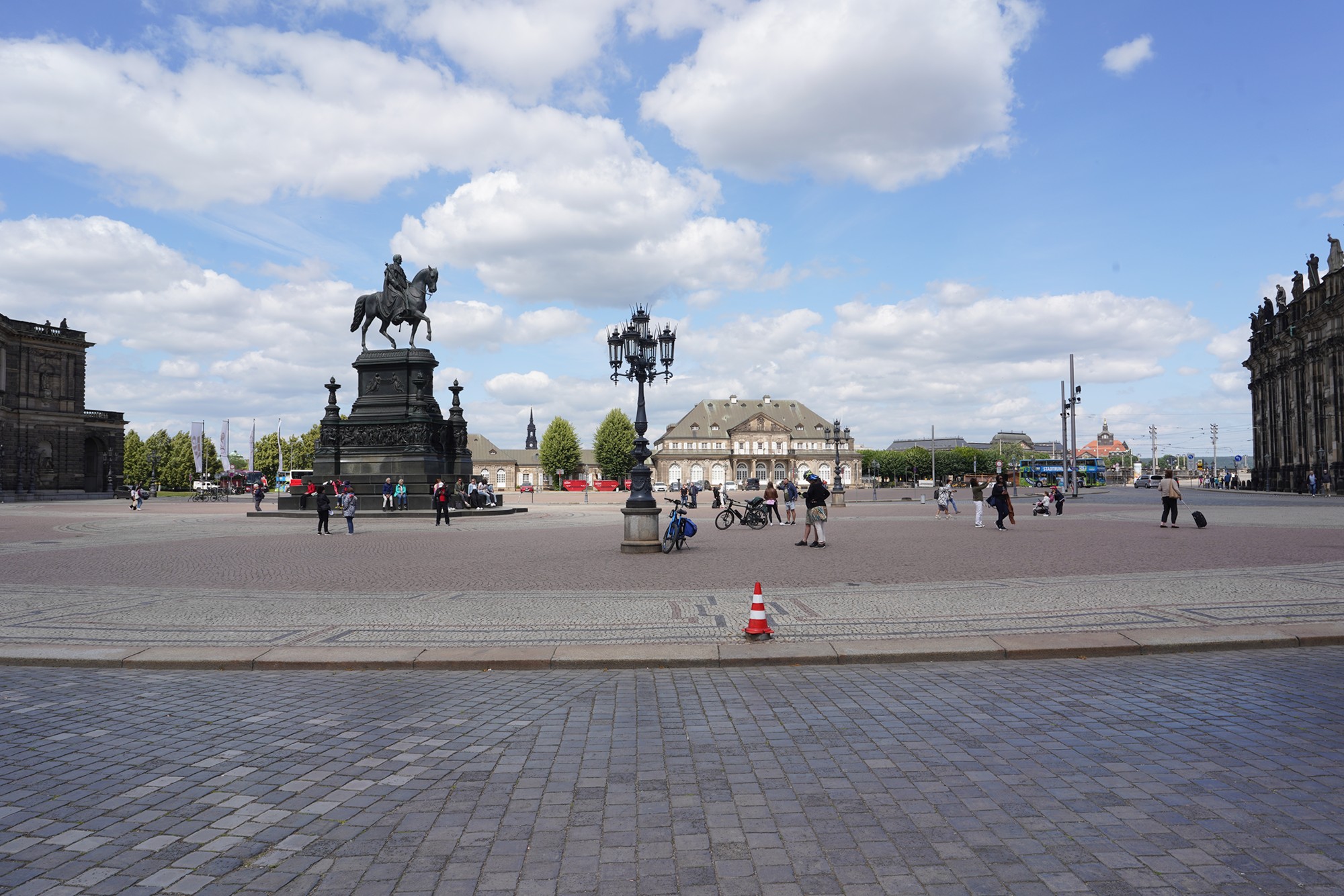
I left the plaza through the south corner
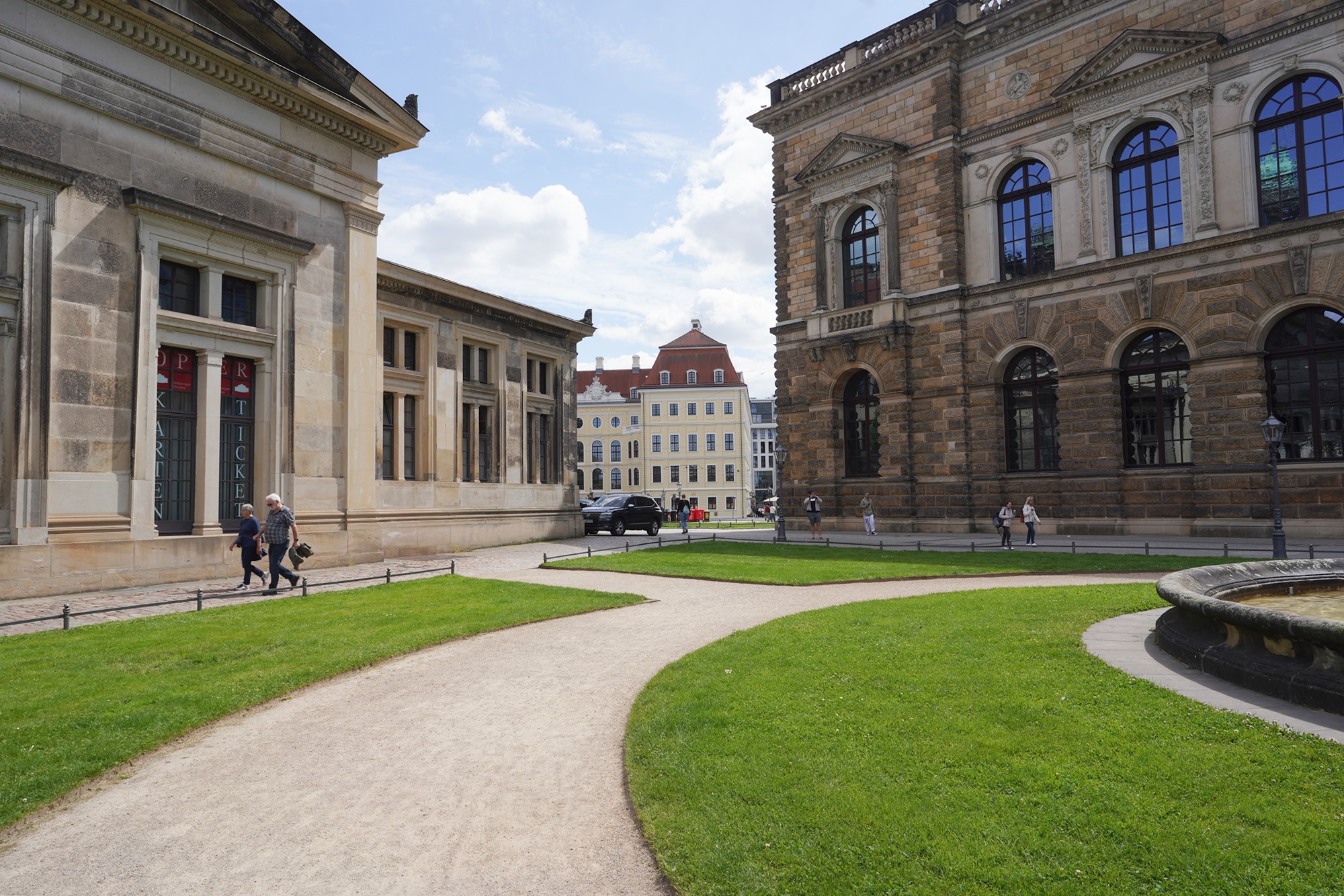
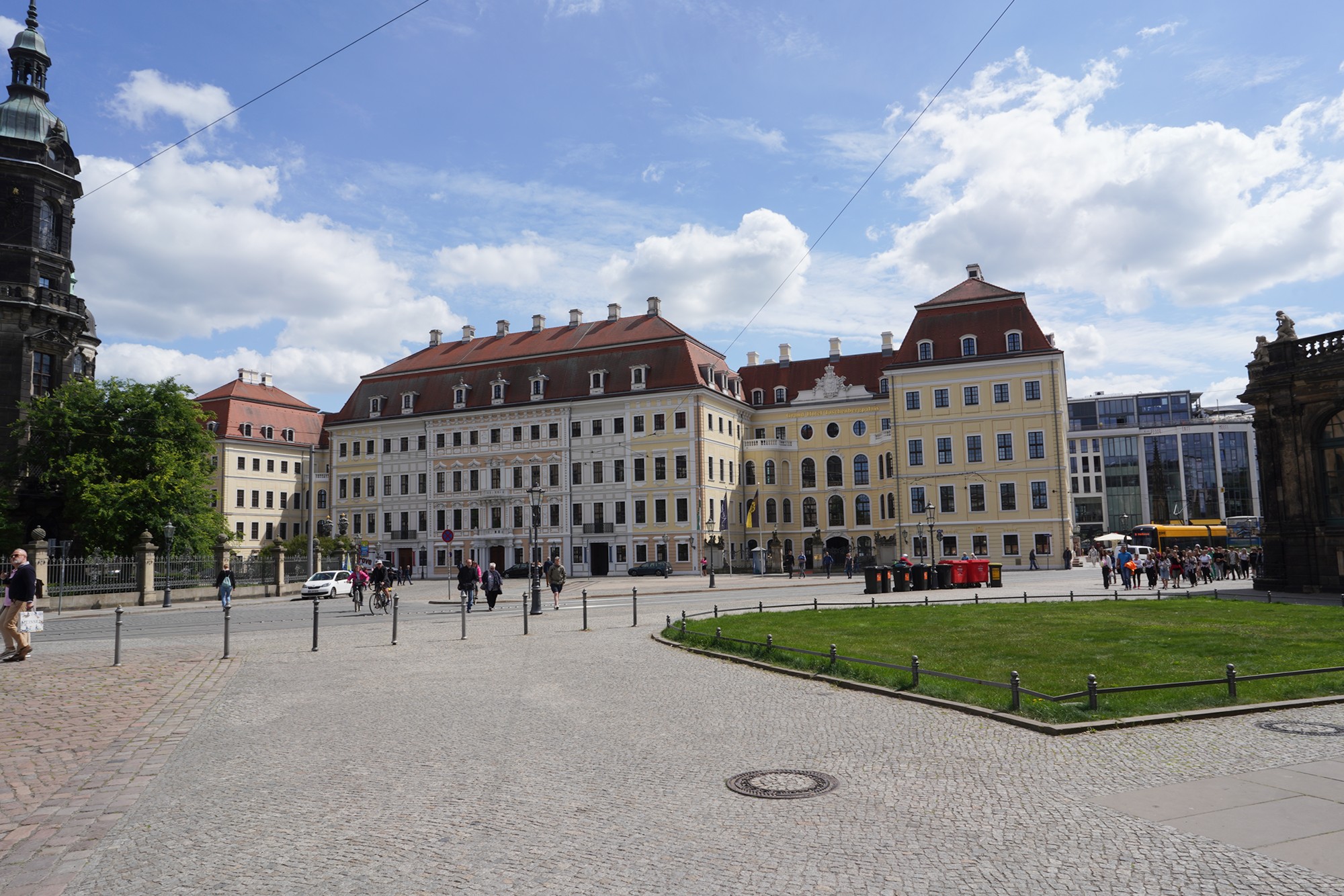
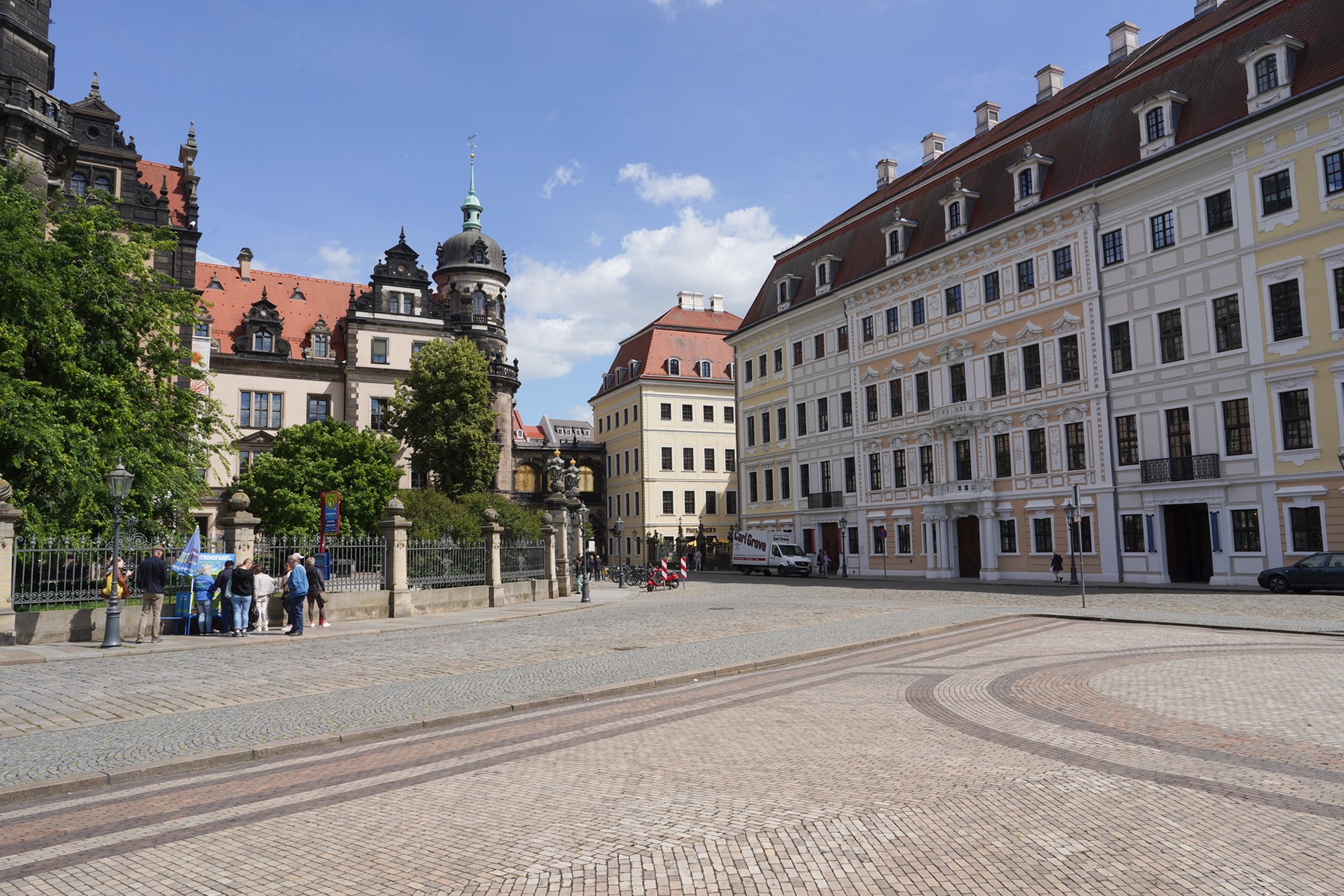
There is a bridge building connecting the Dresden Castle and the yellow building.
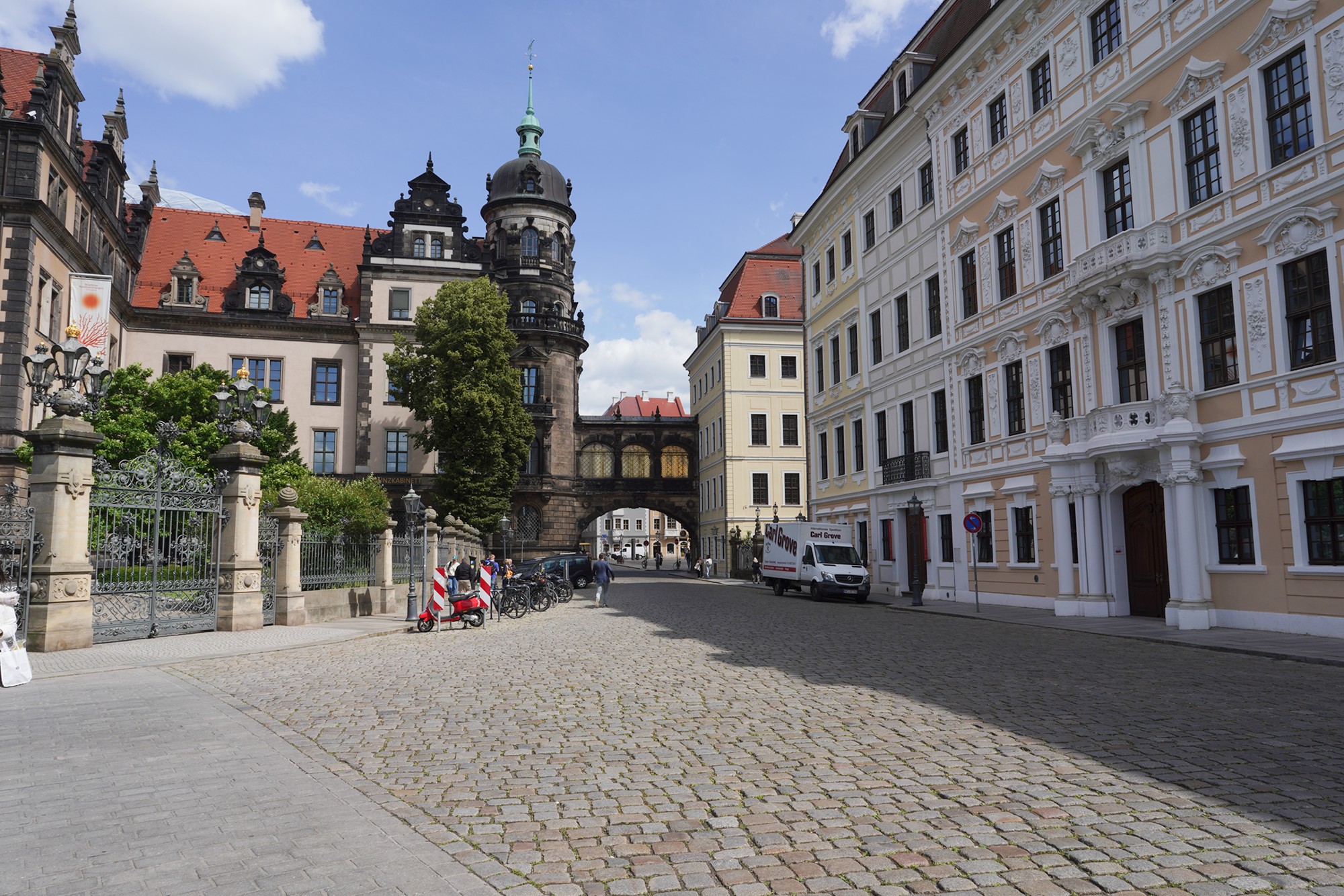
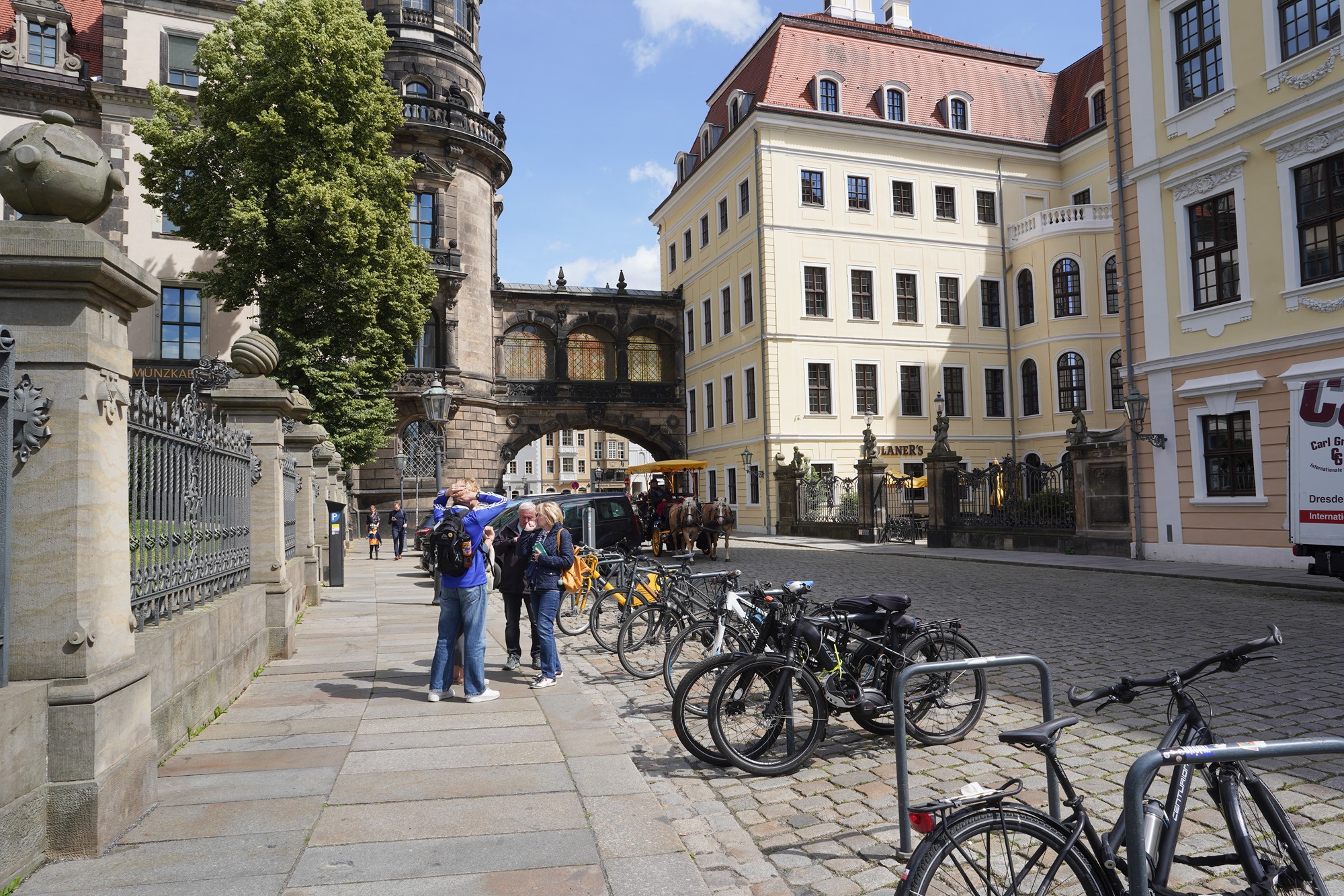
Another plaza after the bridge building
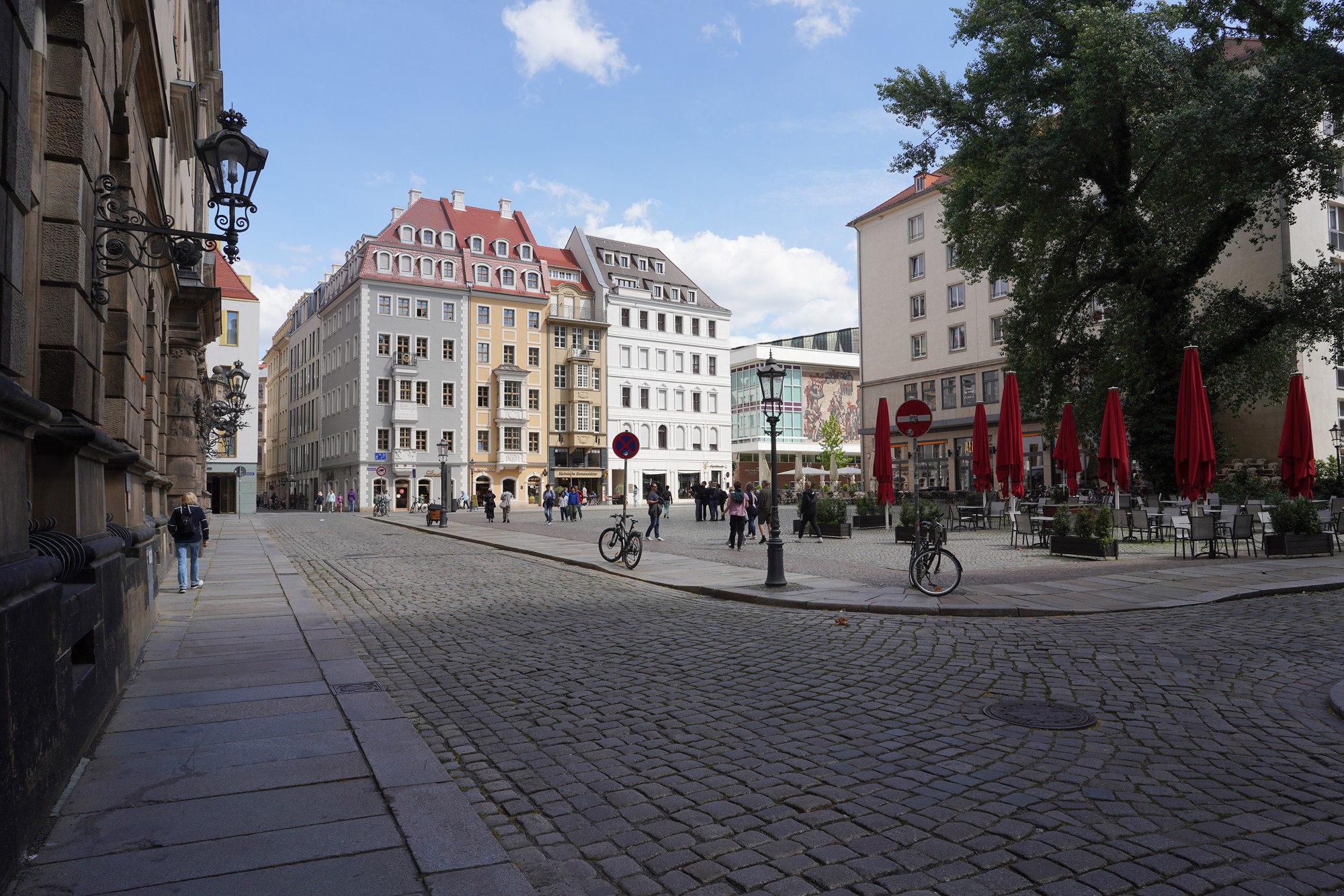
The back side
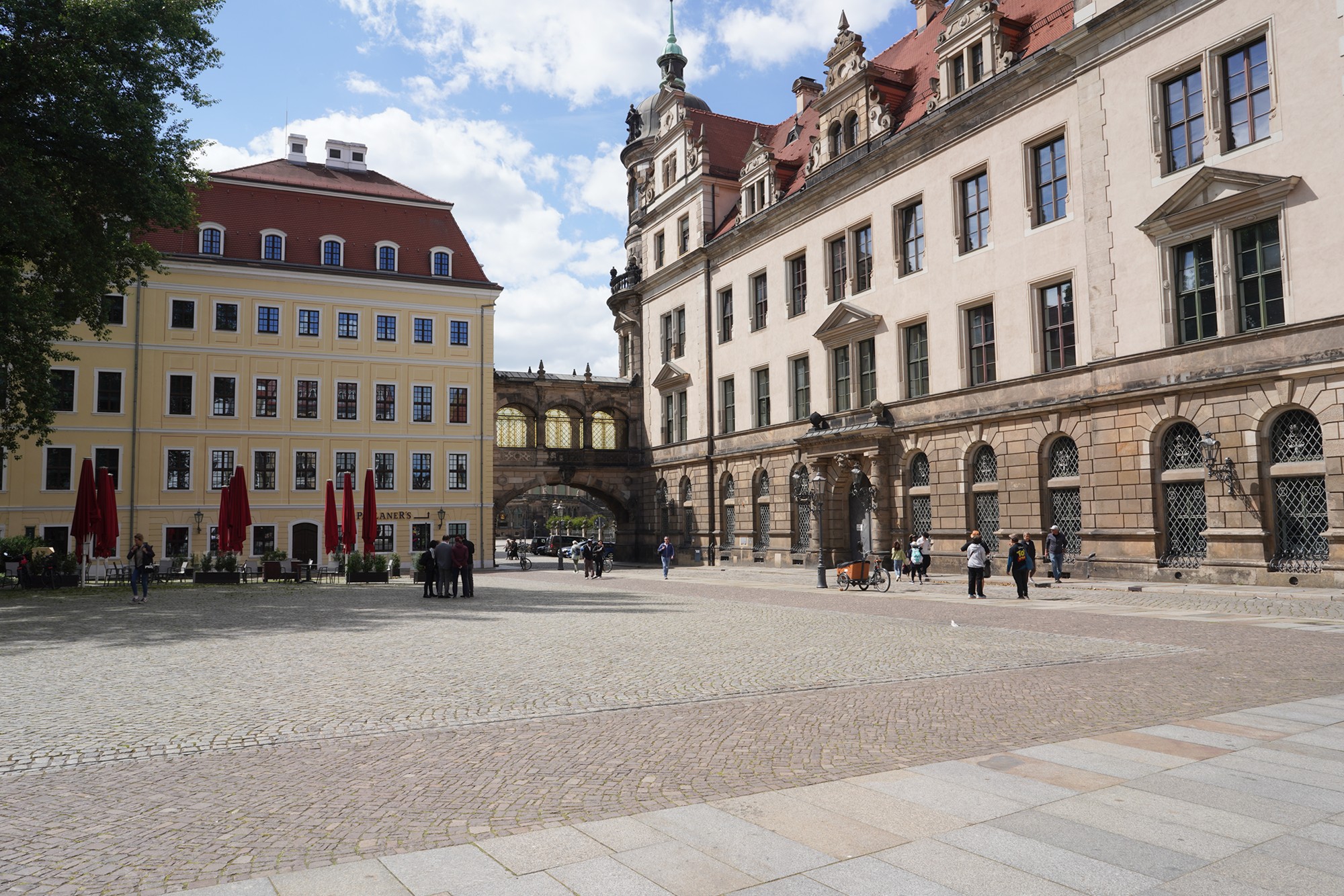
The Dresden Castle – The Dresden Castle has a history spanning over 800 years. Its origins date back to the 13th century, when it was first built as a medieval fortress. Over the centuries, it evolved into a magnificent royal residence for the House of Wettin, the ruling family of Saxony.
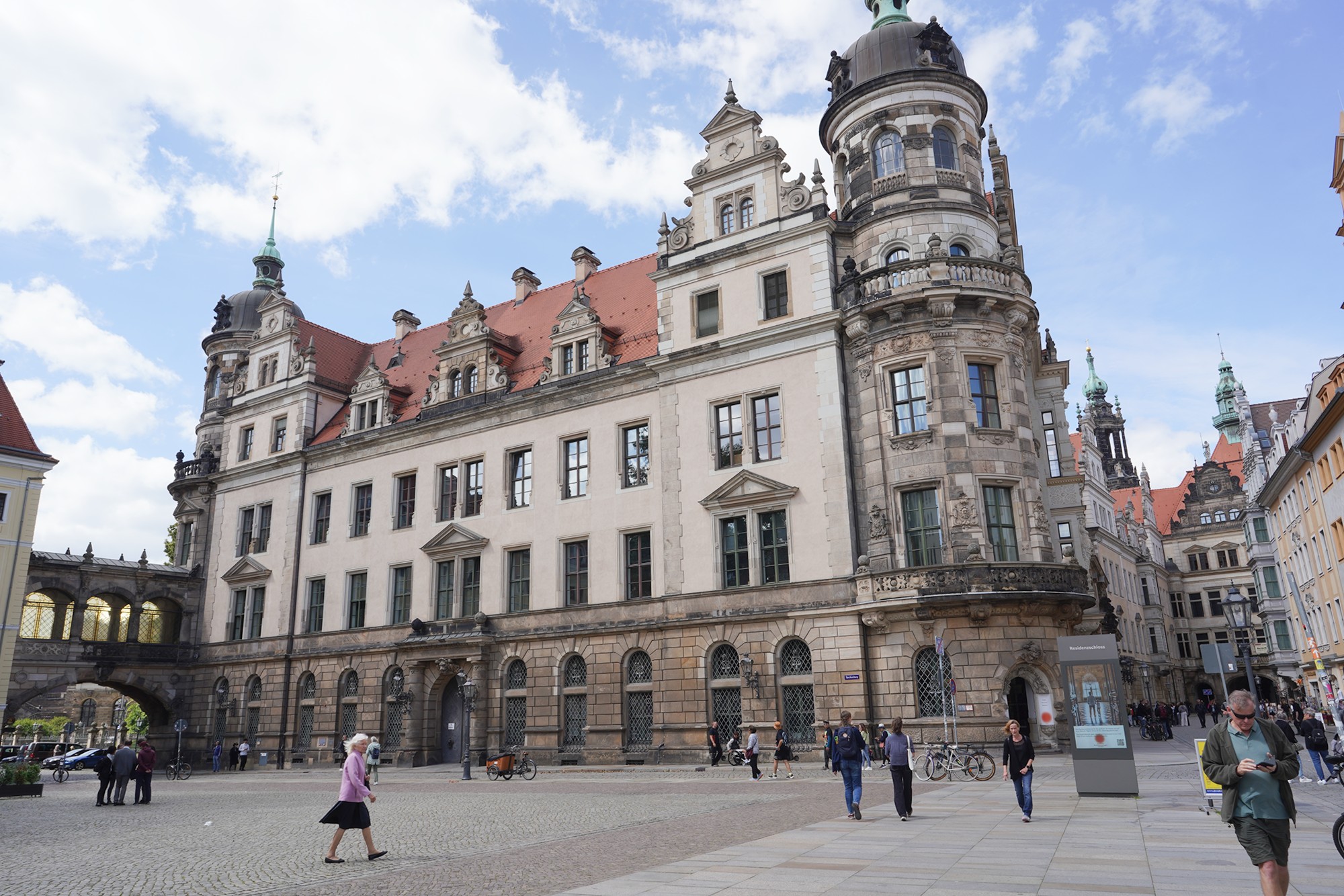
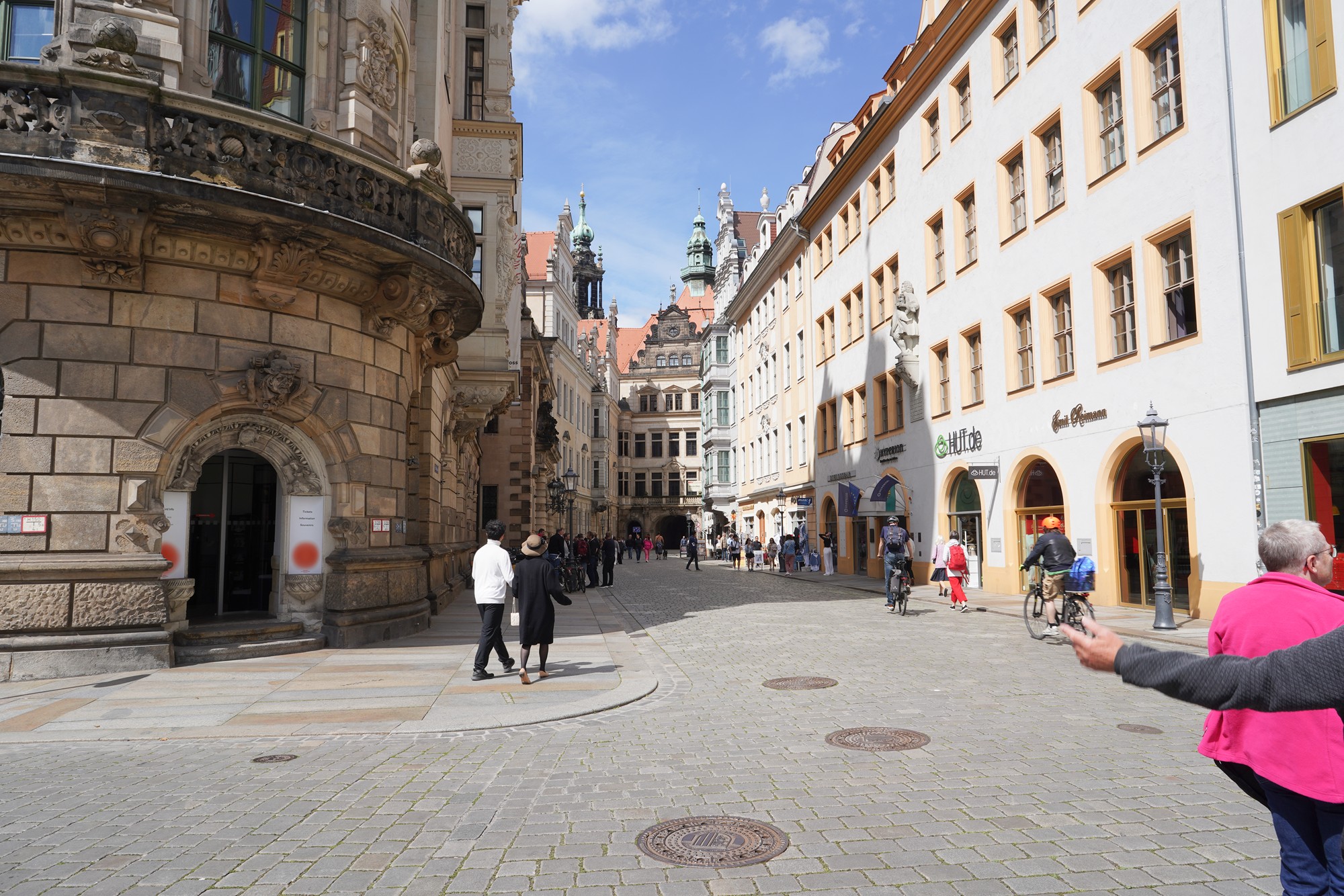
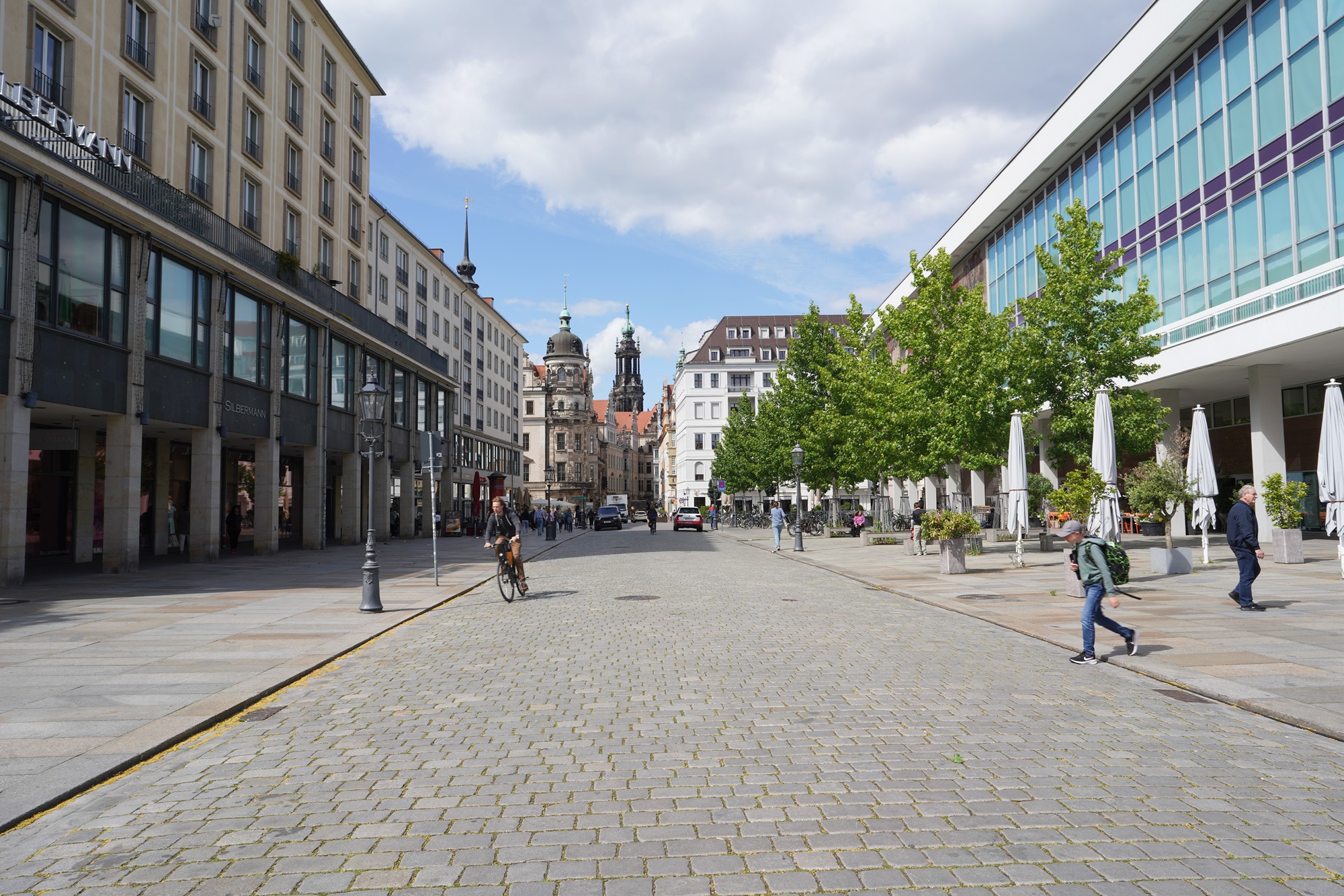
I left the plaza and walked toward the Frauenkirche Dresden Church.
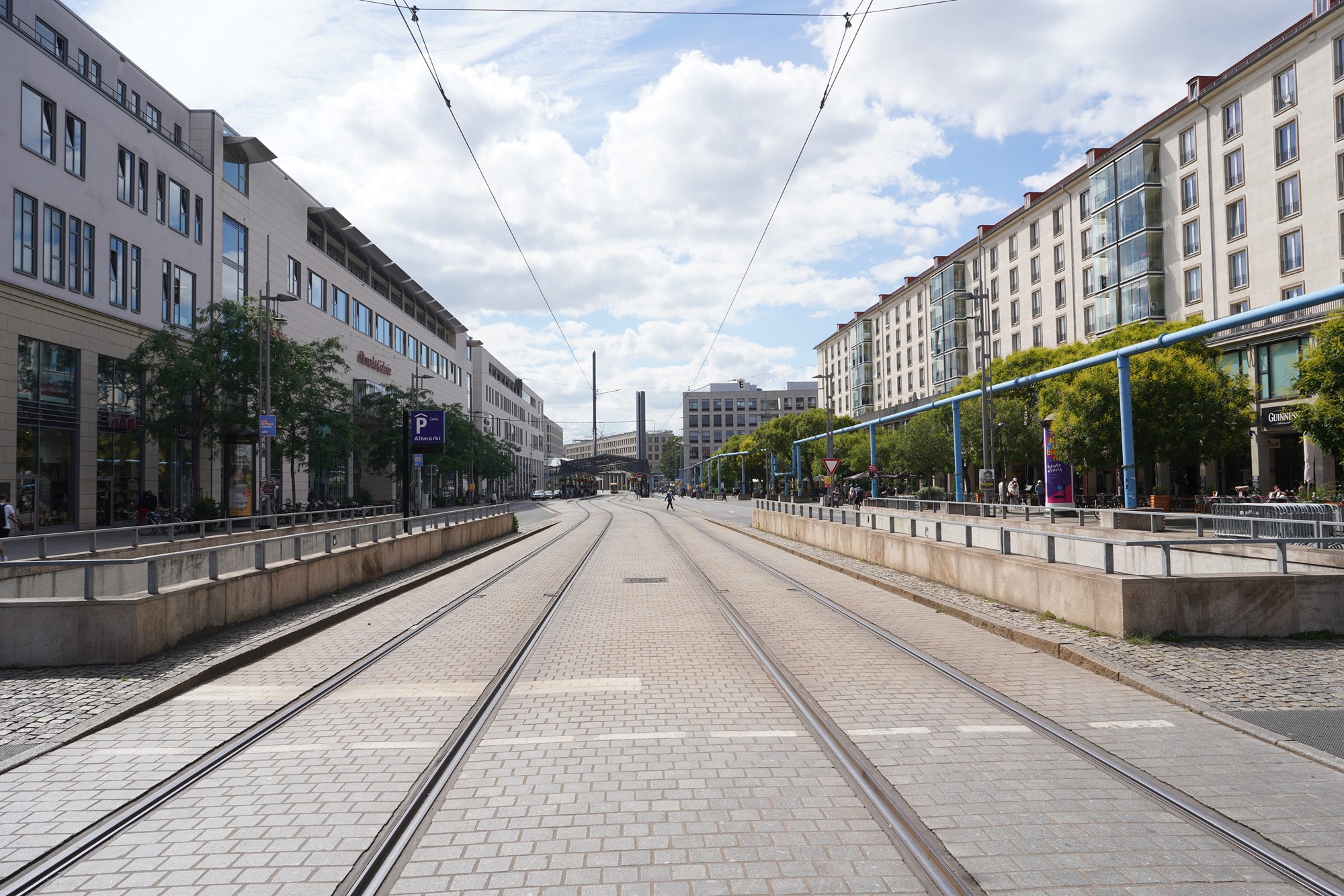
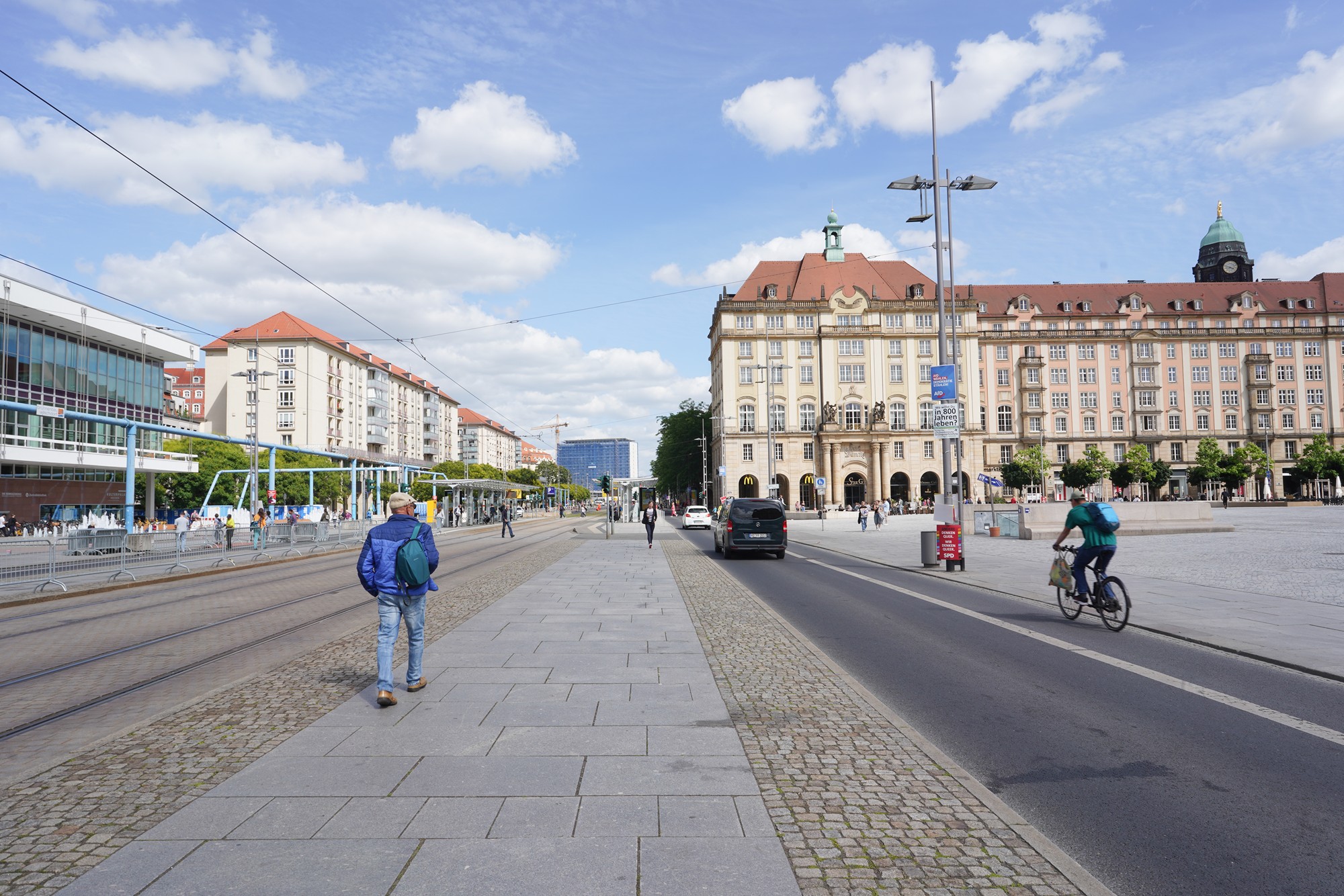
Another plaza on the way to Frauenkirche Dresden Church
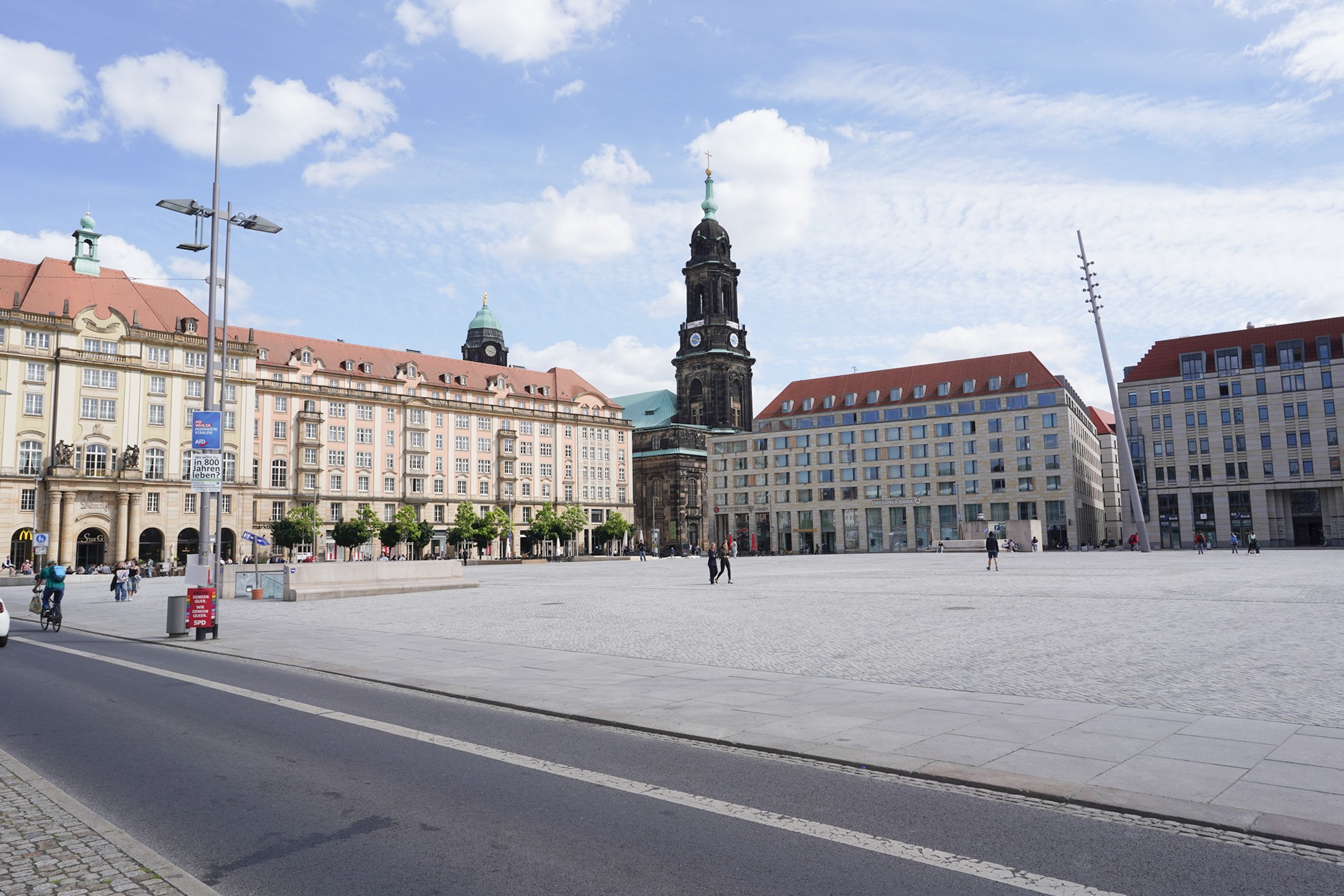
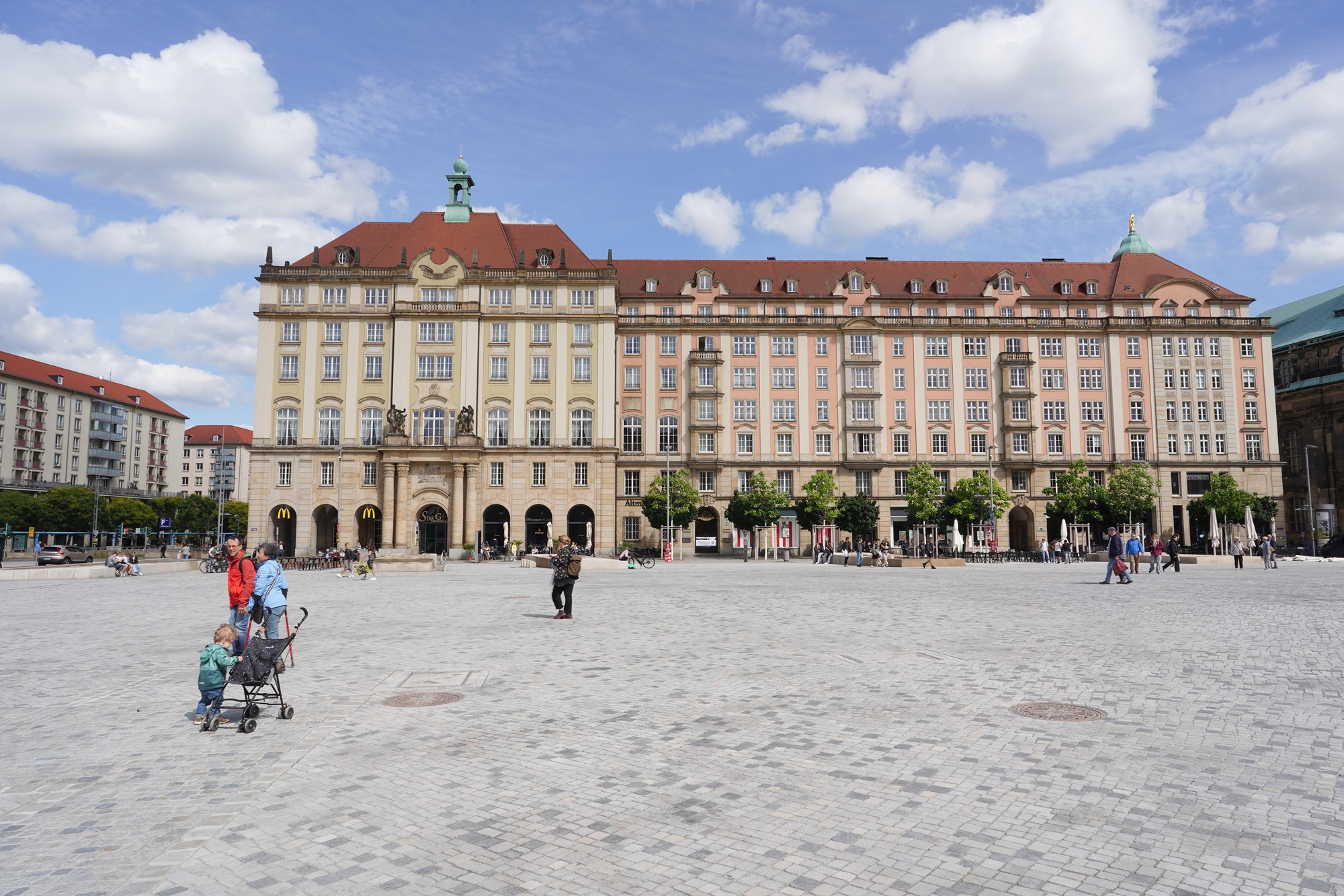
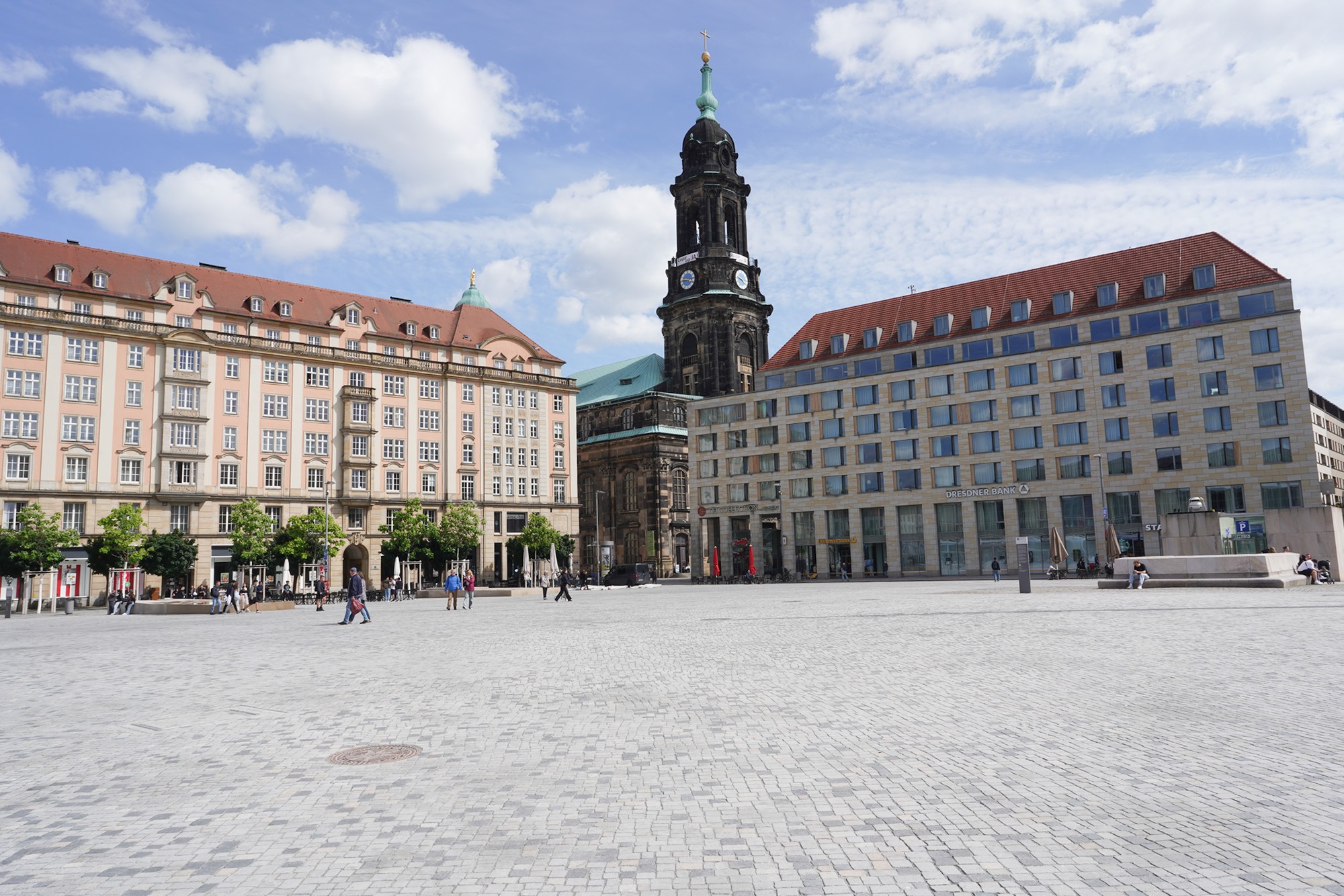
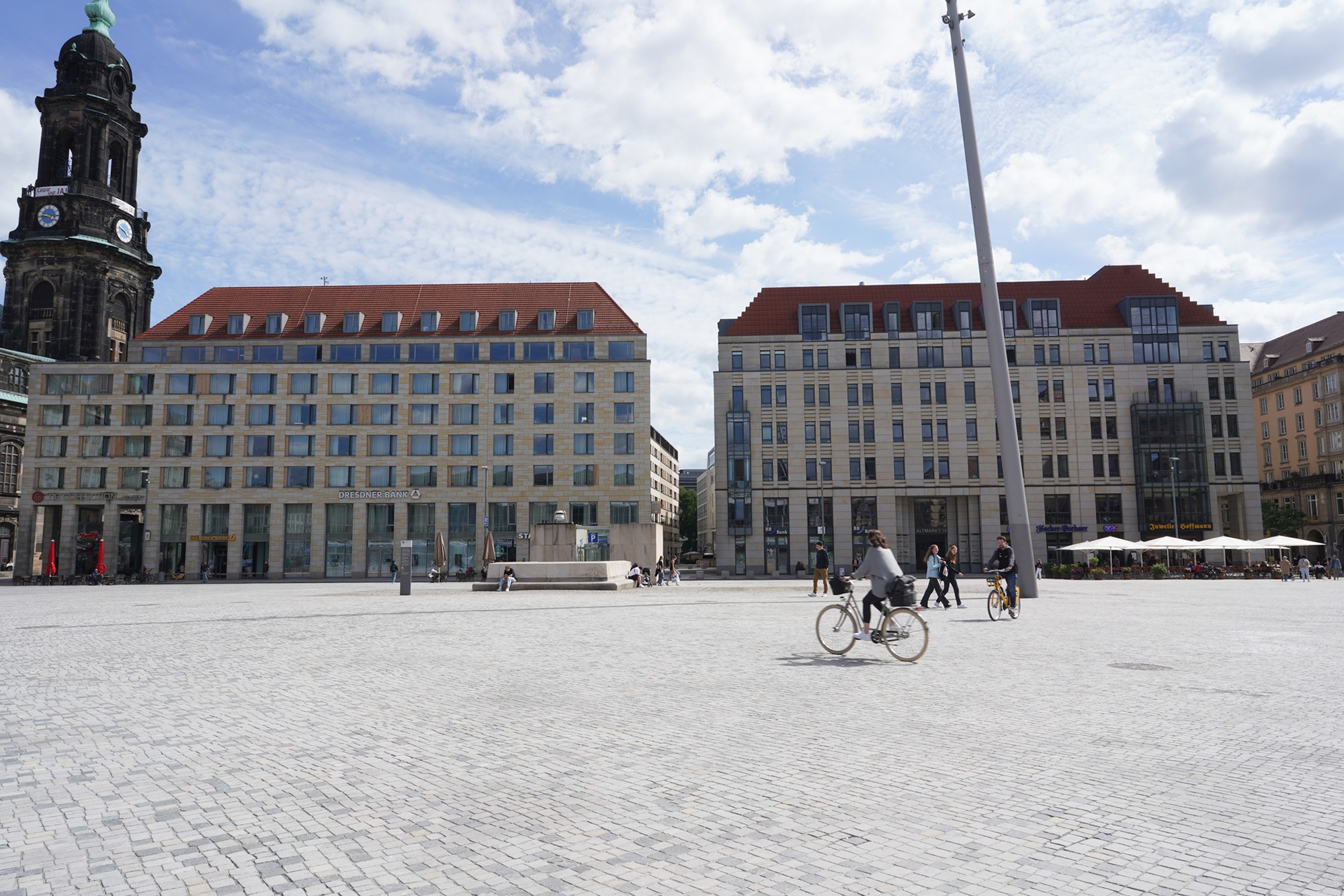
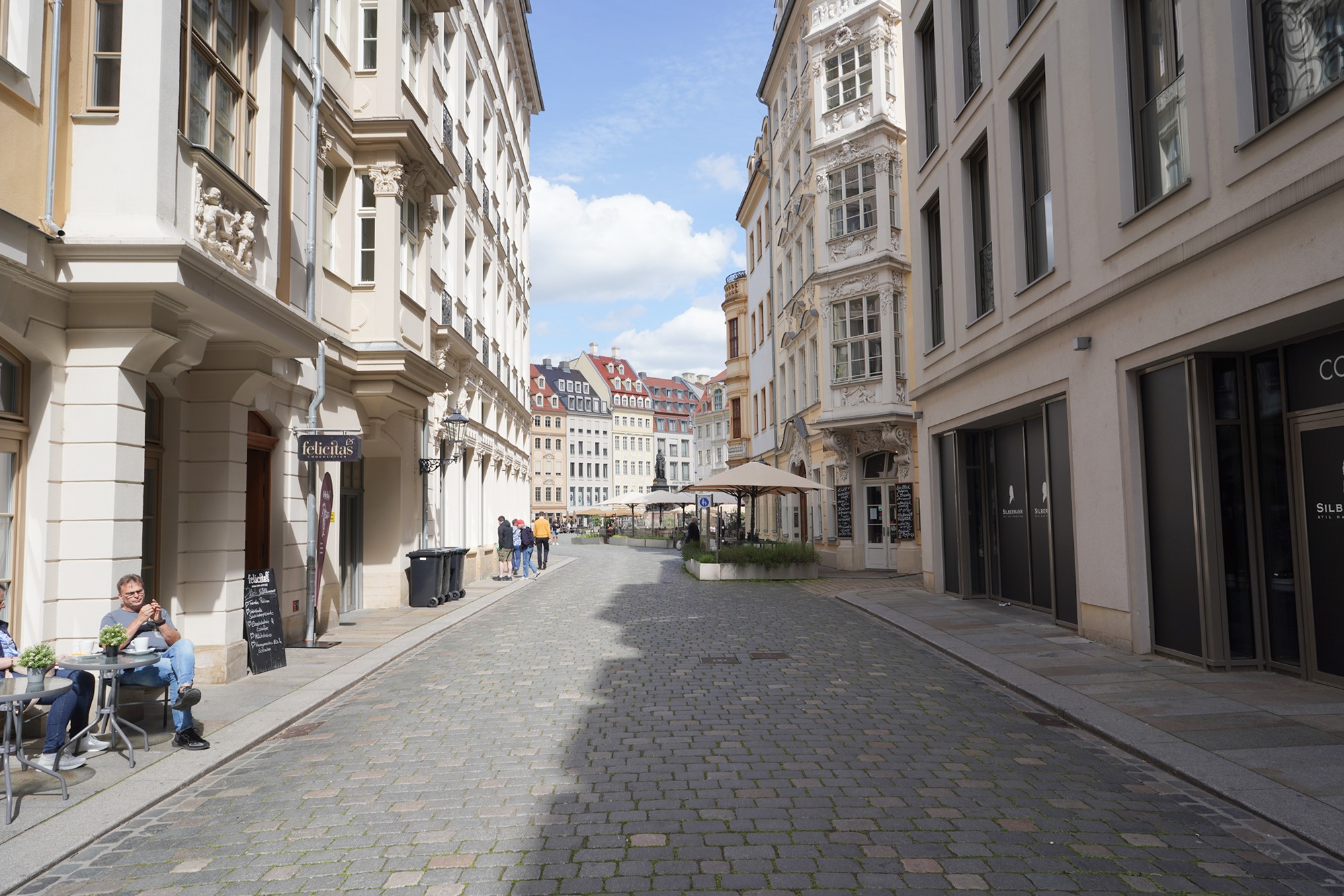
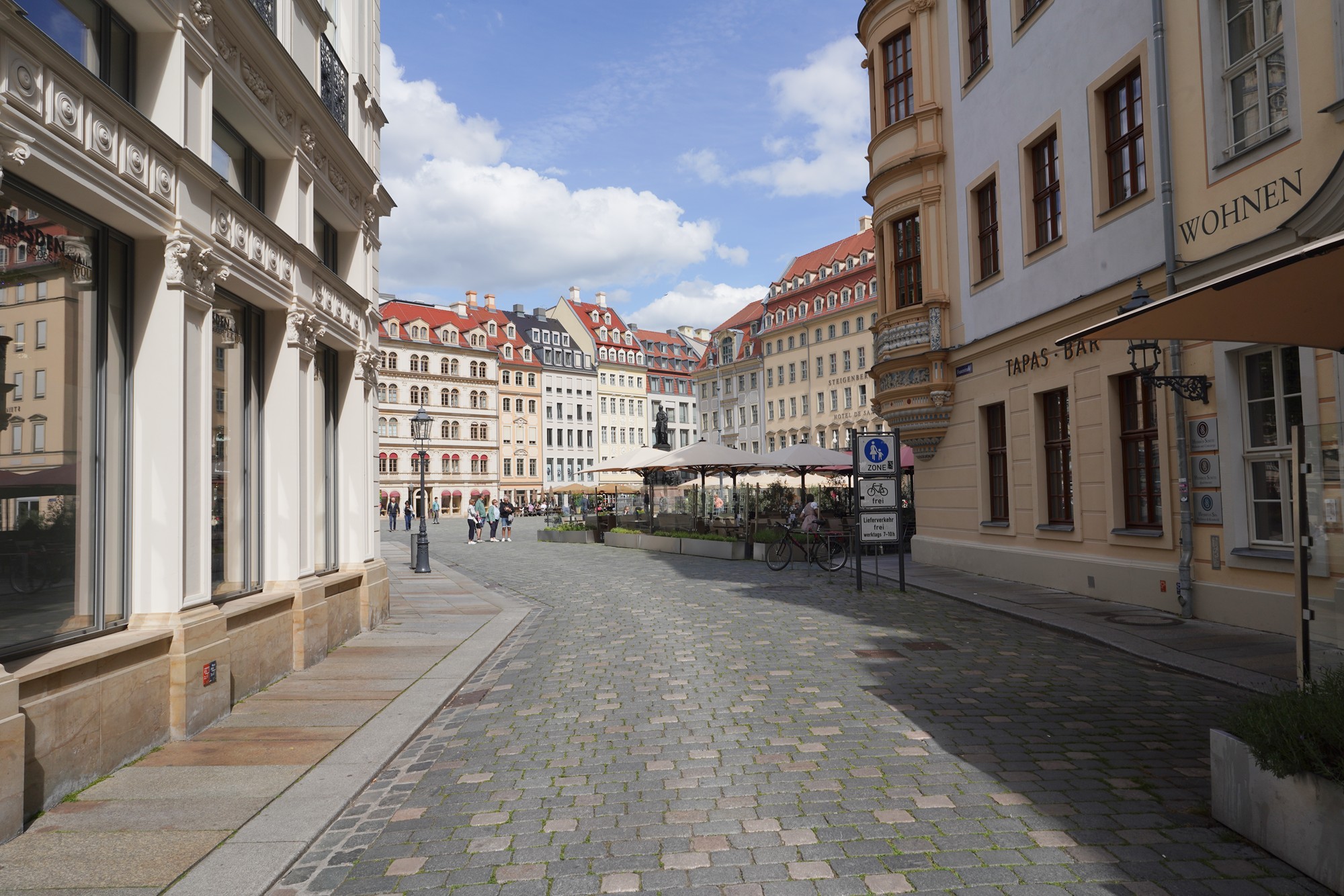
Neumarkt Square
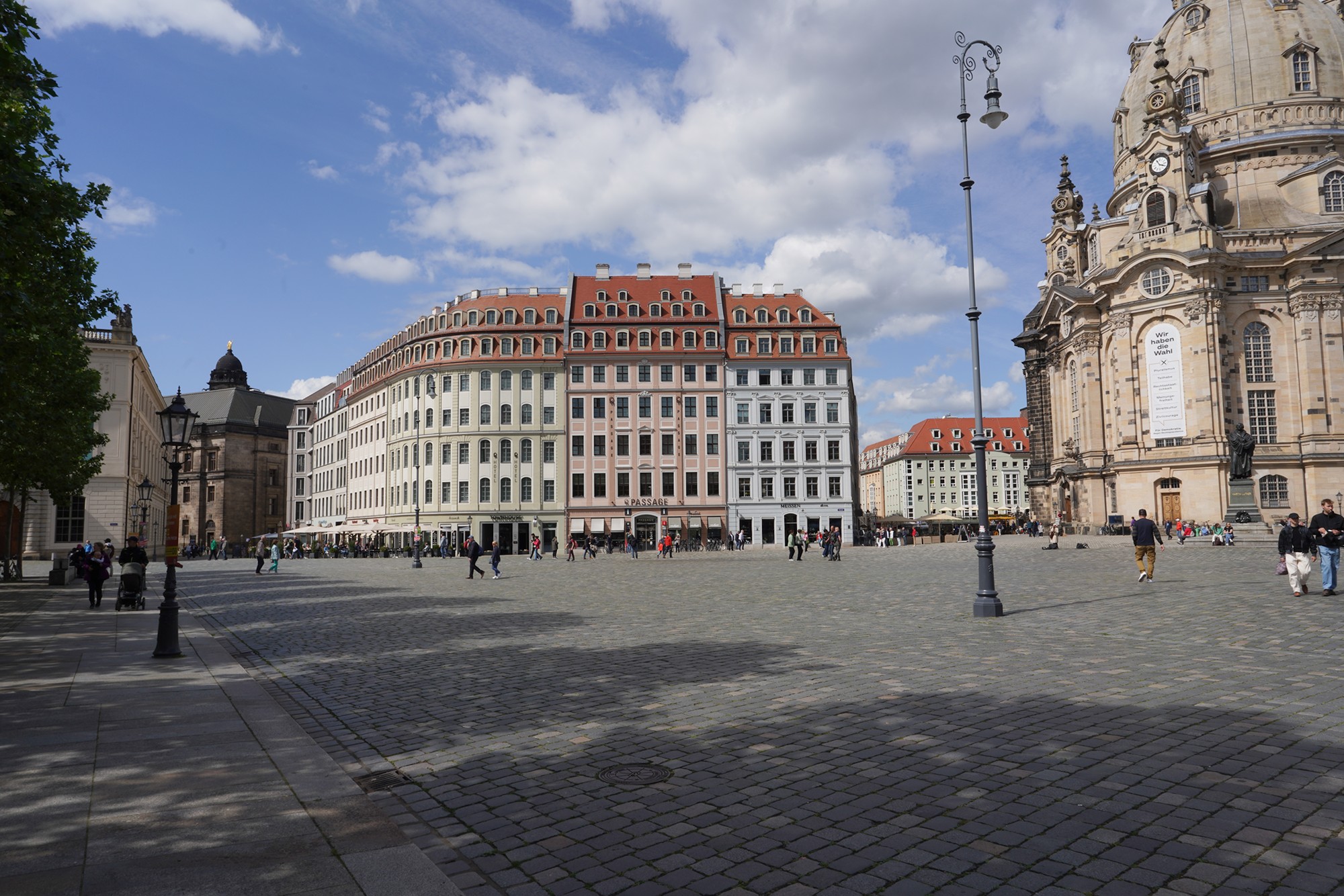
Frauenkirche Dresden Protestant Church in Neumarkt Square
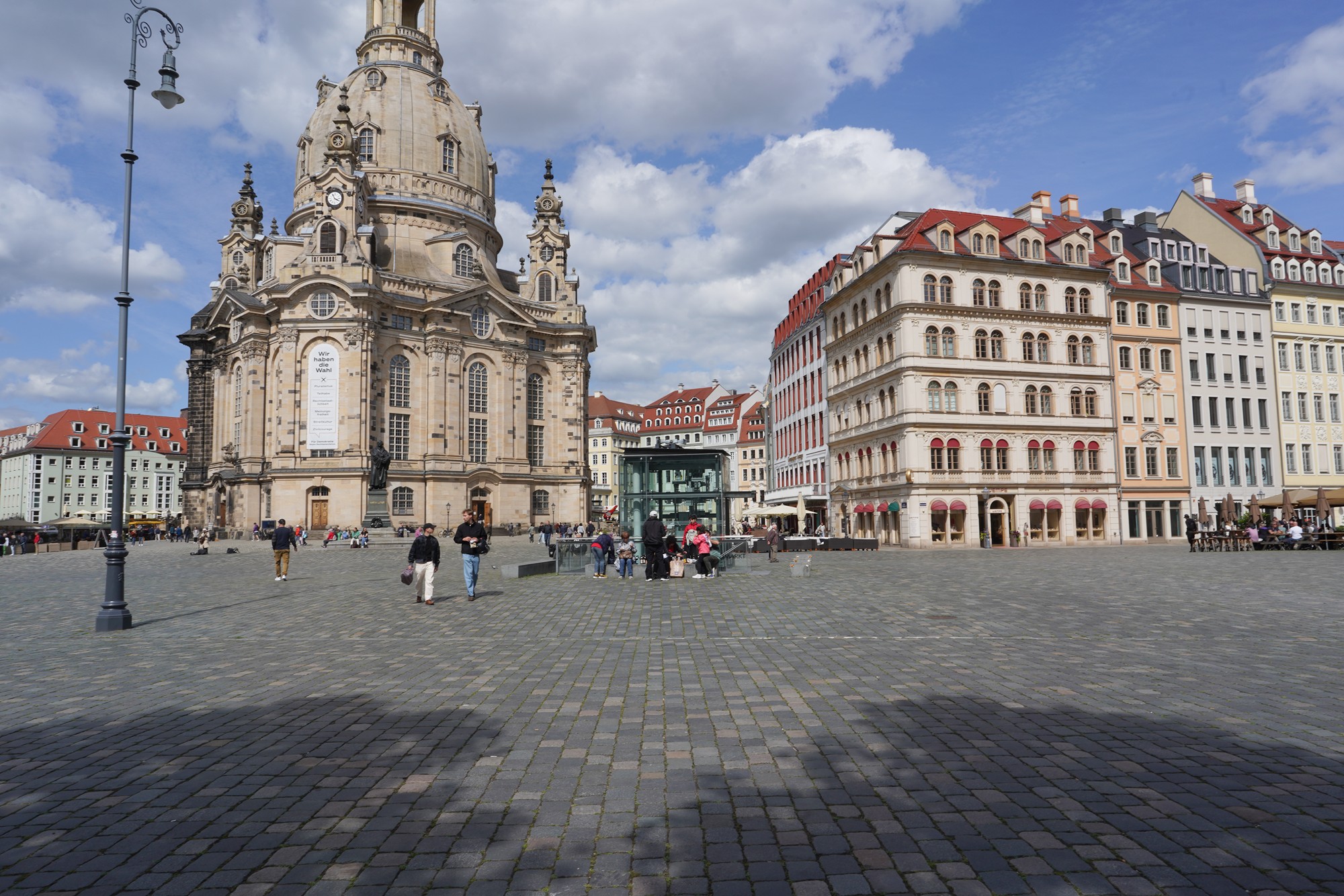
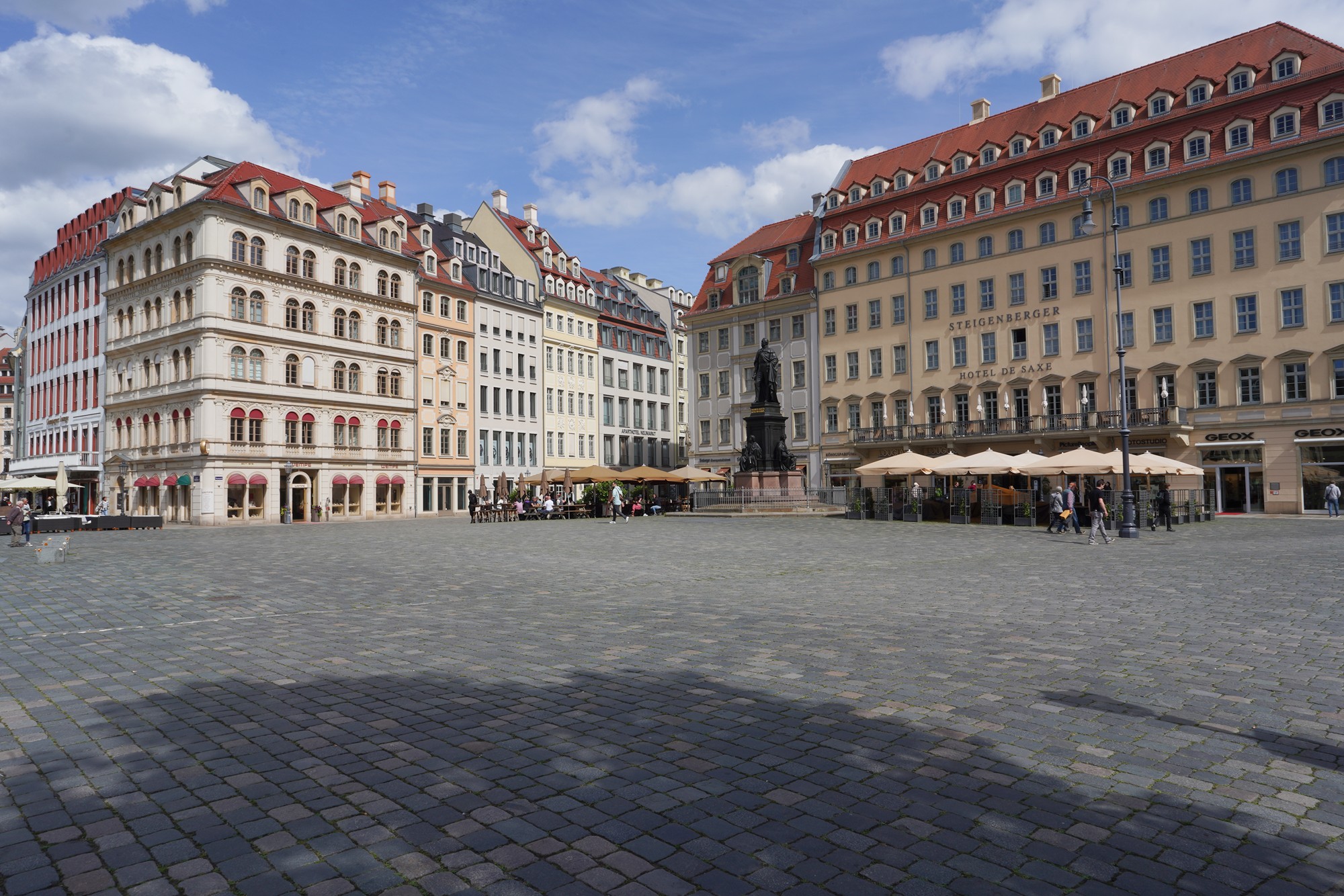
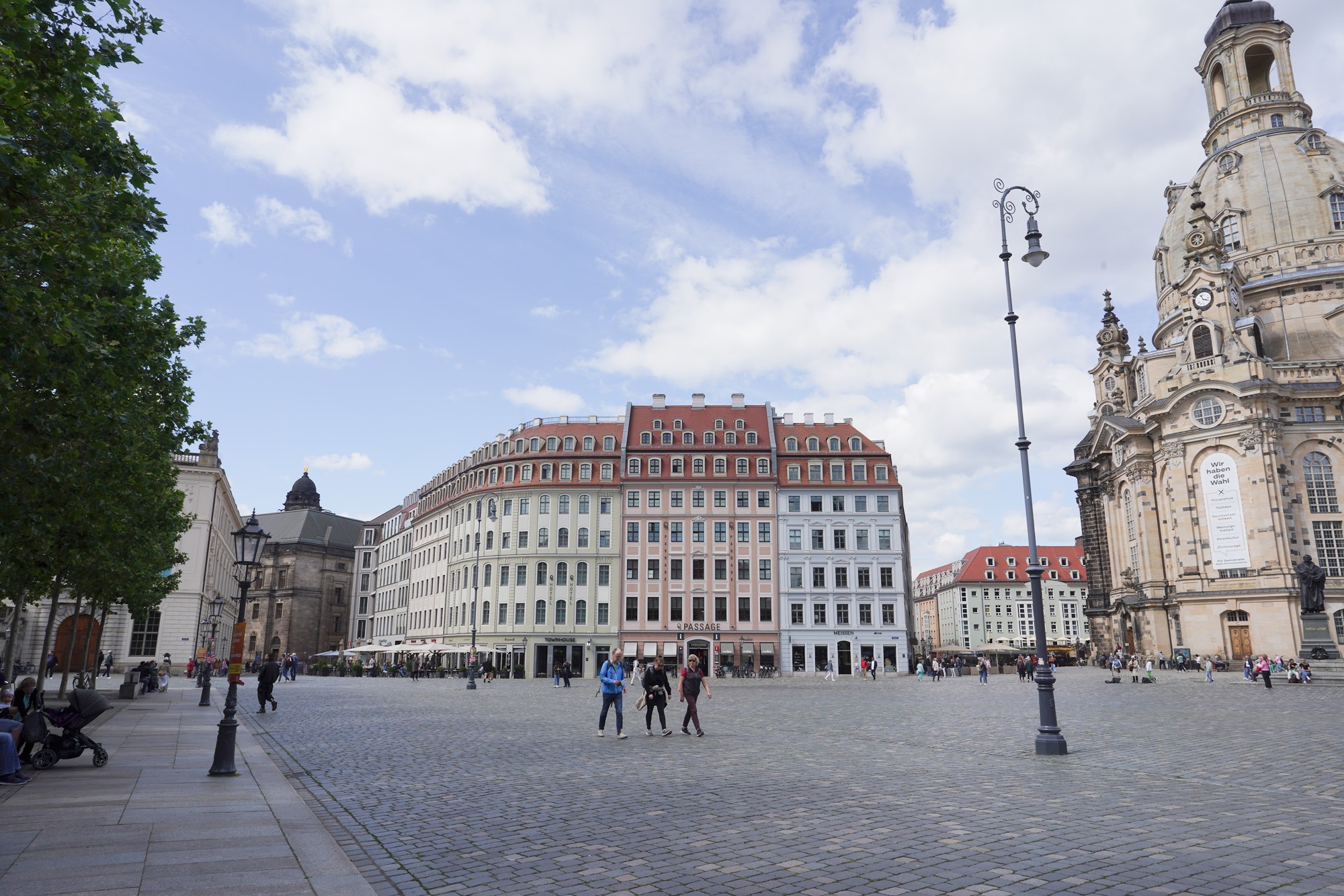
The original Frauenkirche was built between 1726 and 1743, and architect George Bähr designed it in the Baroque style. It was constructed as a Lutheran church and became one of Europe’s largest Protestant church buildings.
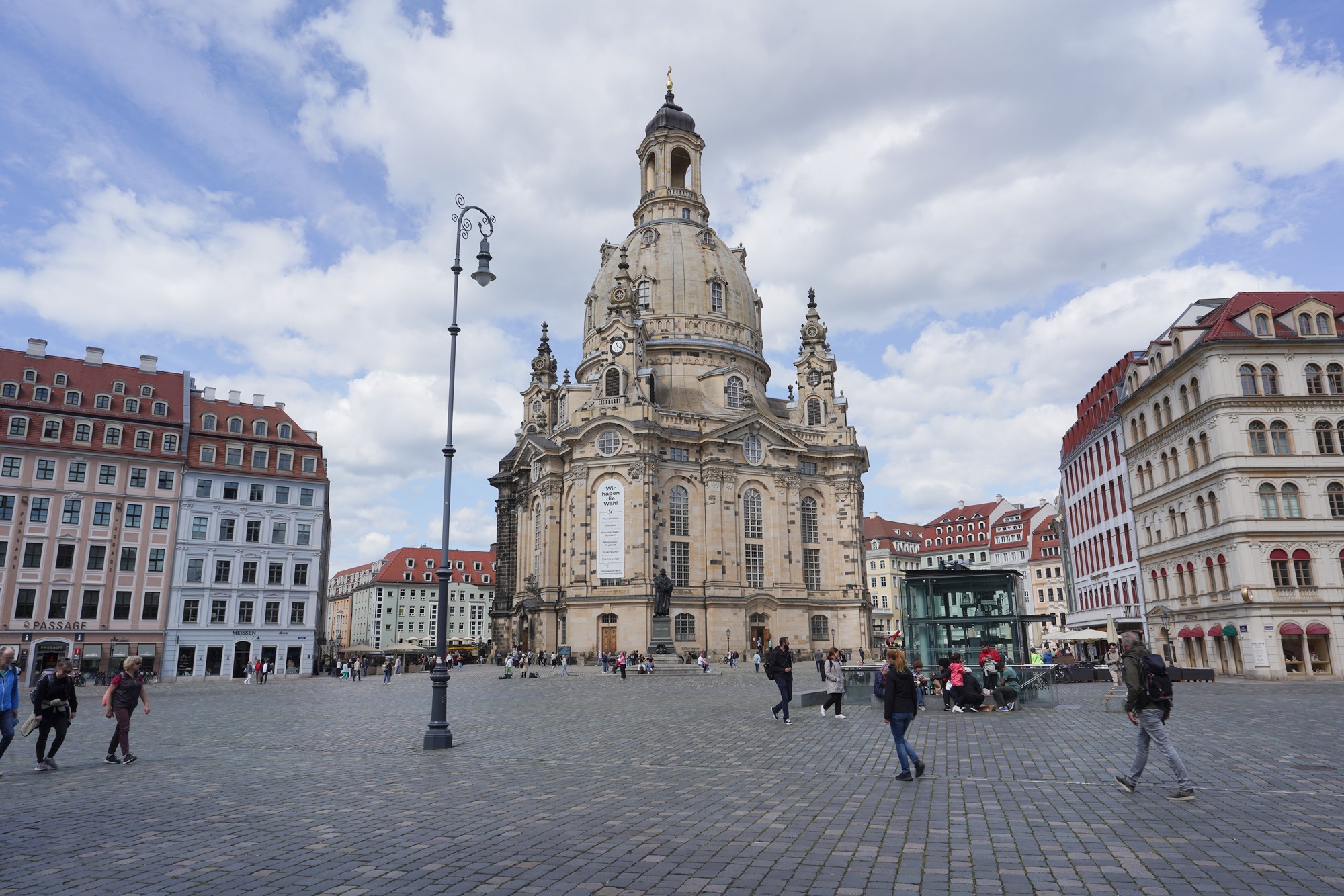
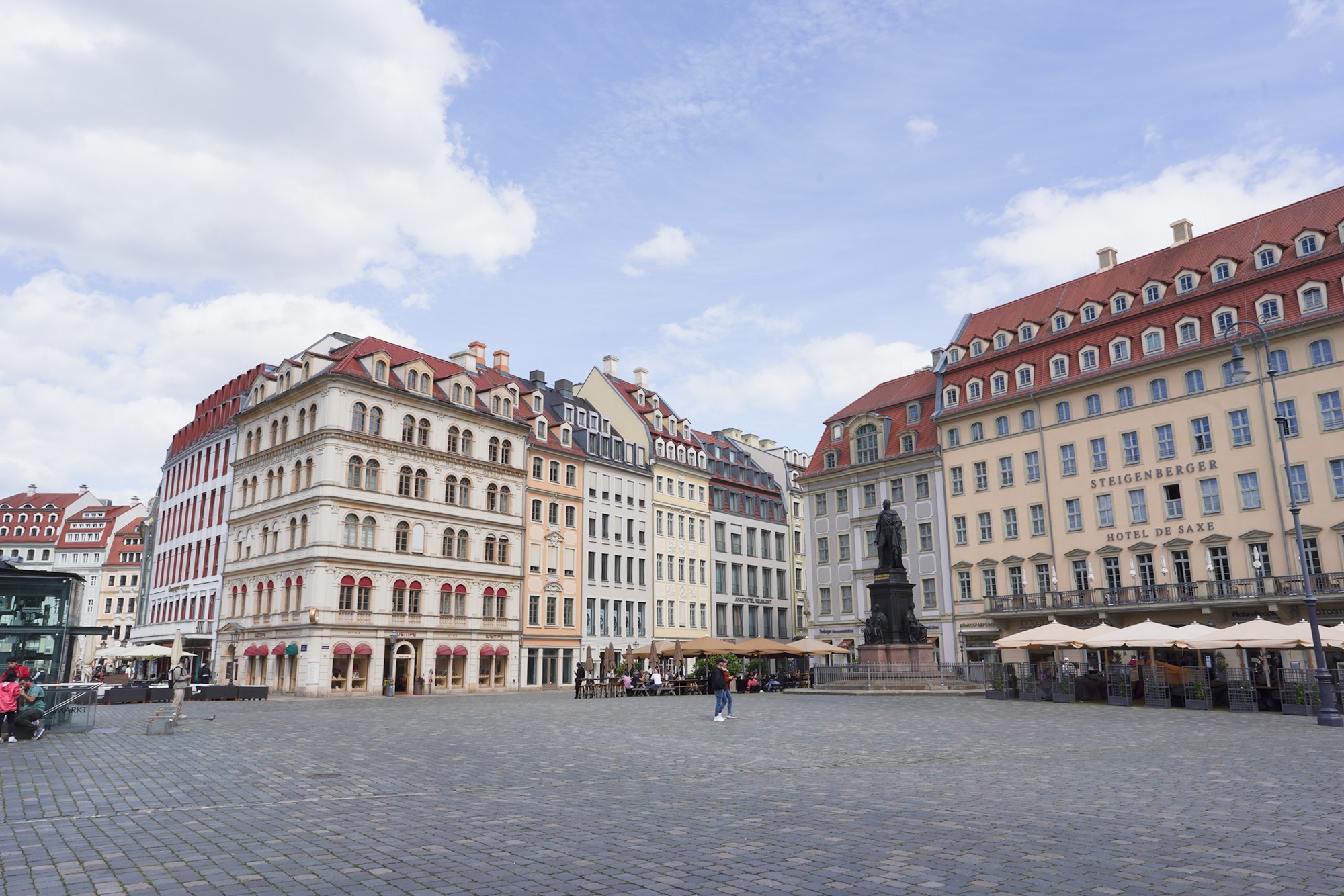
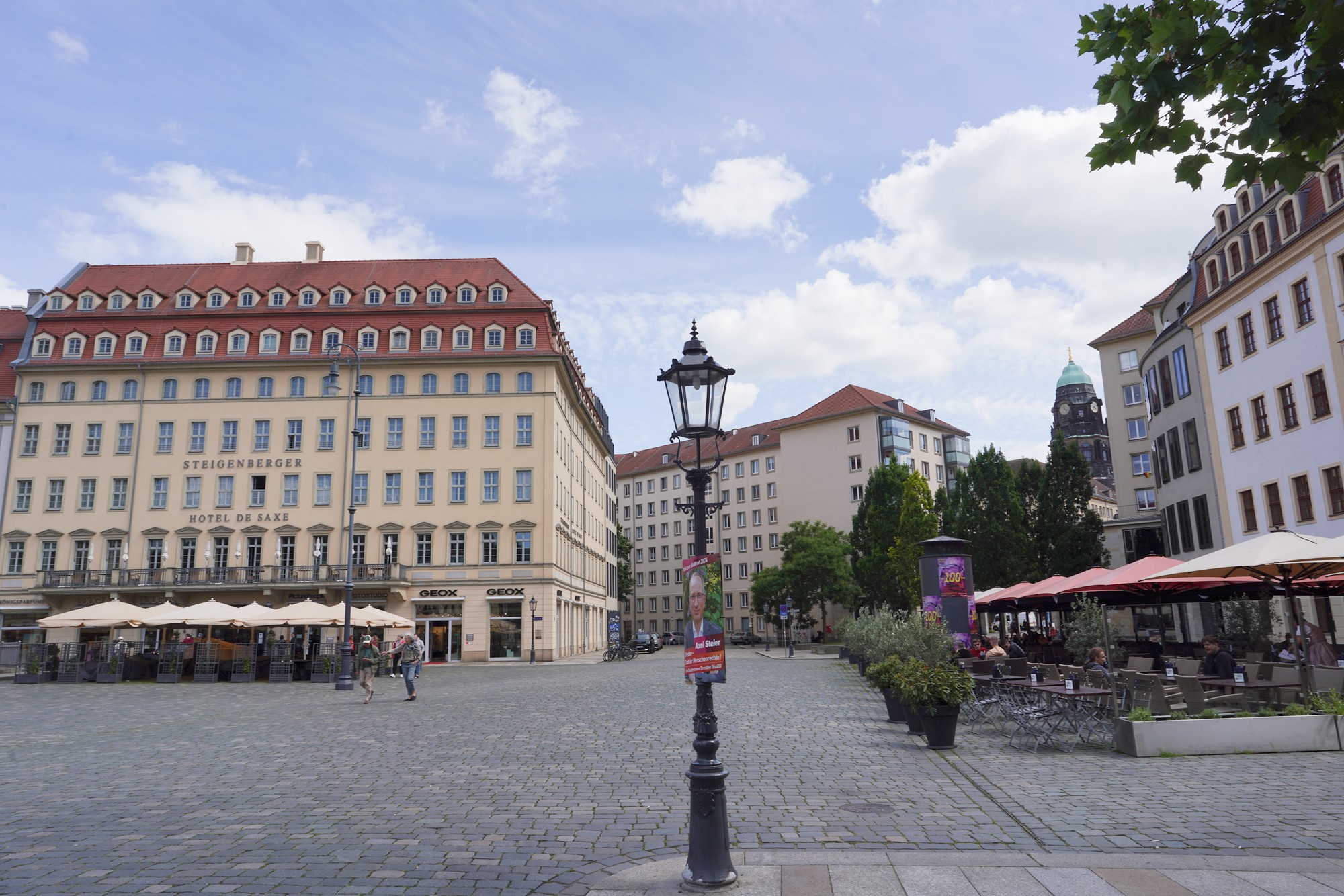
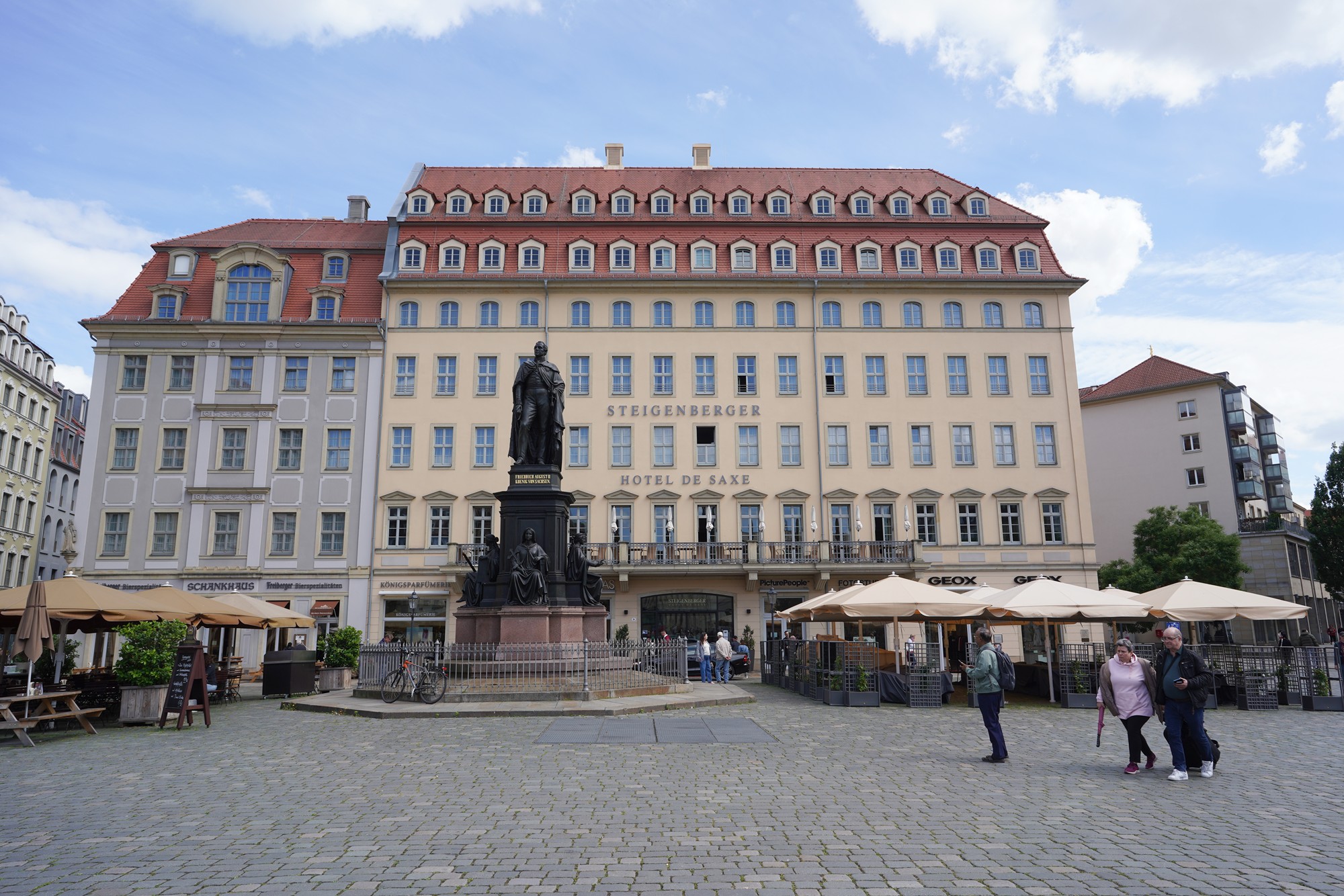
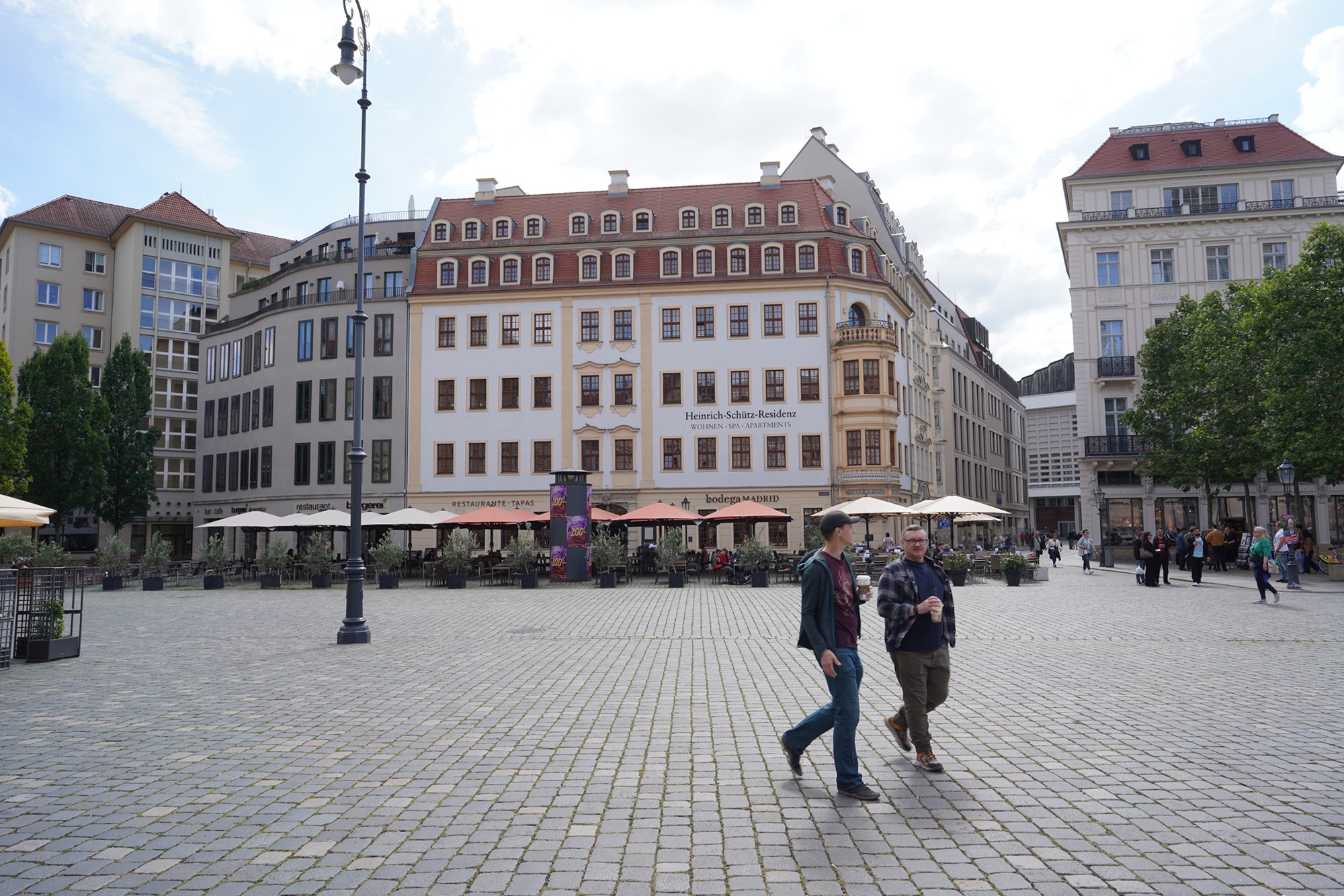
The Frauenkirche Church was completely destroyed during the Allied bombing of Dresden on February 13-14, 1945. The intense firestorm that engulfed the city caused the church’s massive dome to collapse, leaving only ruins.
After the reunification of Germany in 1990, plans to reconstruct the Frauenkirche gained momentum.
The church was rebuilt using the original plans by George Bähr, and the process was carried out with great care, incorporating many of the original stones that had survived the bombing. These original stones are darker in color and can be seen in the new structure, contrasting with the lighter new stones.
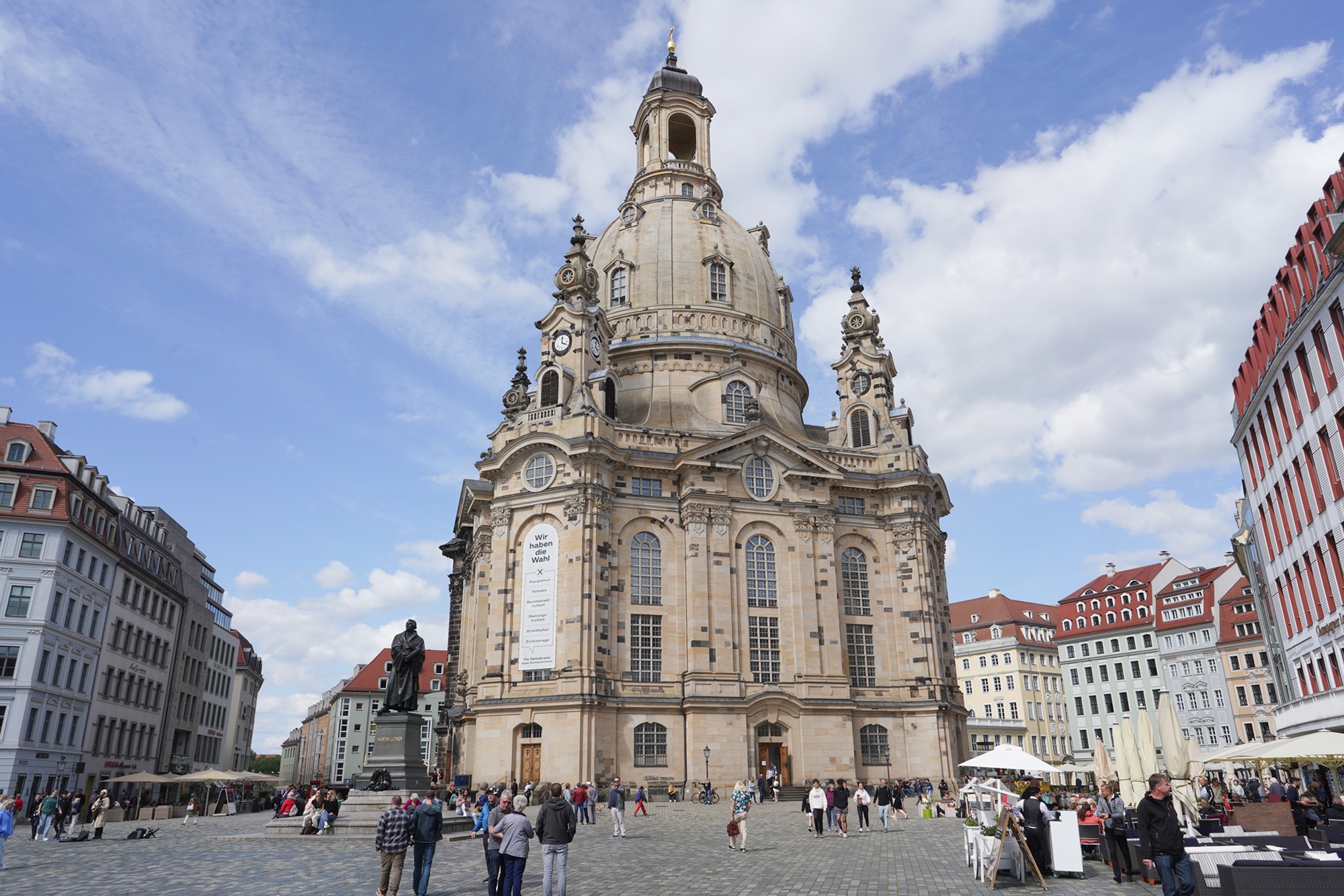
The Martin Luther Statue in front of the Frauenkirche (Church of Our Lady) in Dresden is a prominent monument dedicated to the seminal figure of the Protestant Reformation, Martin Luther.
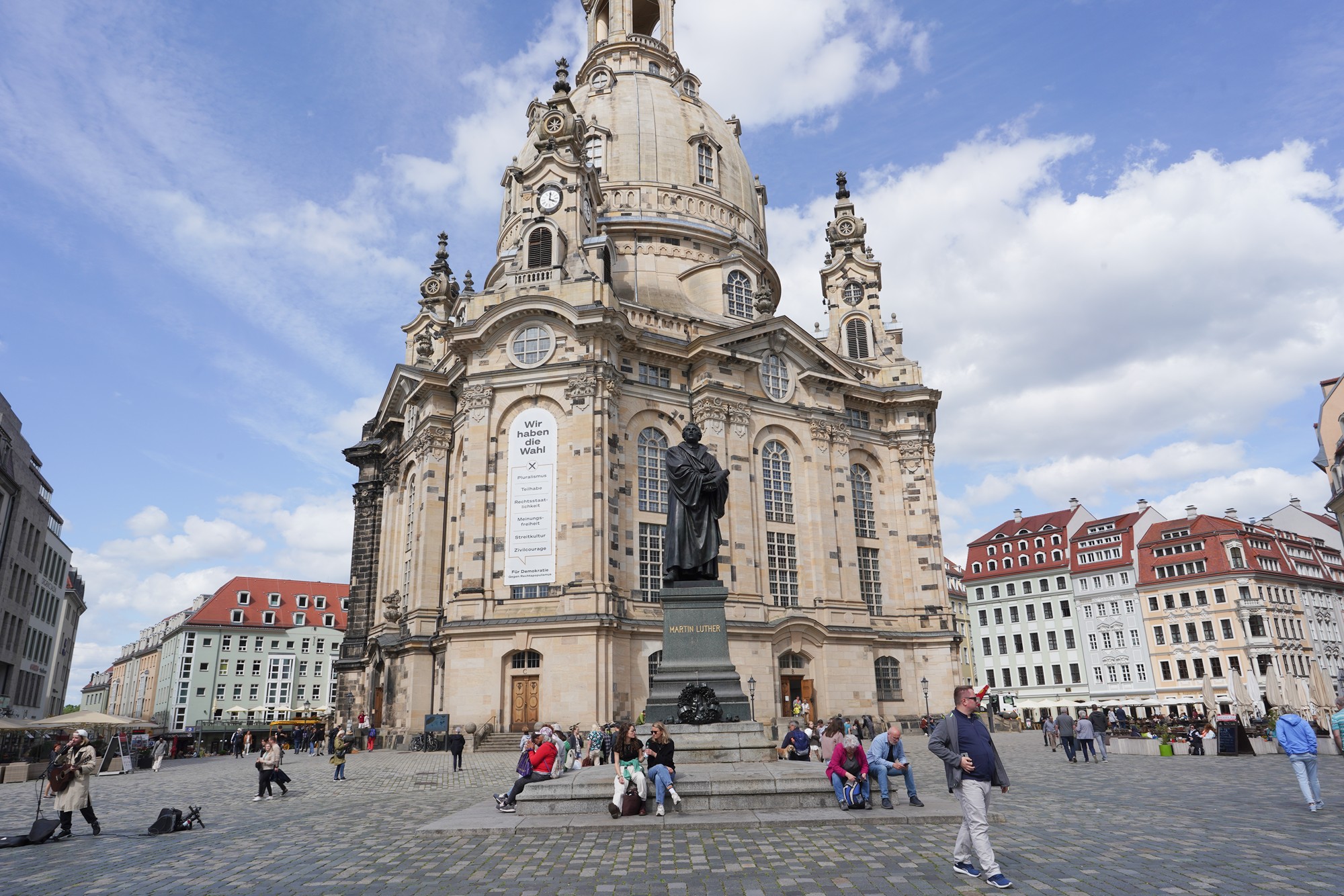
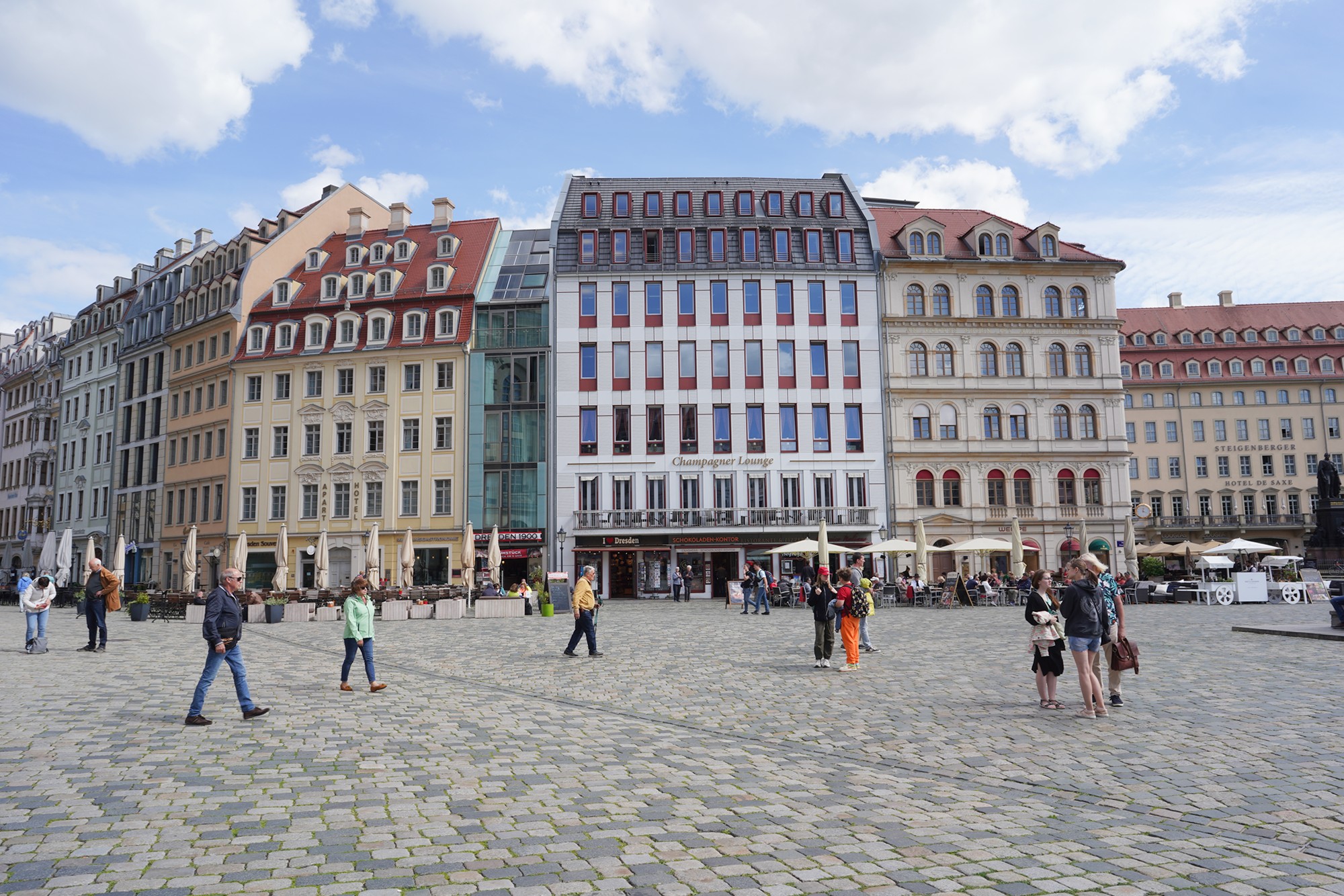
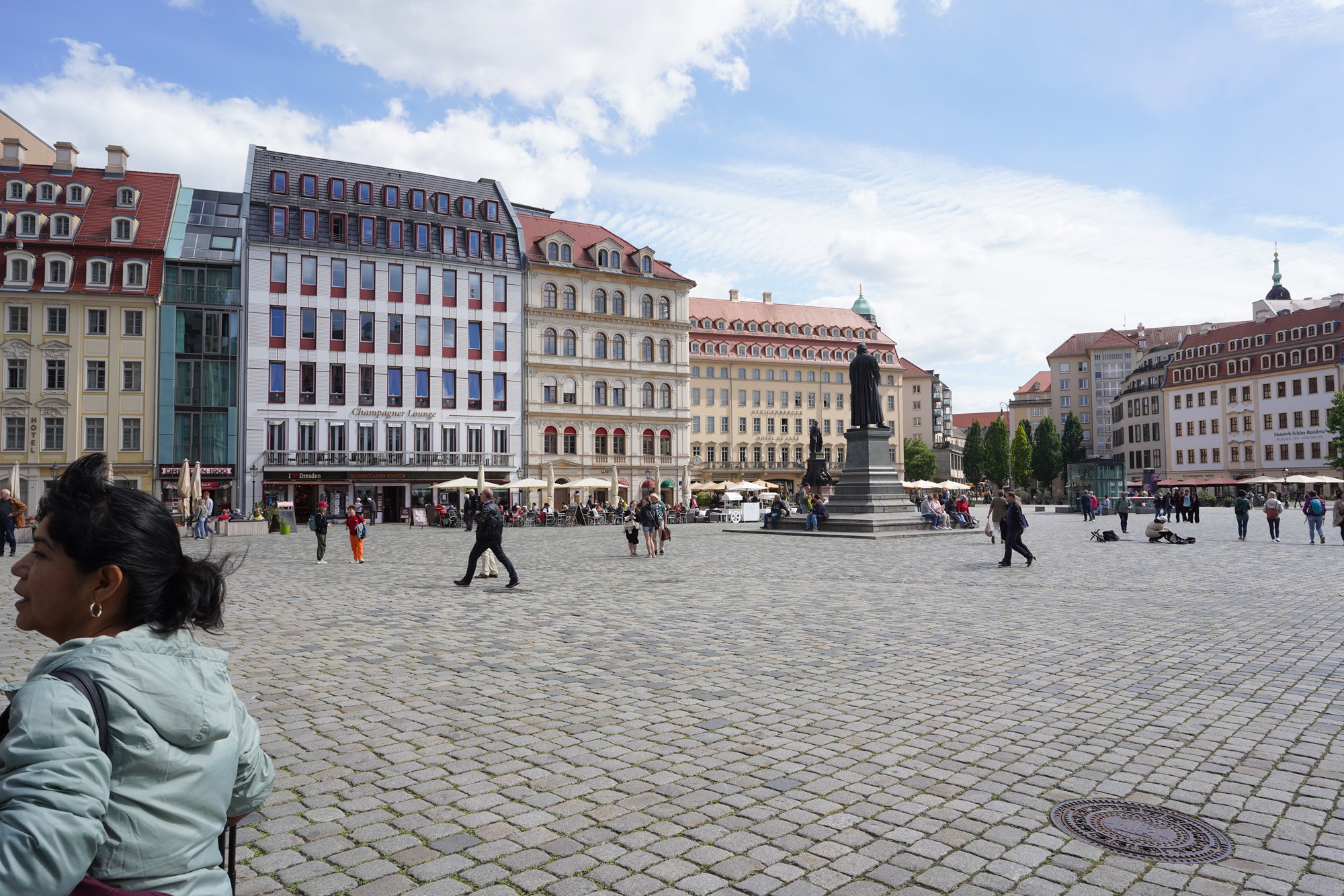
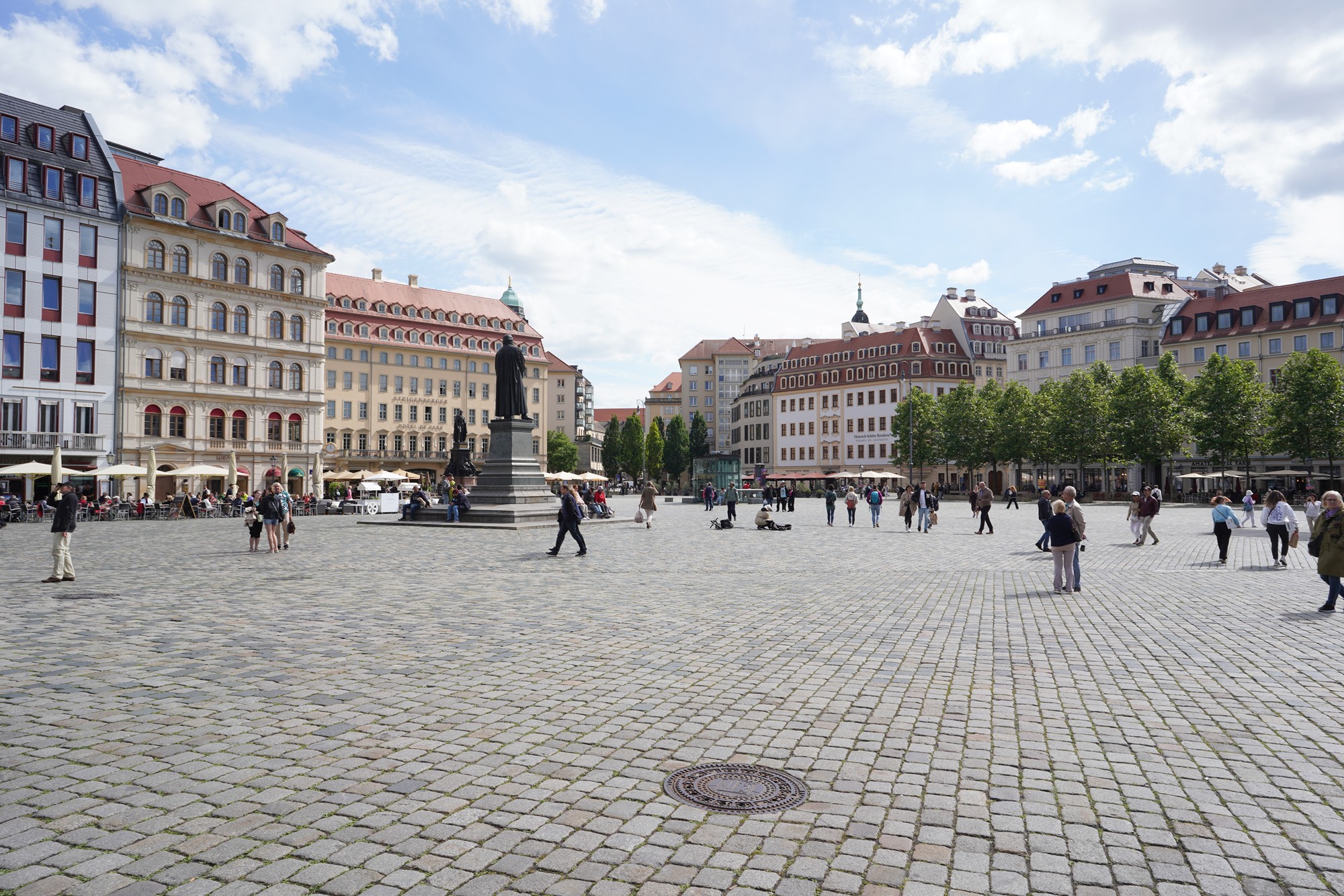
Inside the Frauenkirche Church
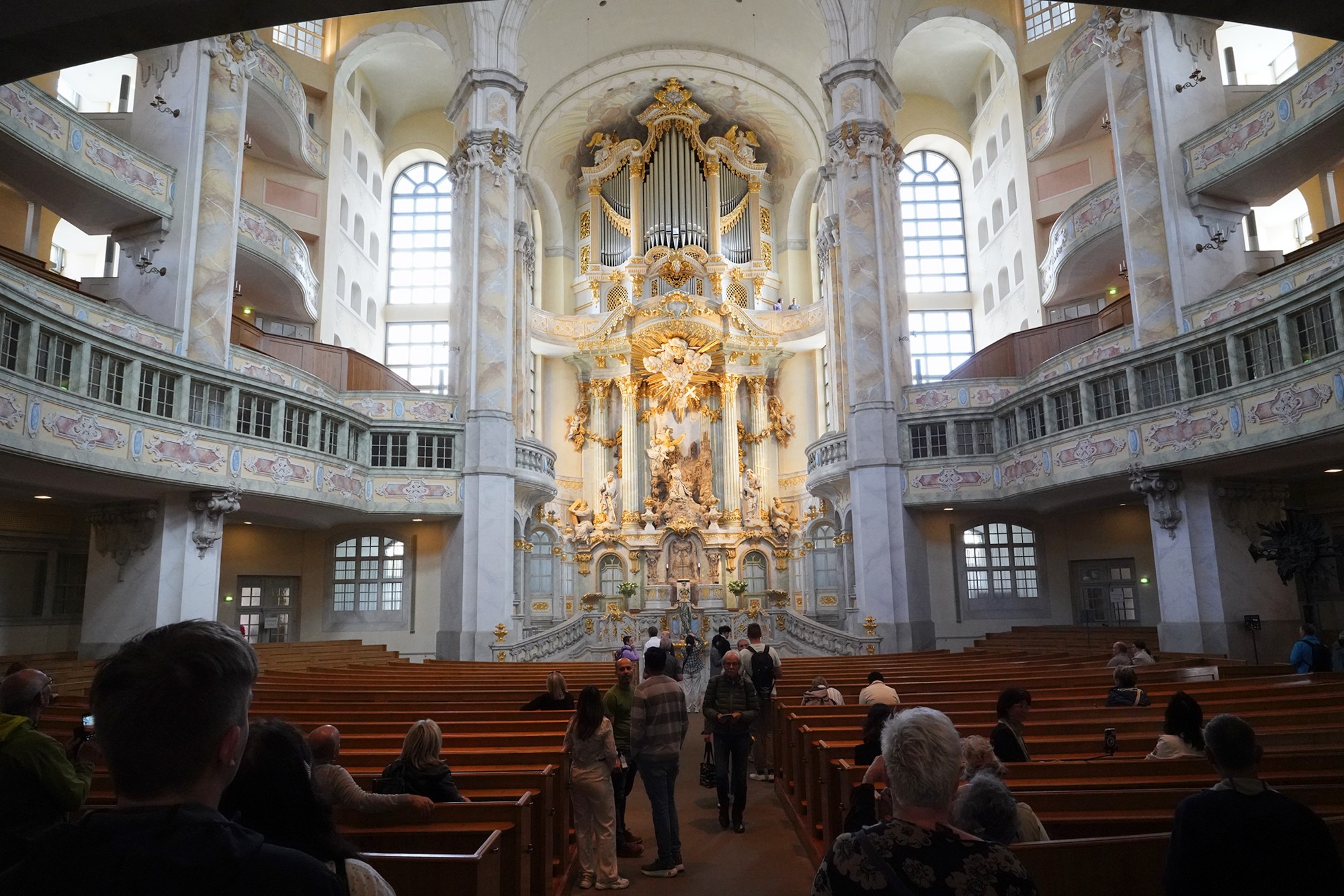
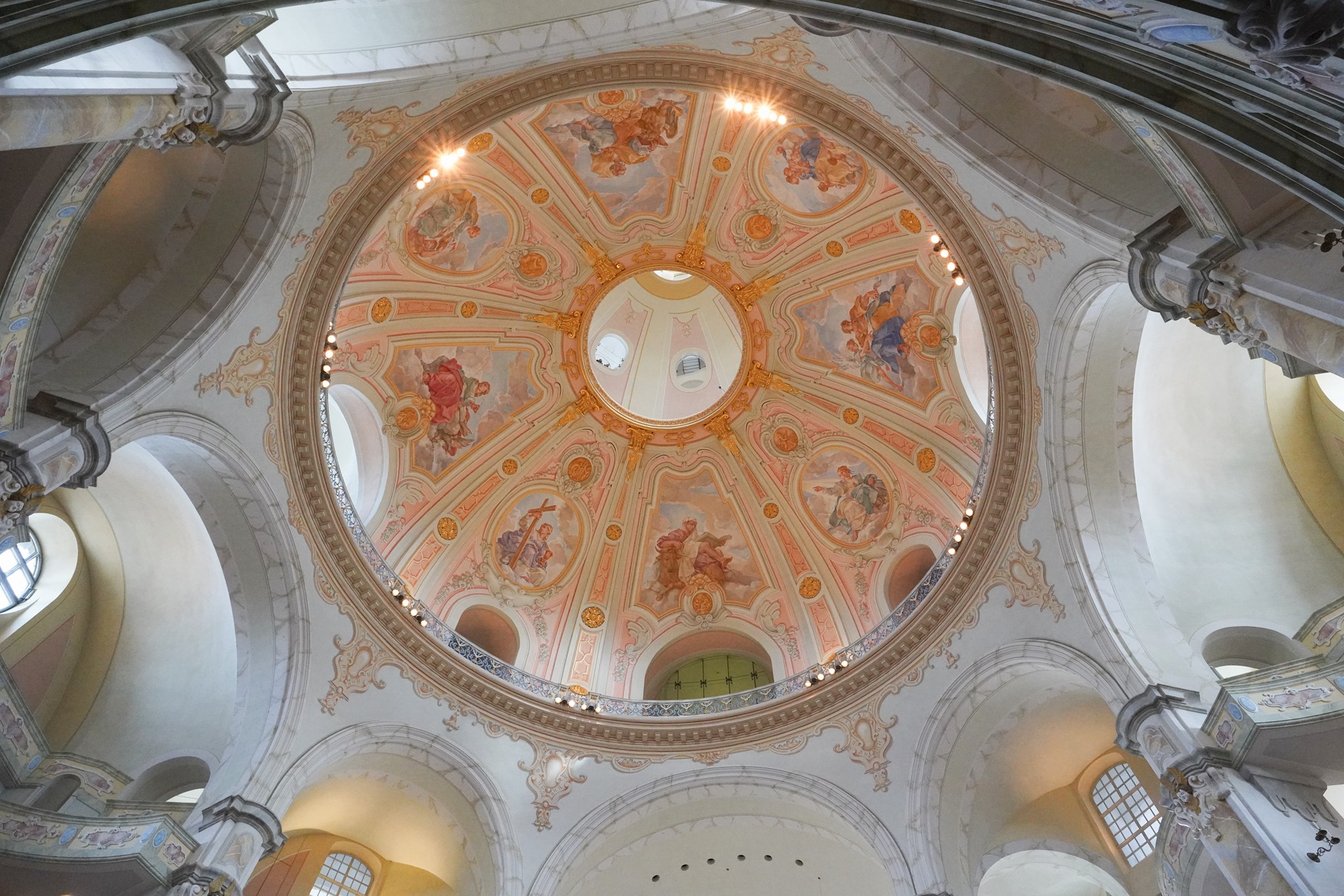
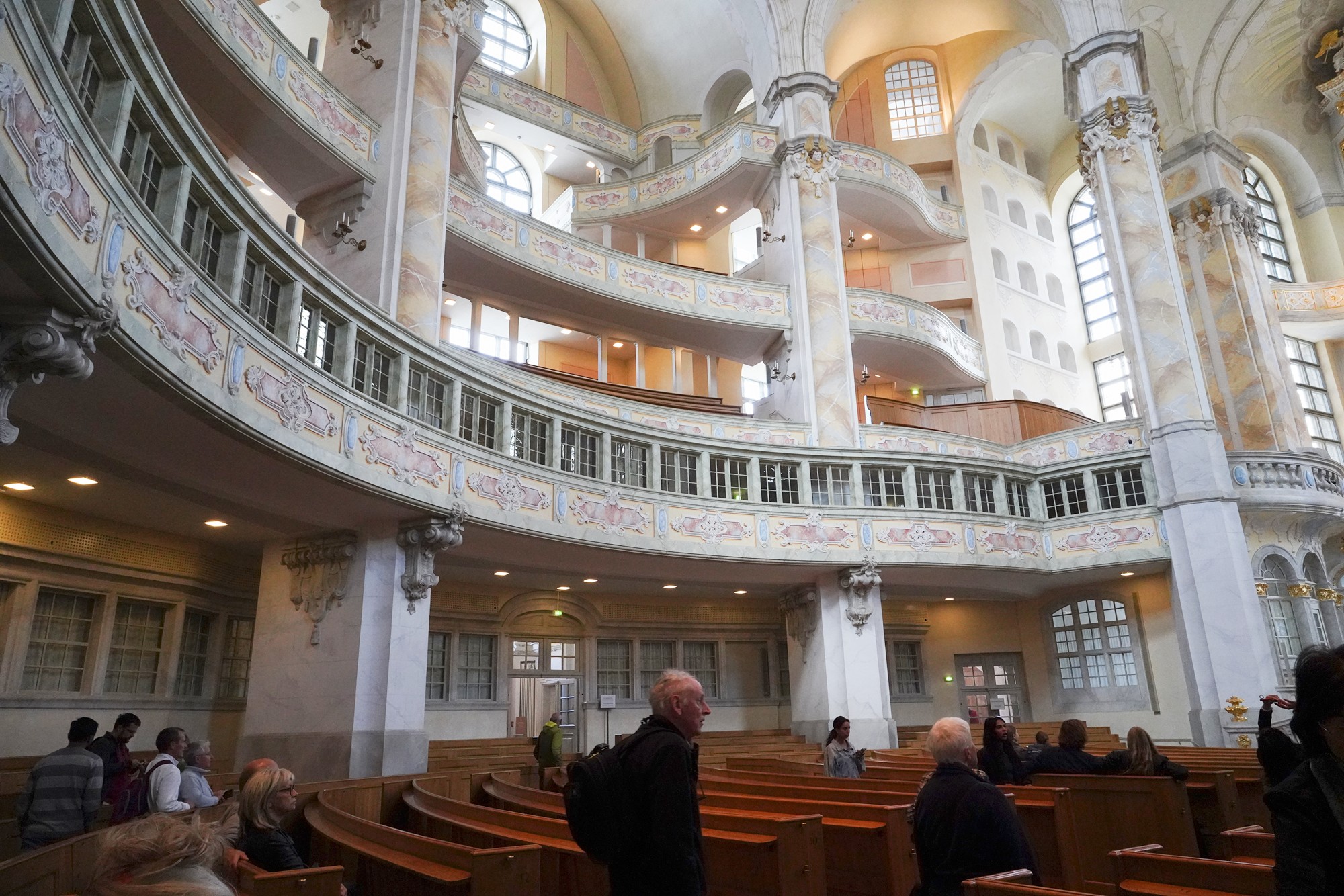
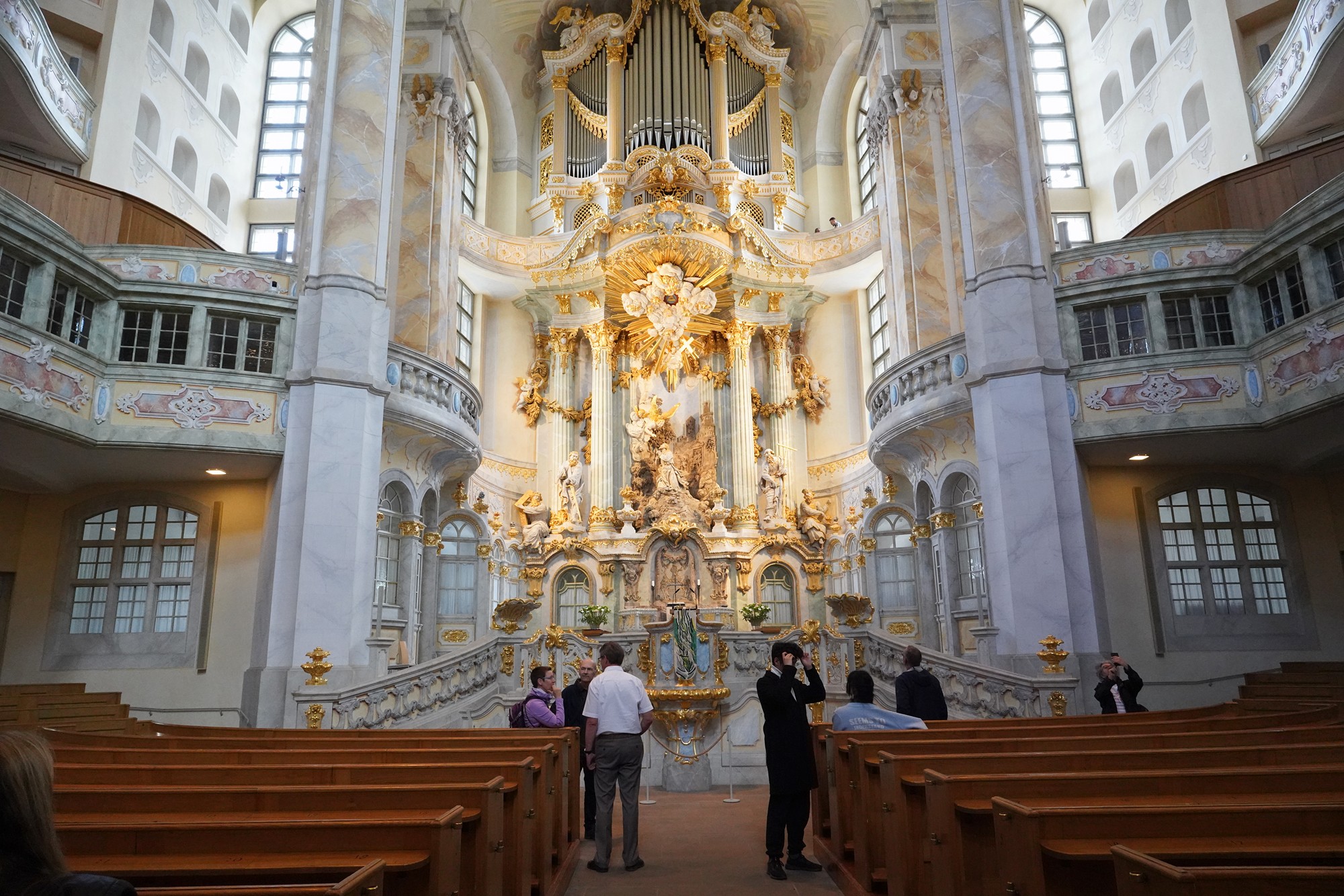
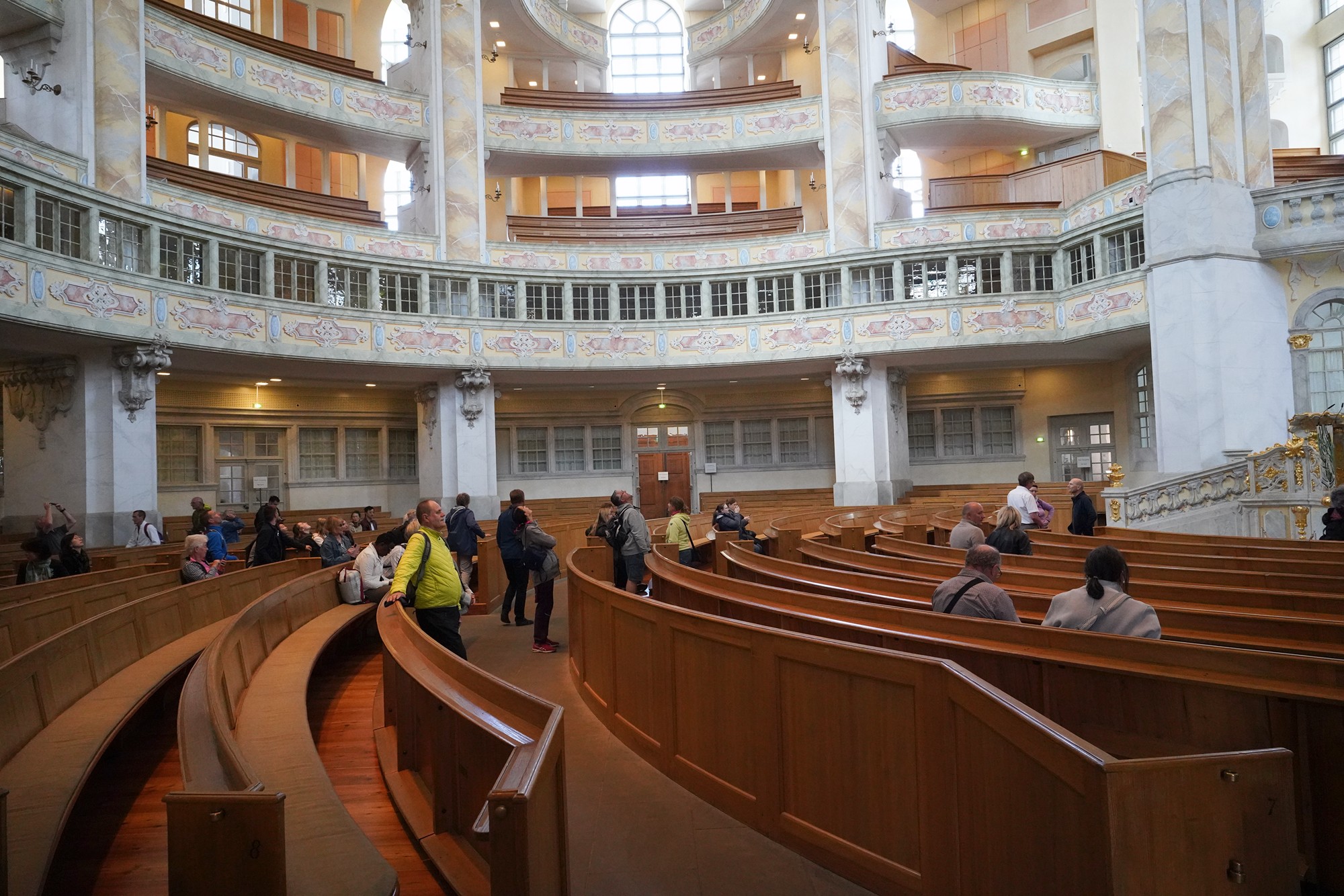
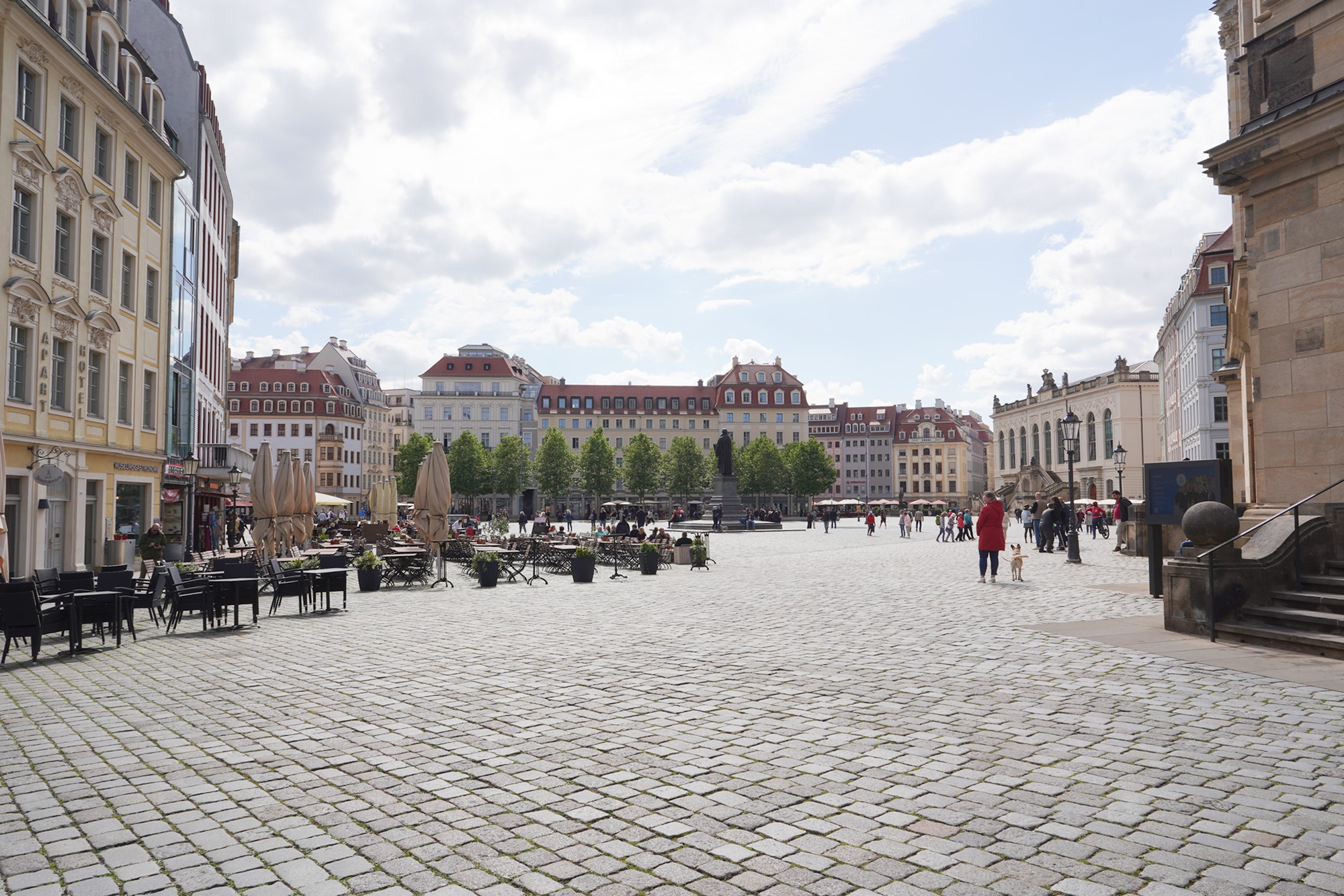
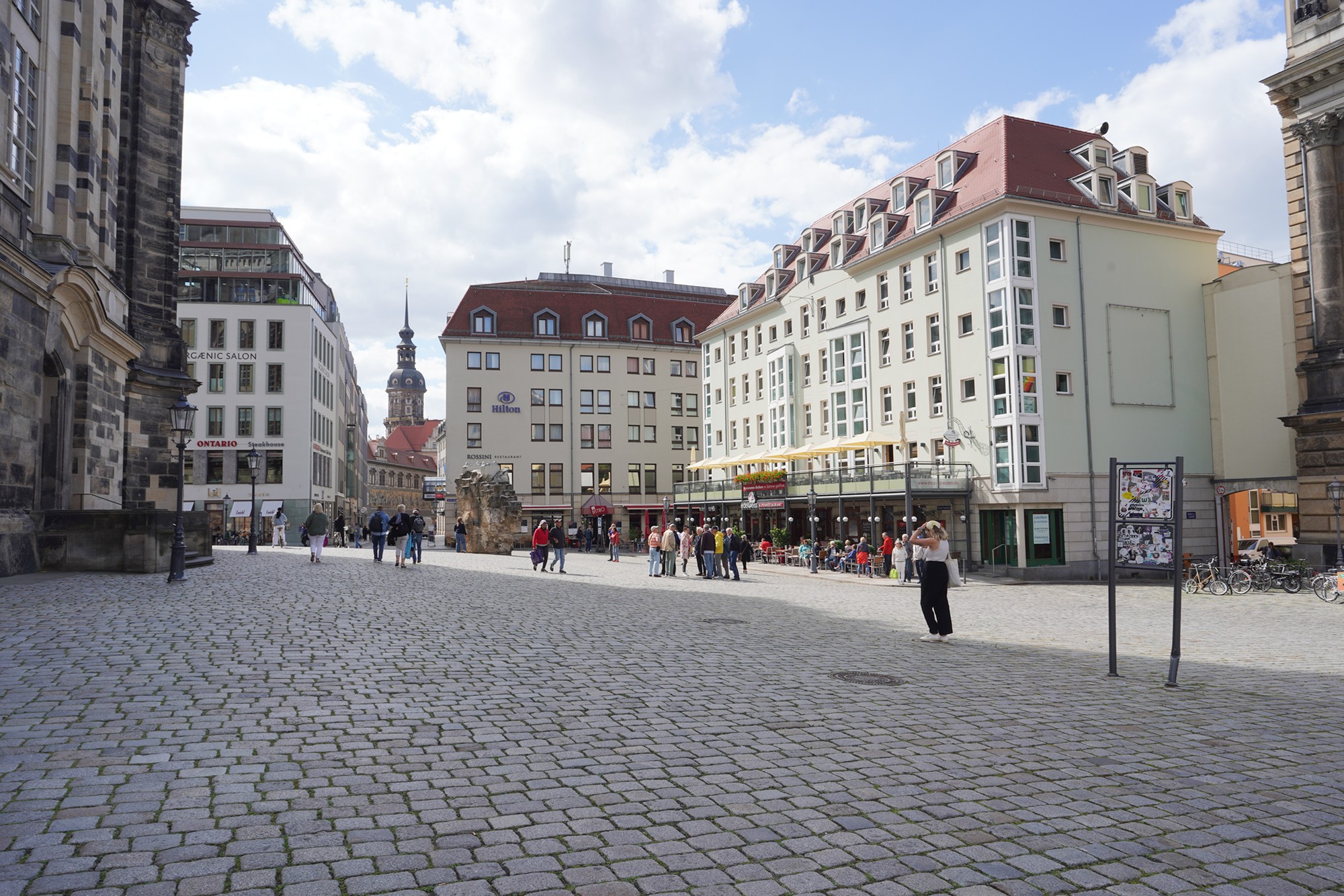
The back side of Frauenkirche Church
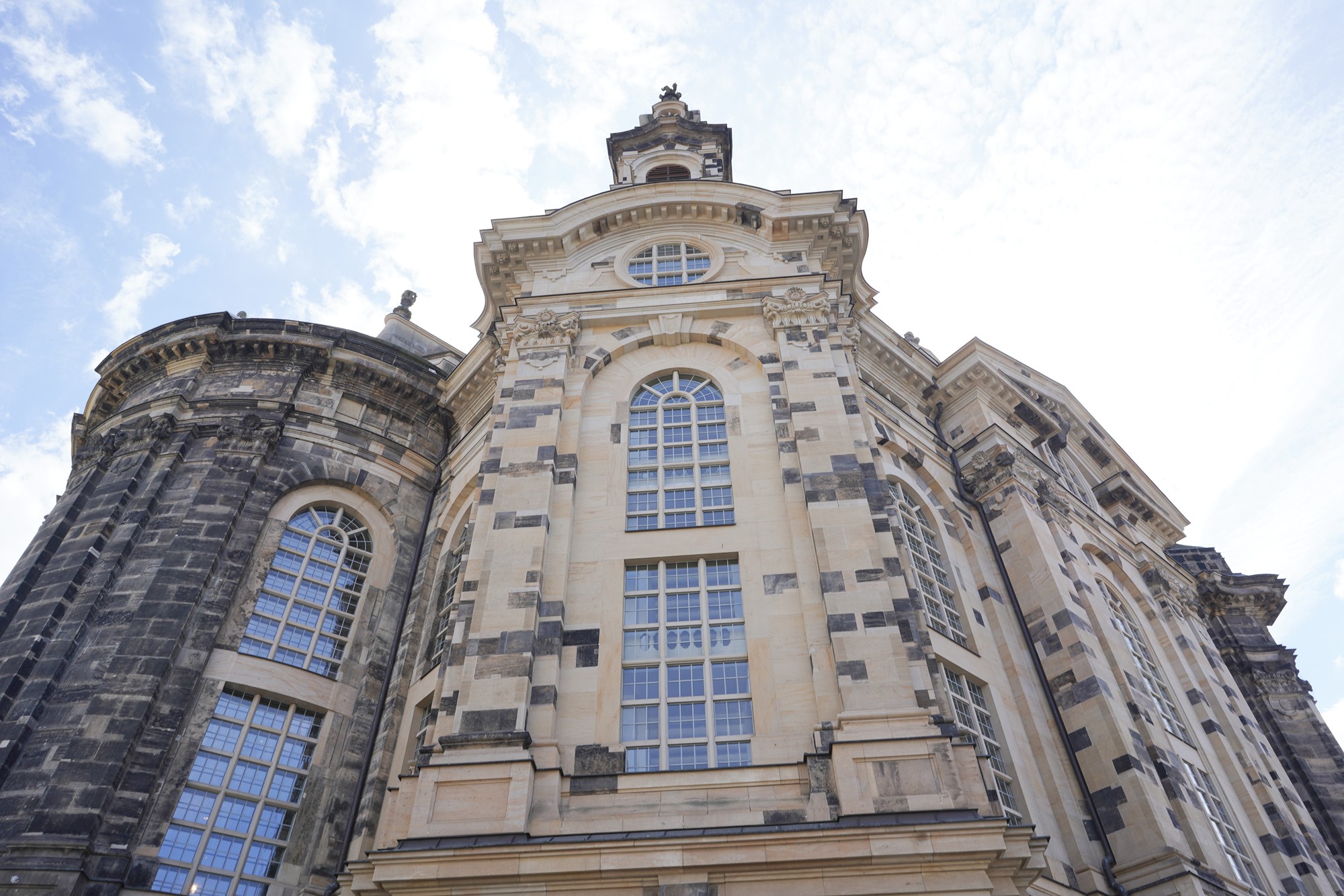
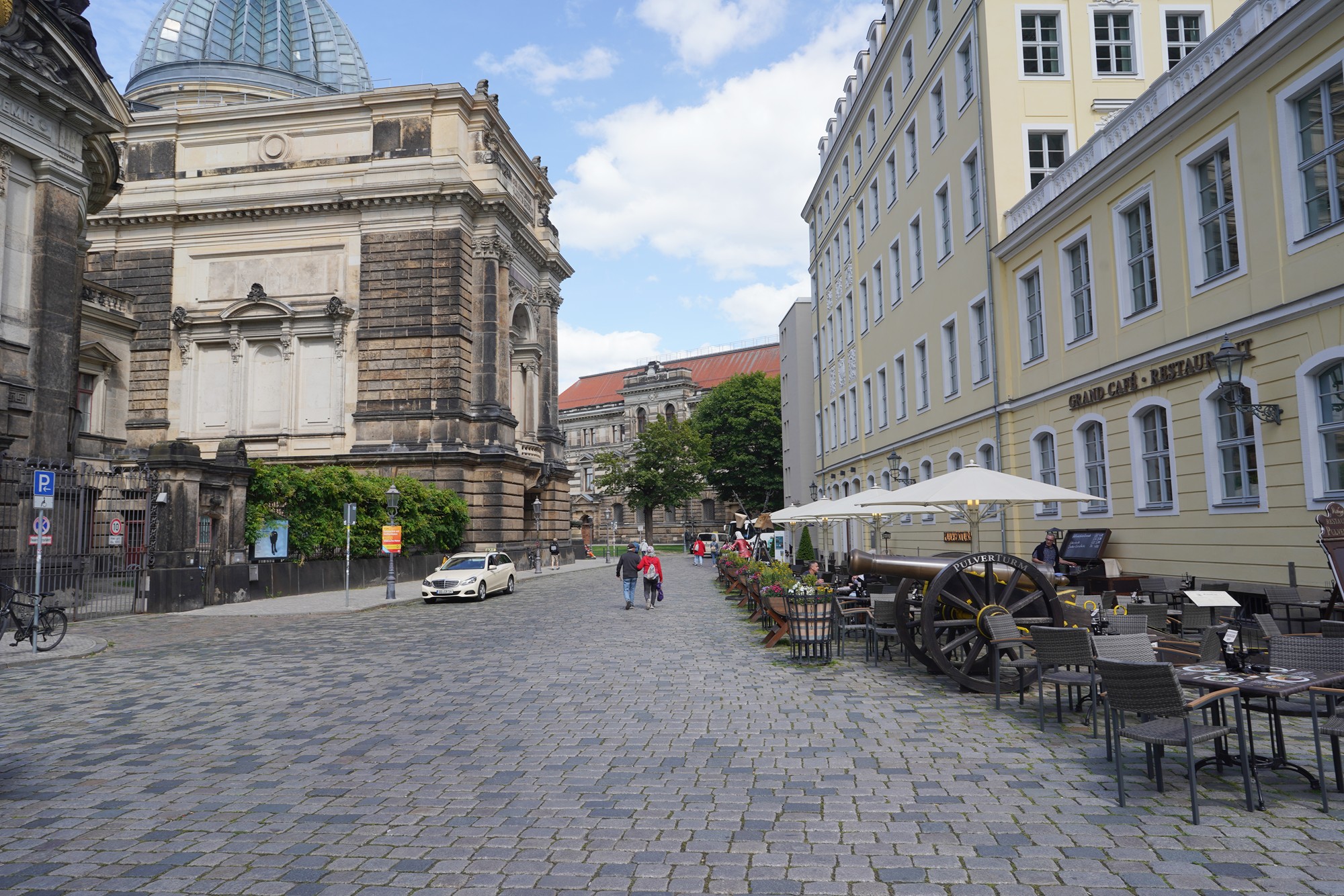
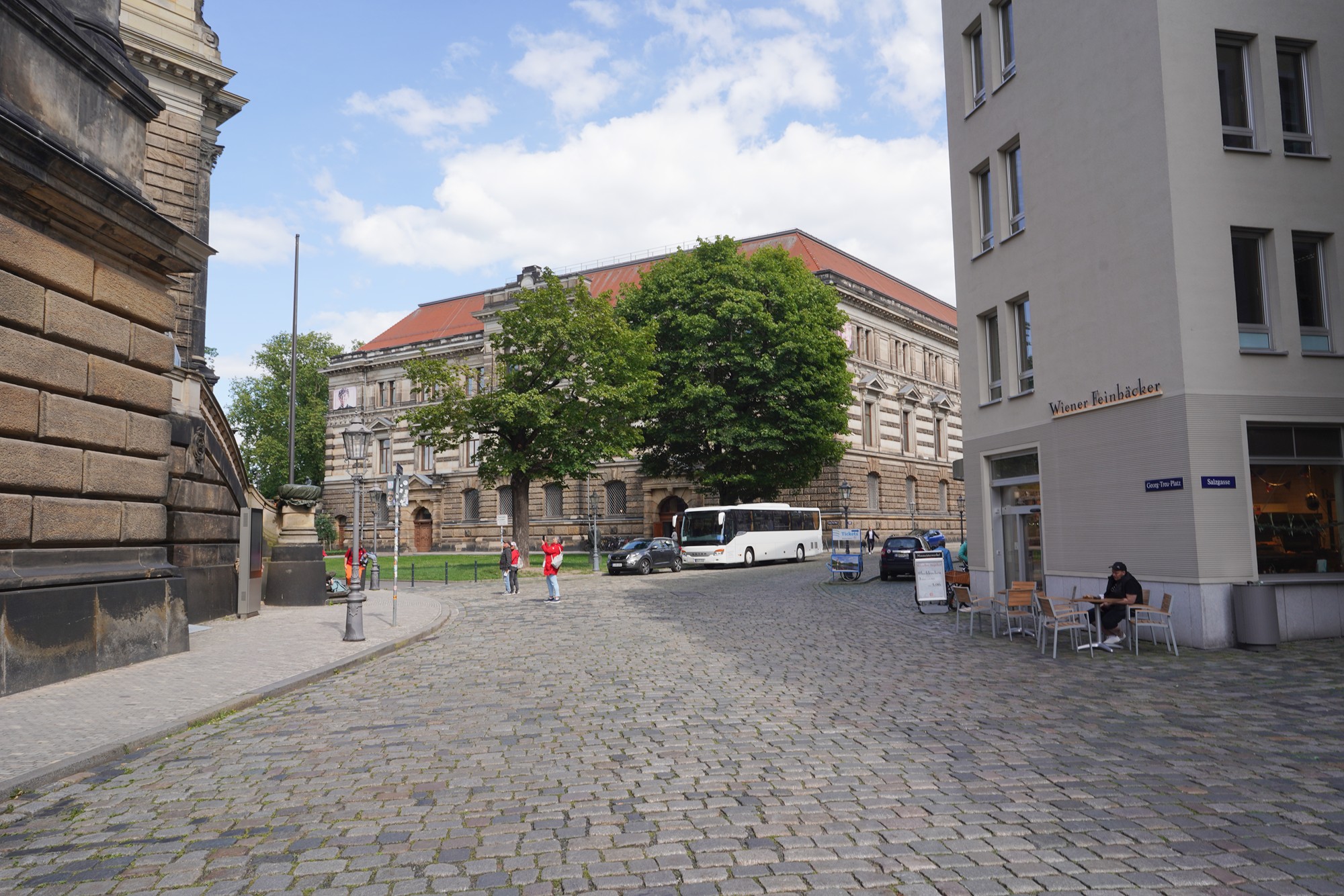
The back side
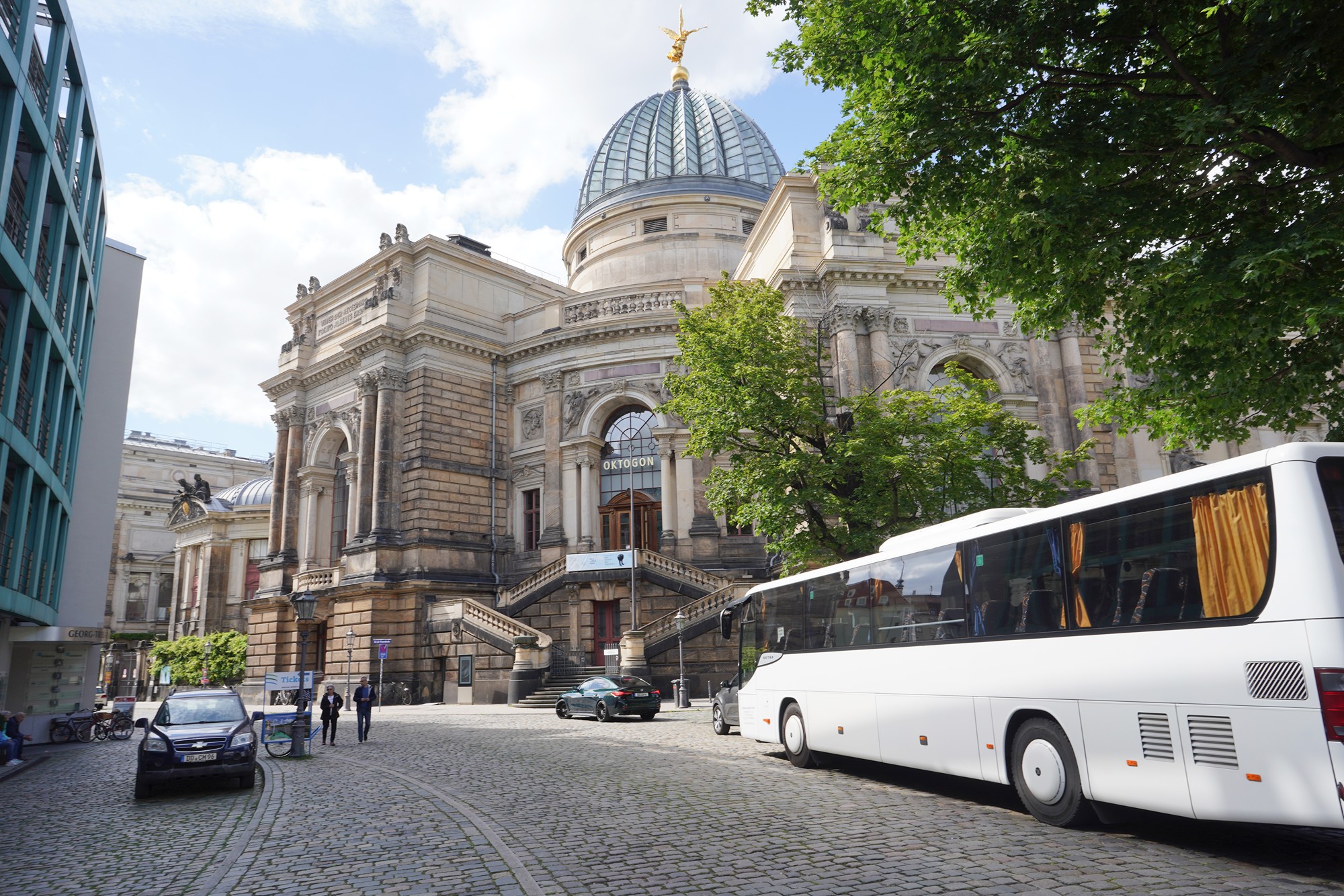
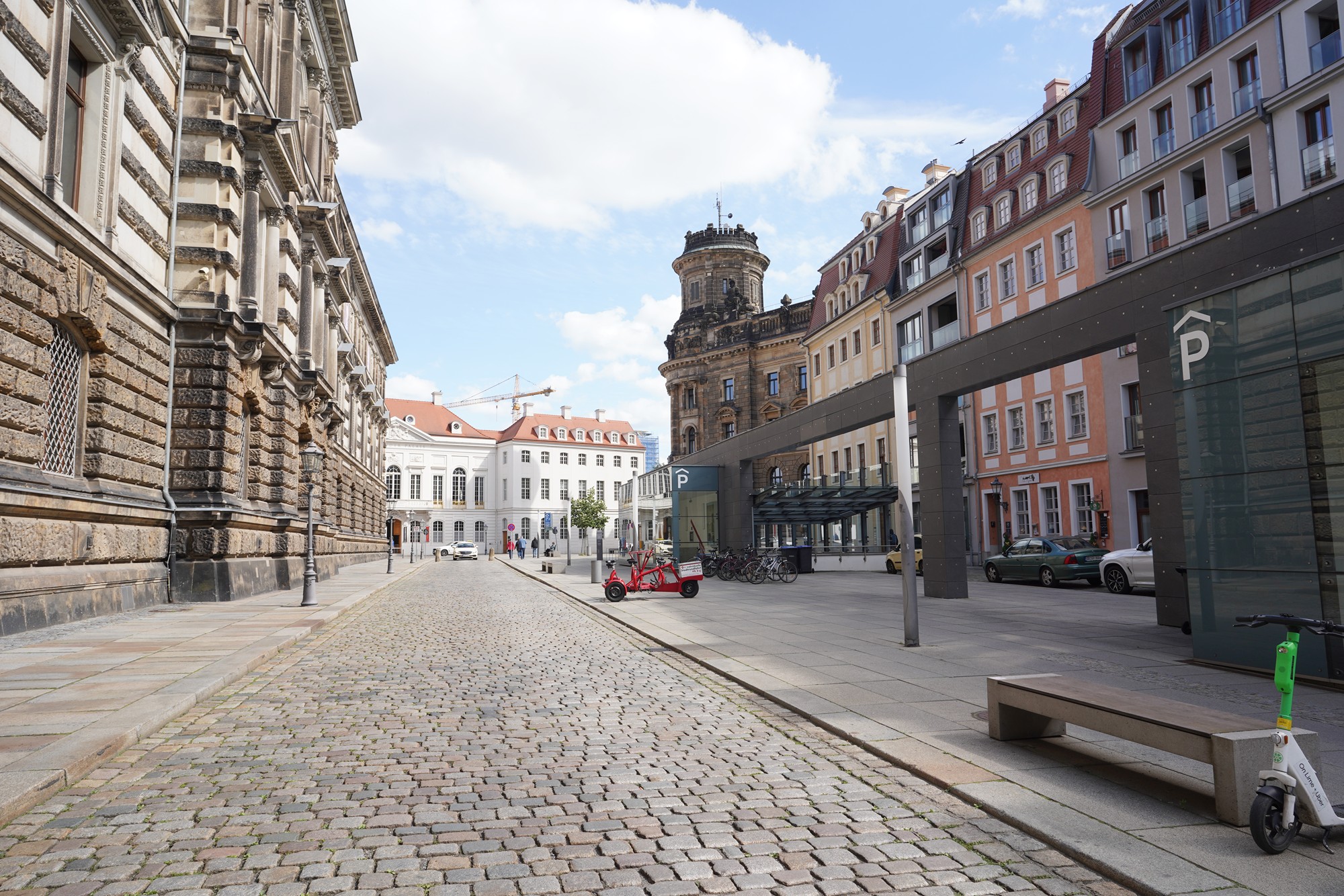
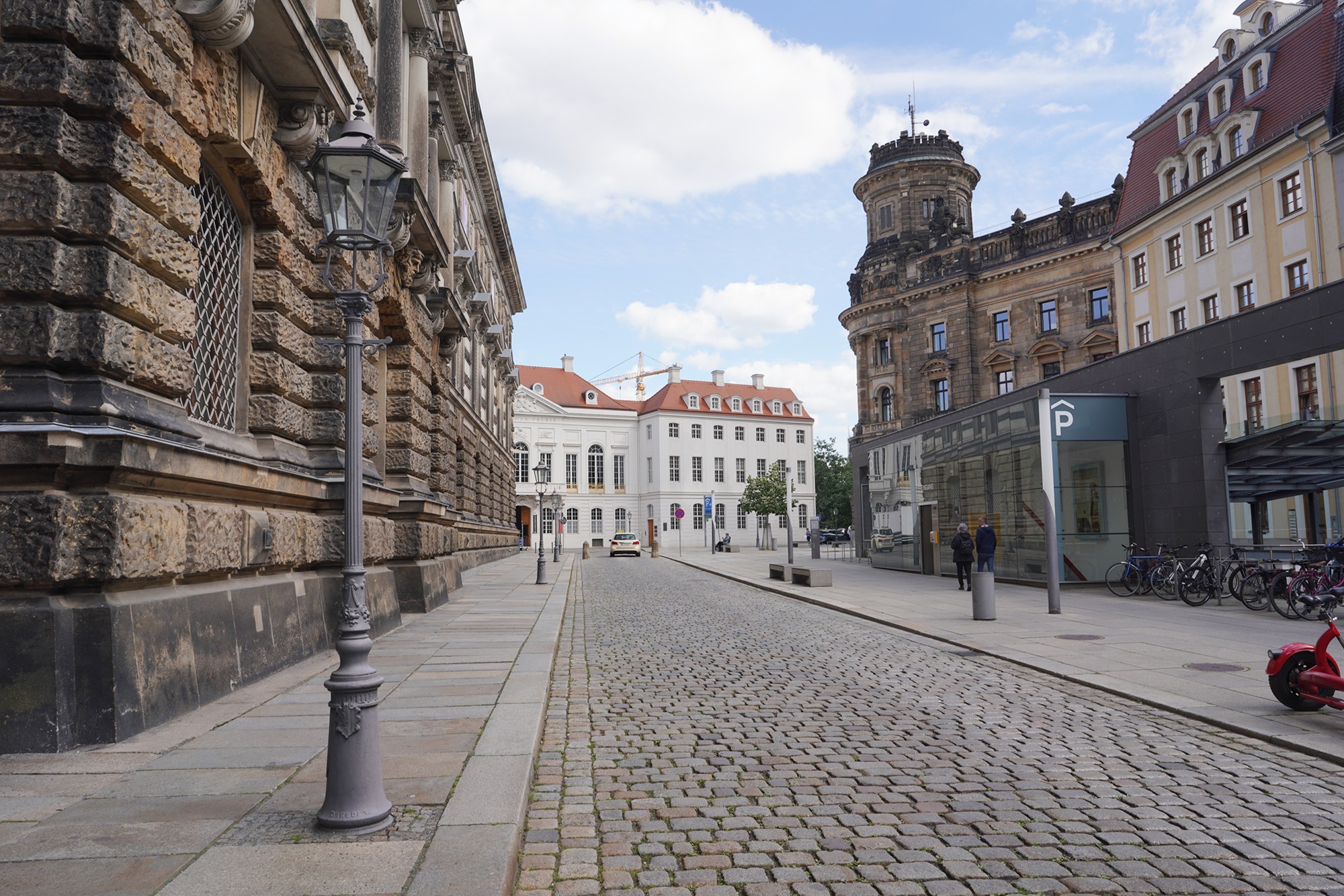
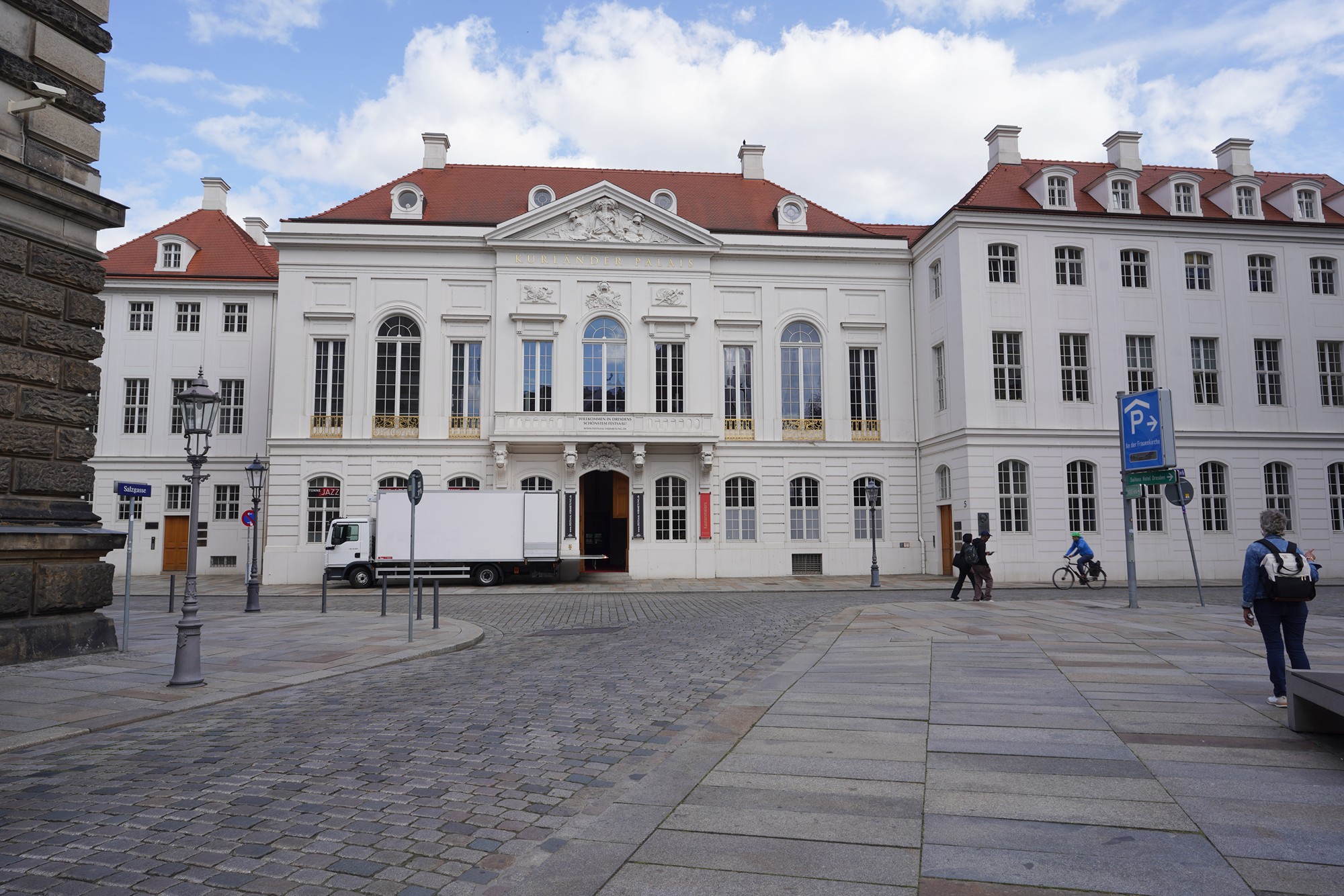
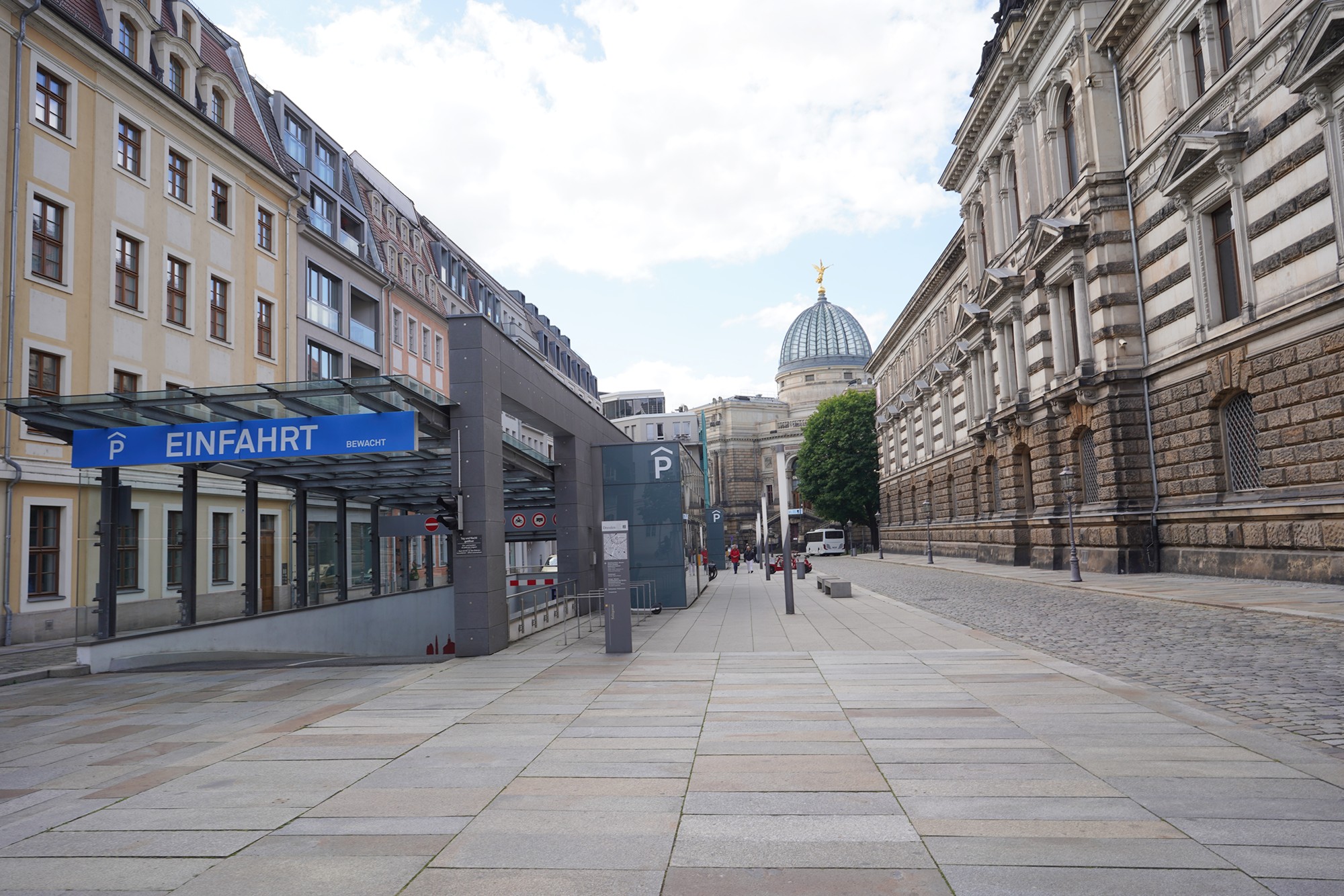
I took a tram from this area to the train station
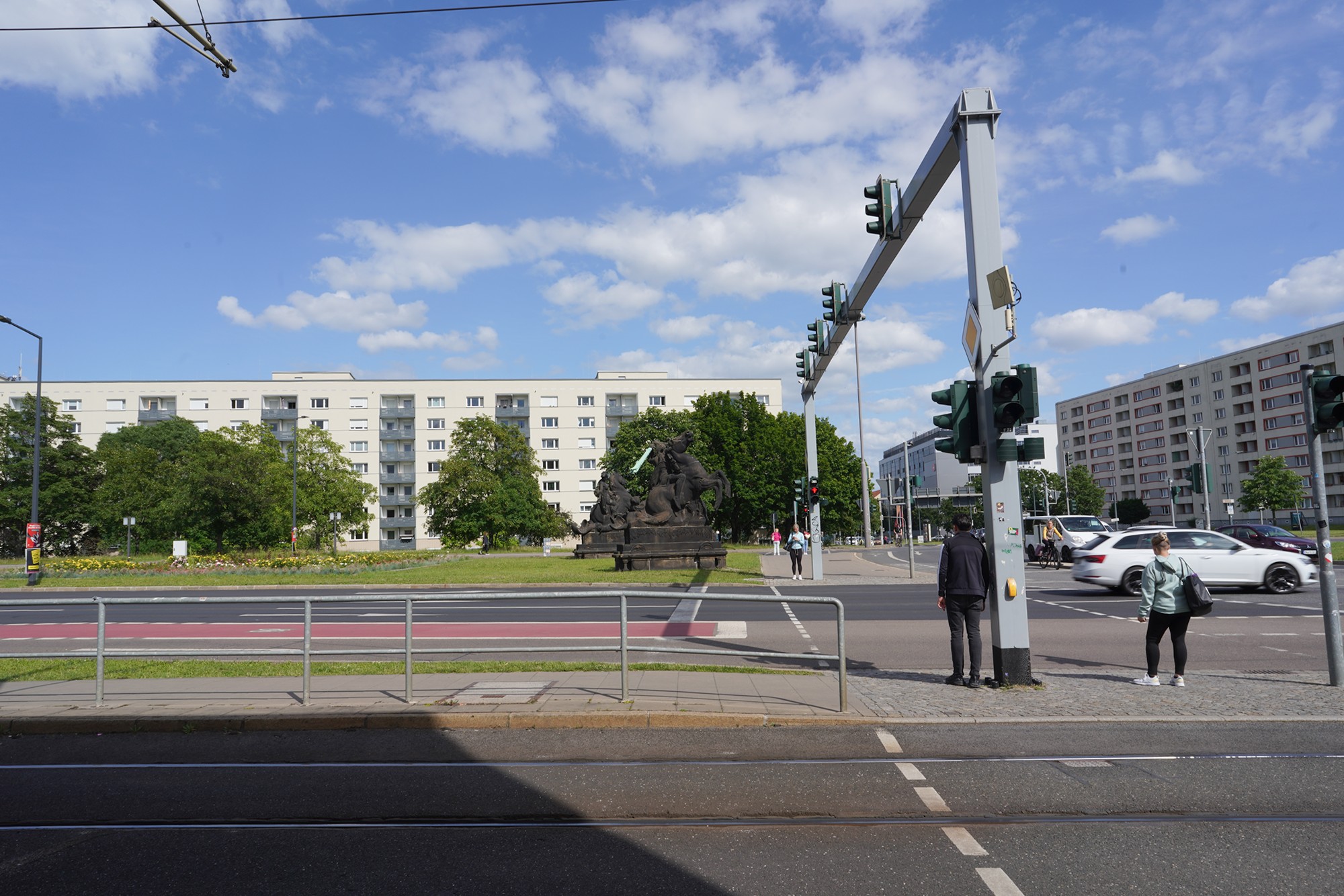
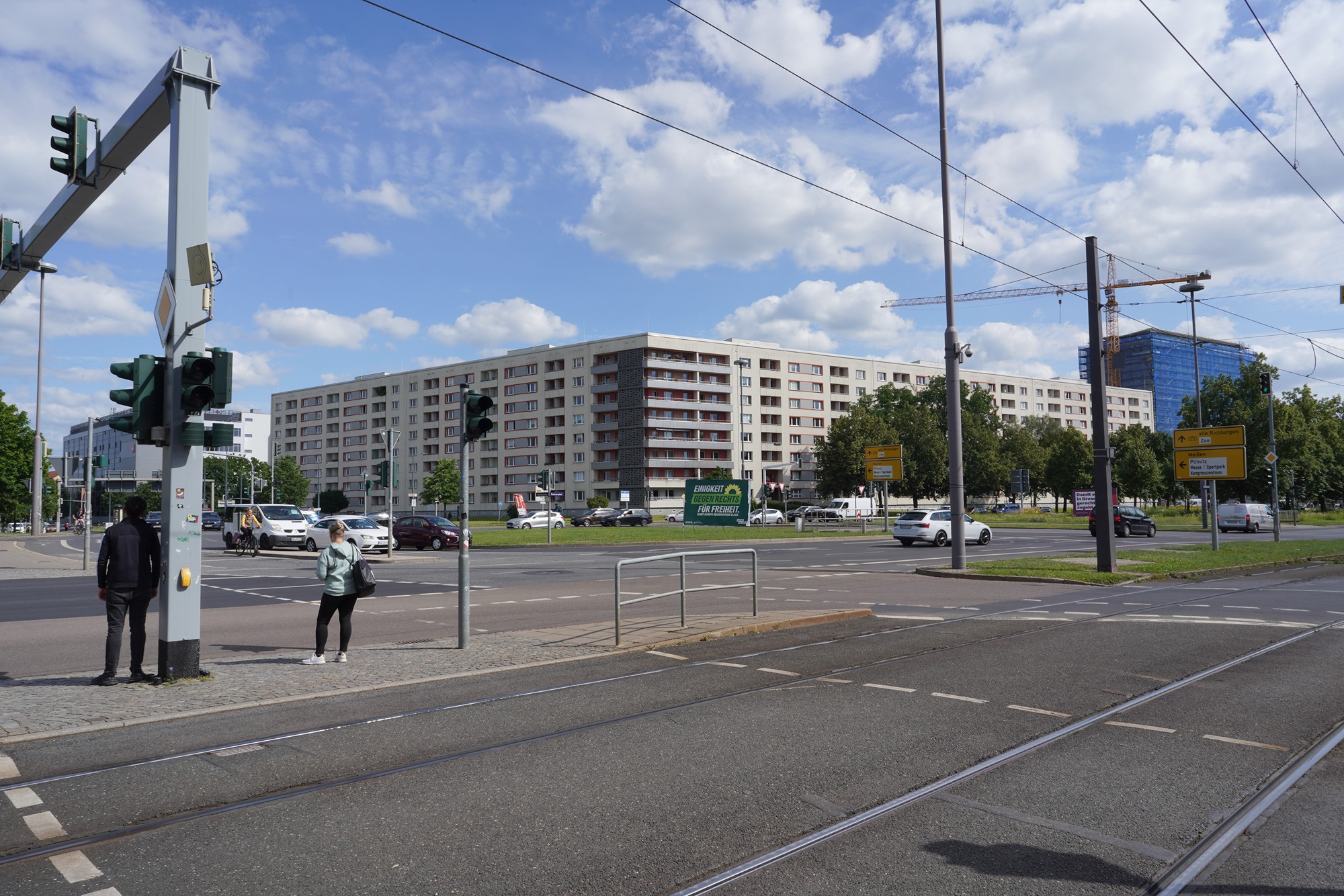
Dresden Train Station
